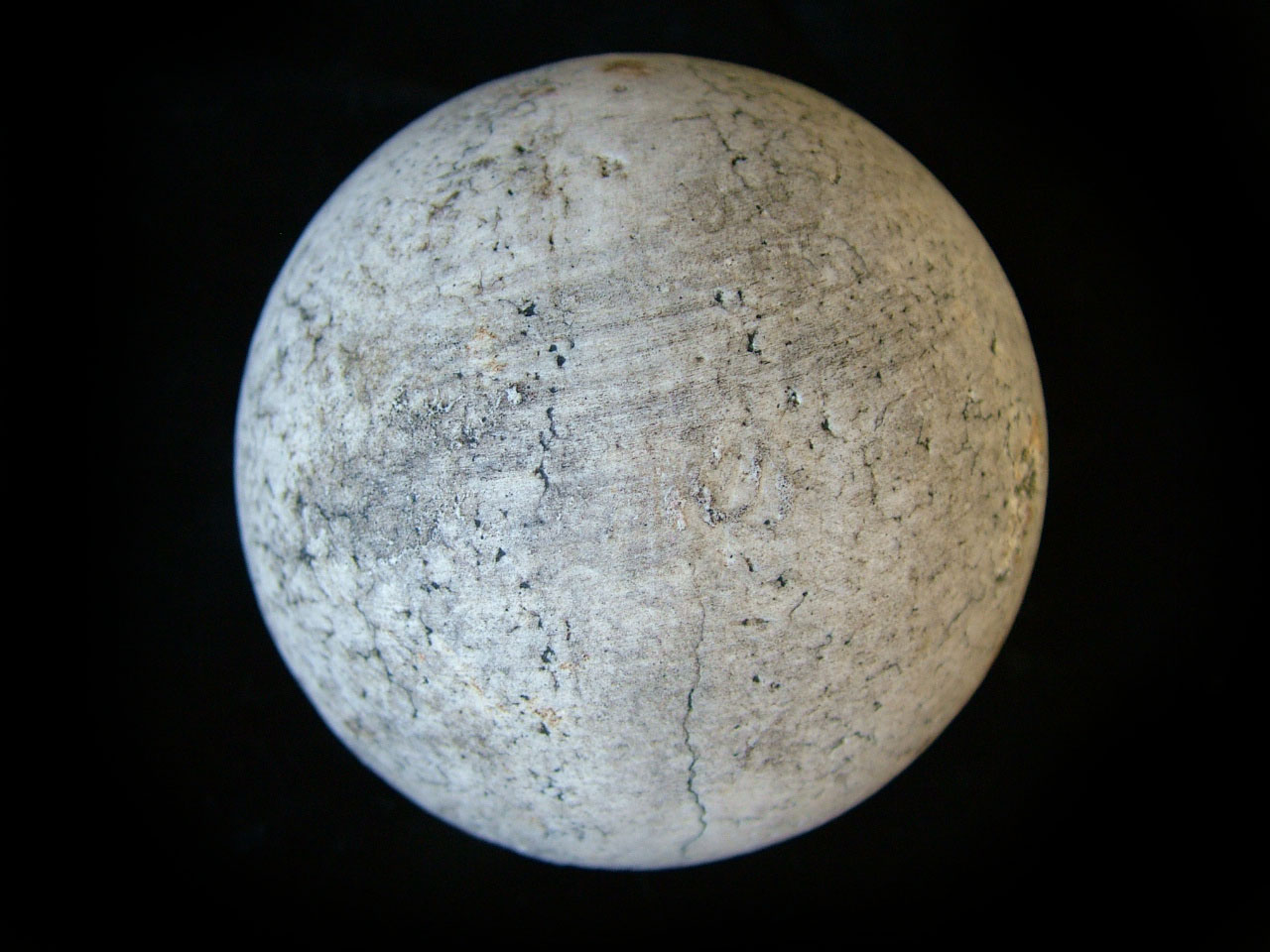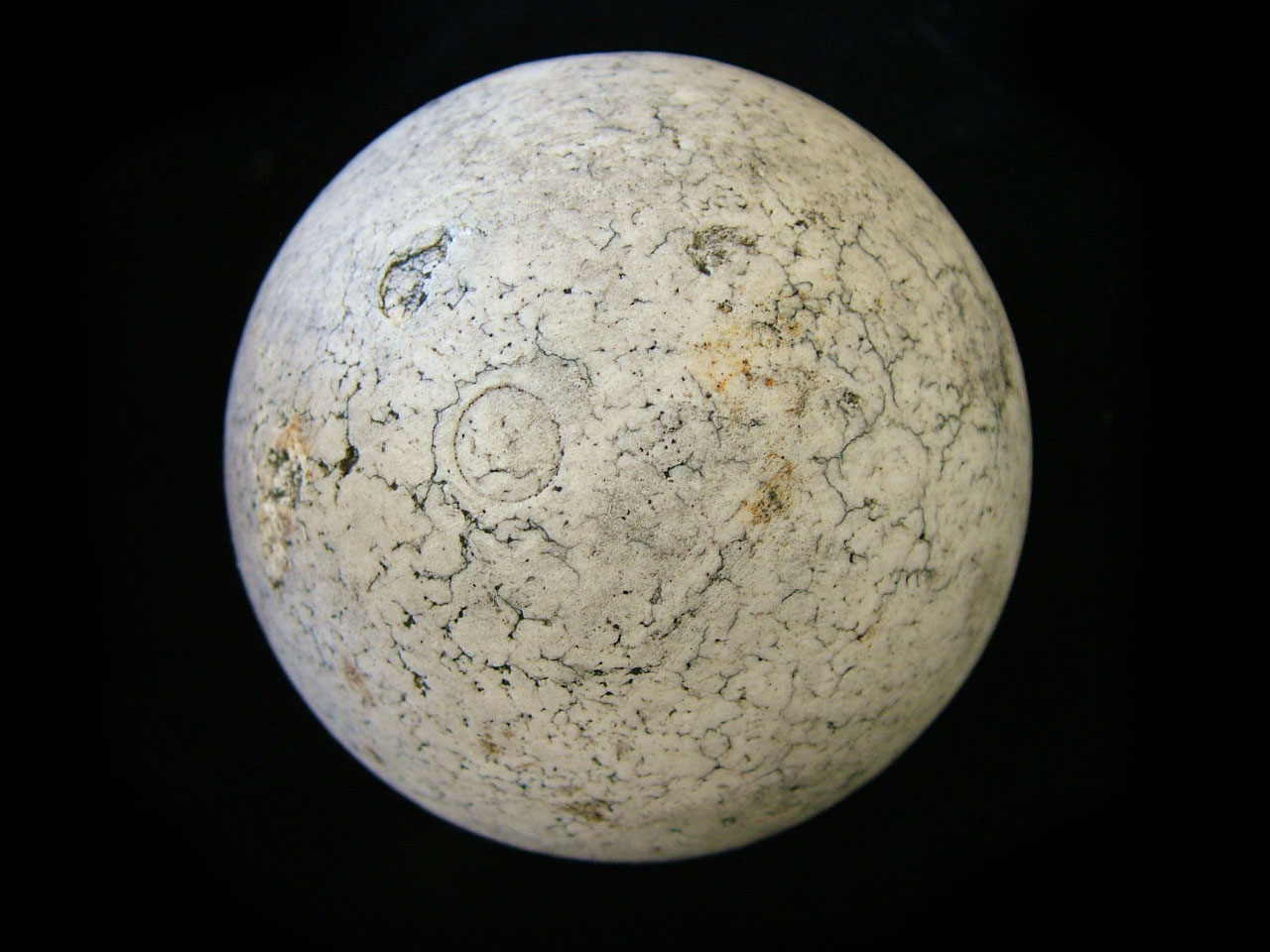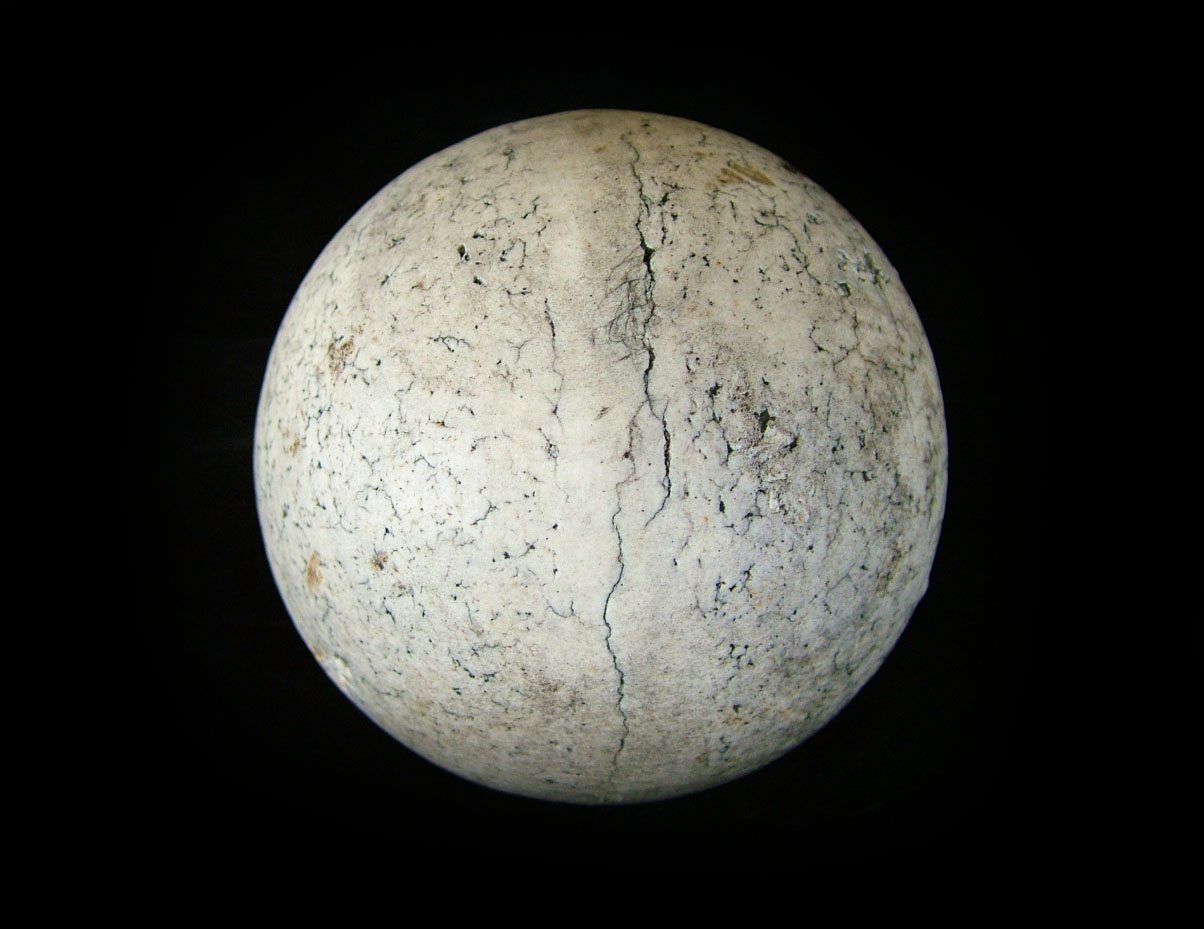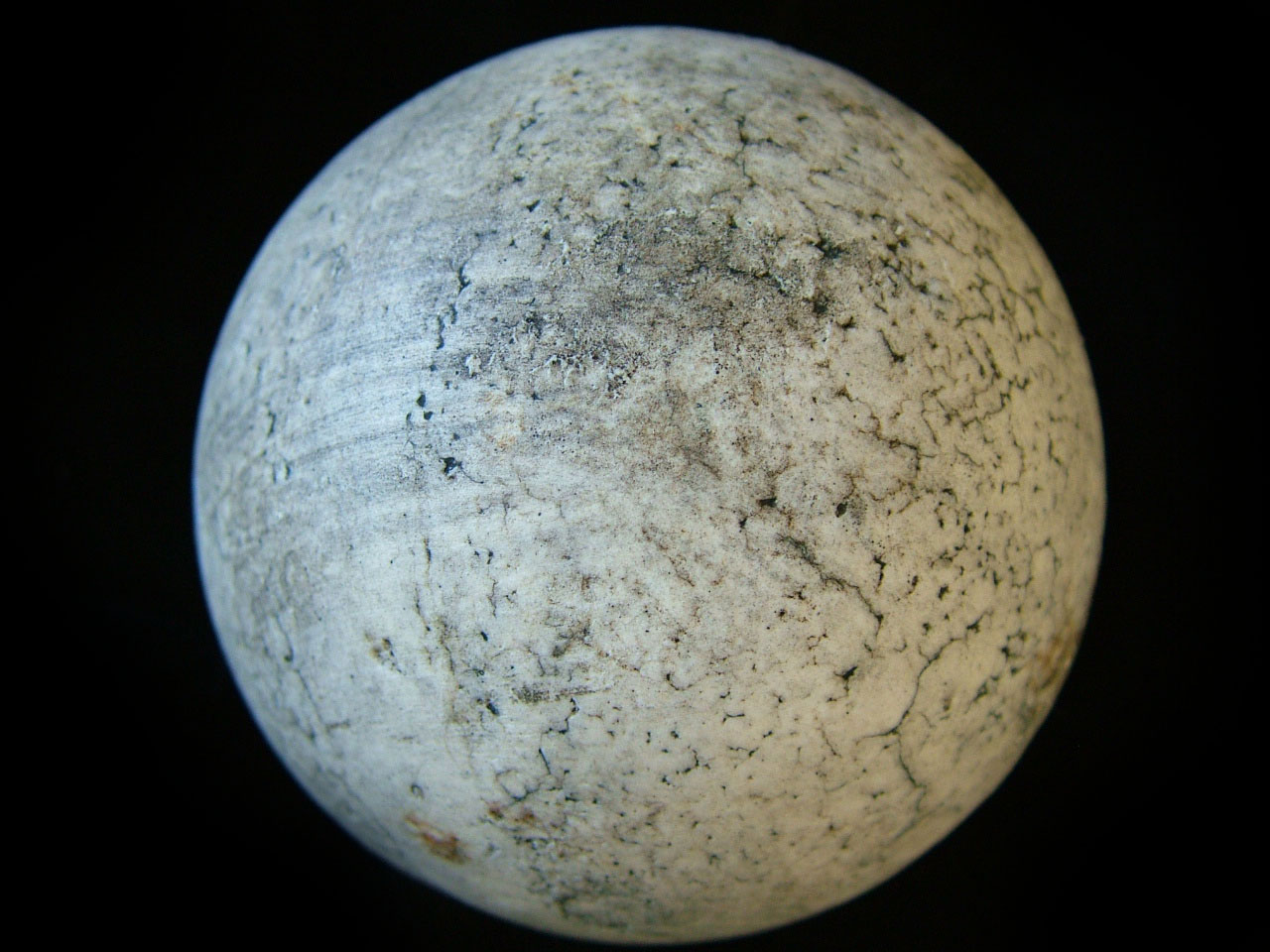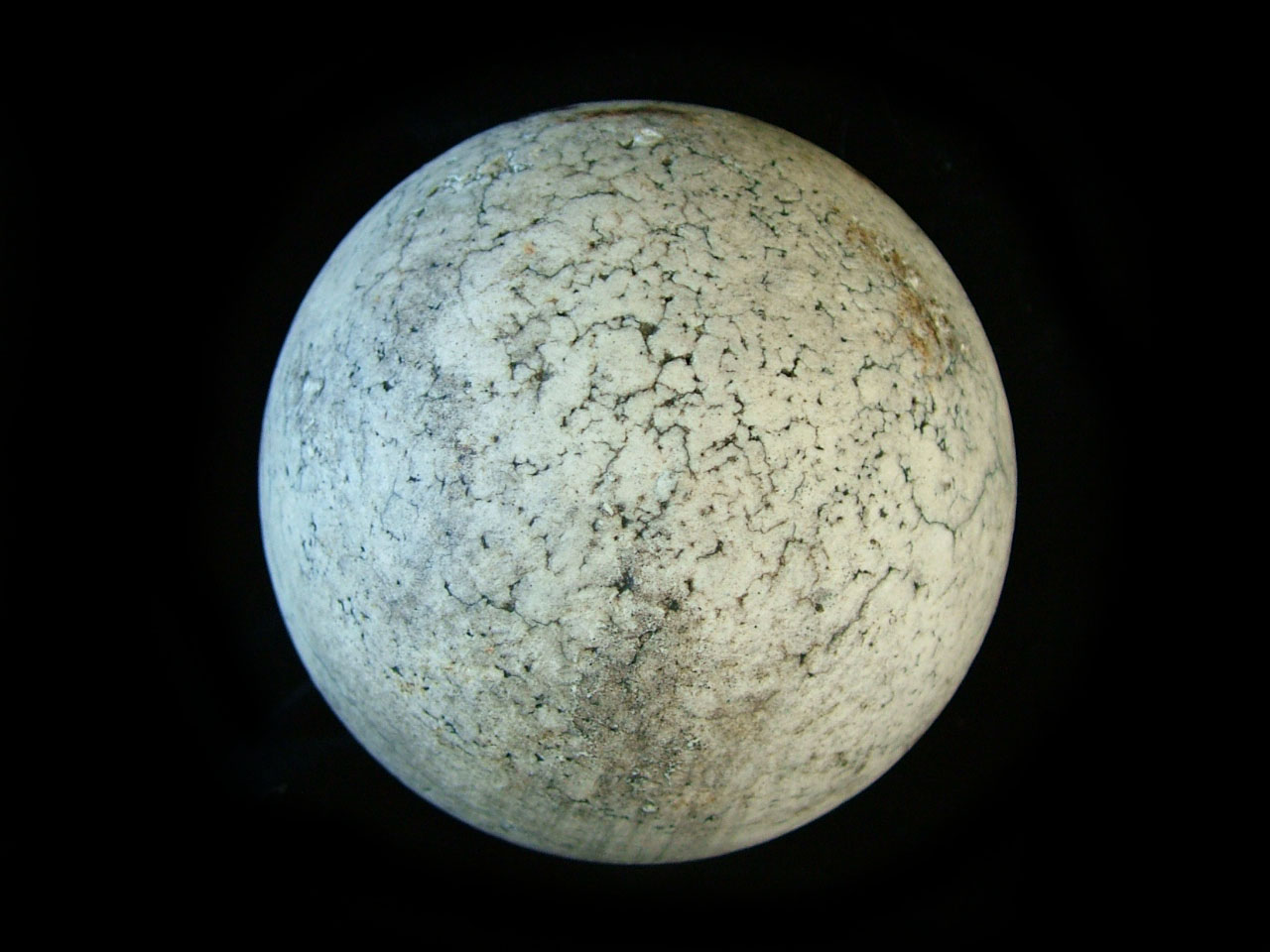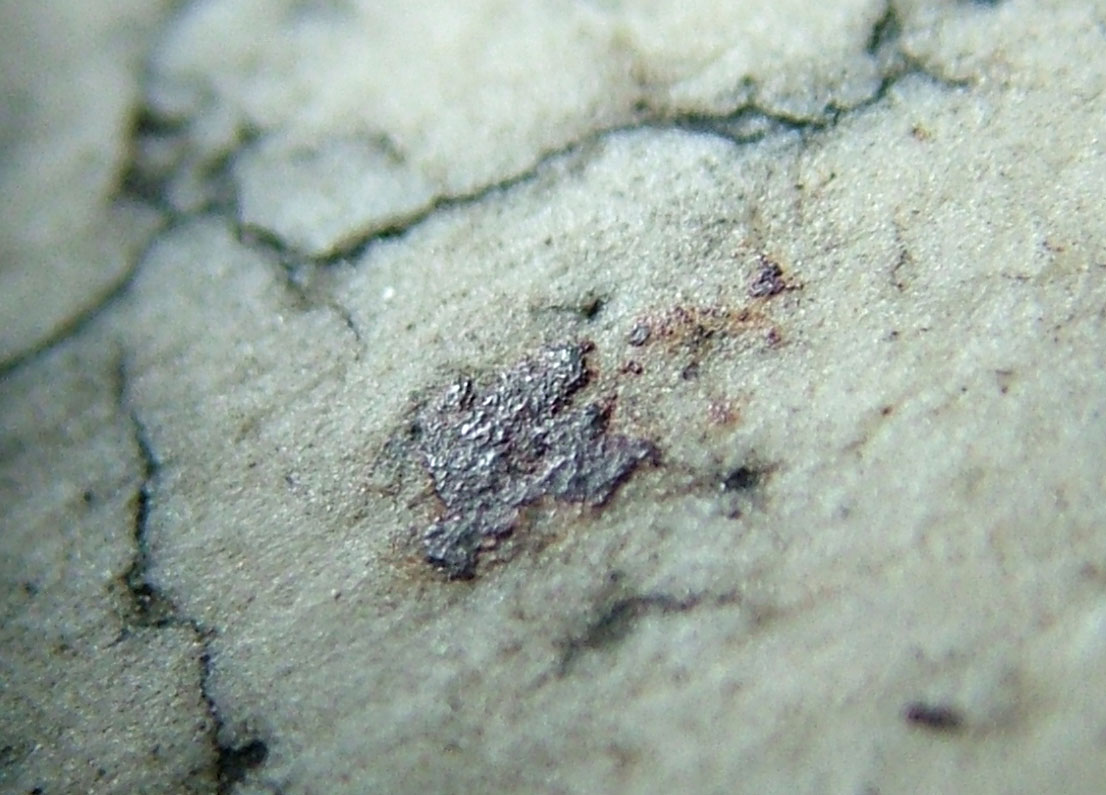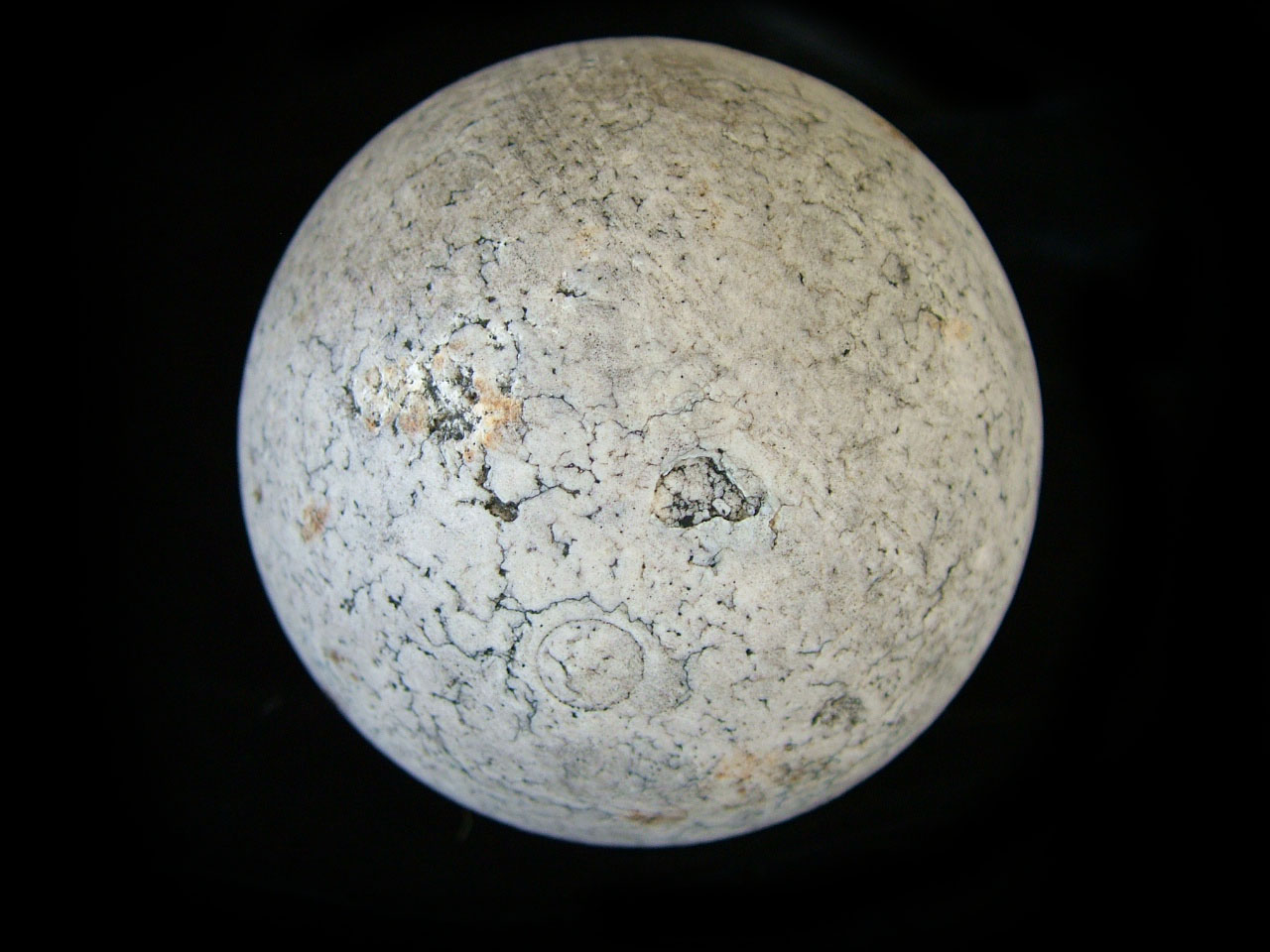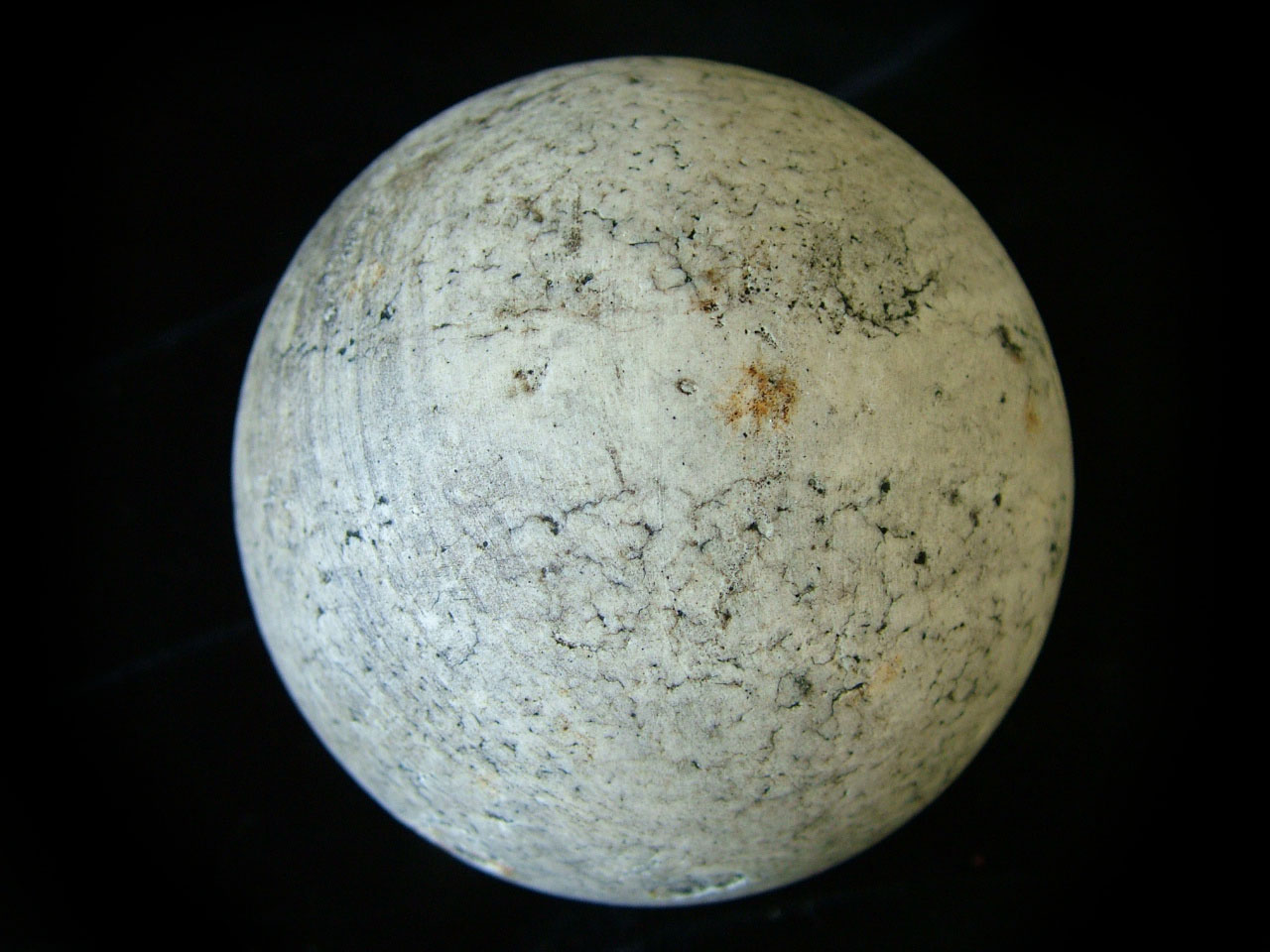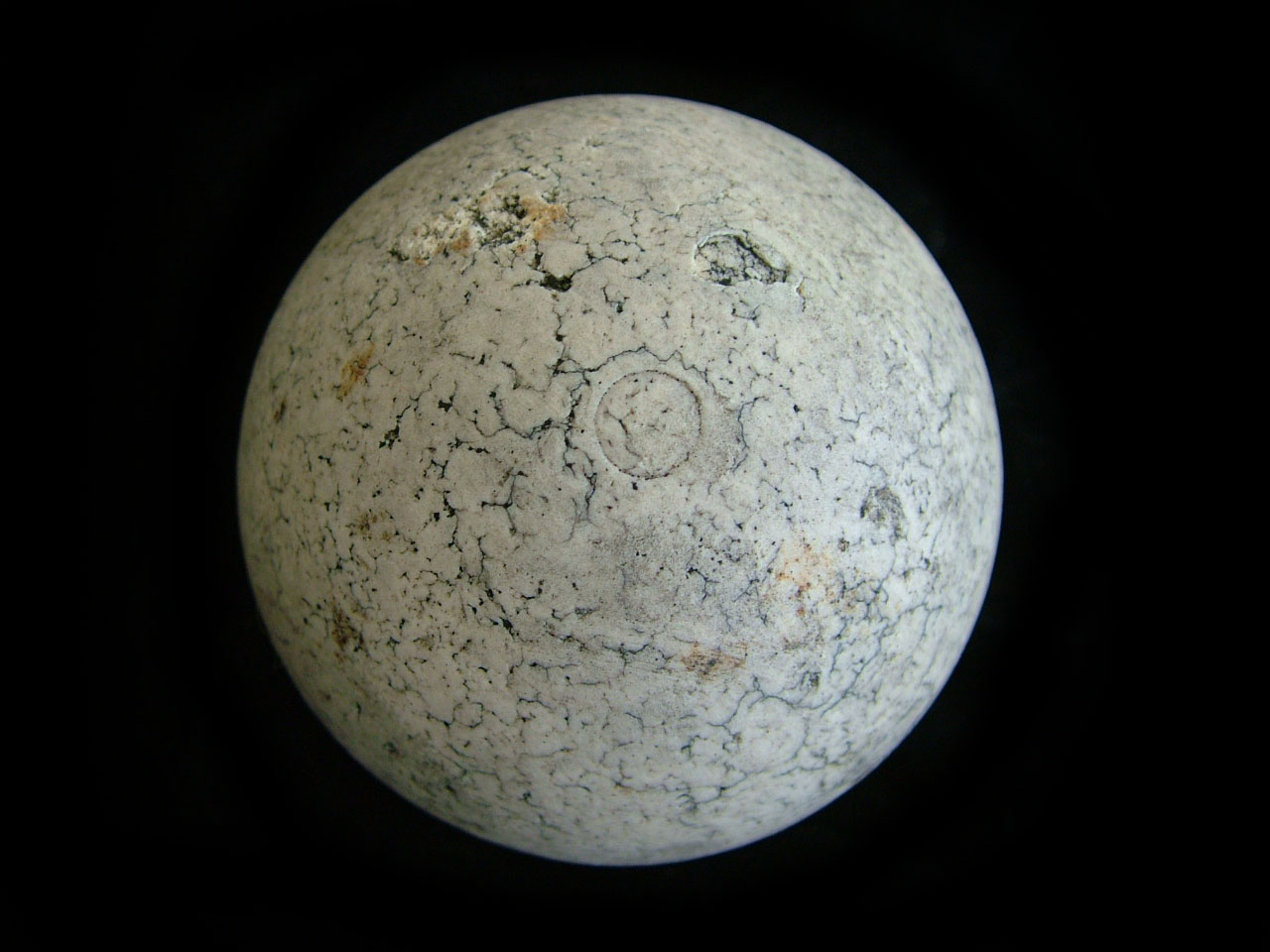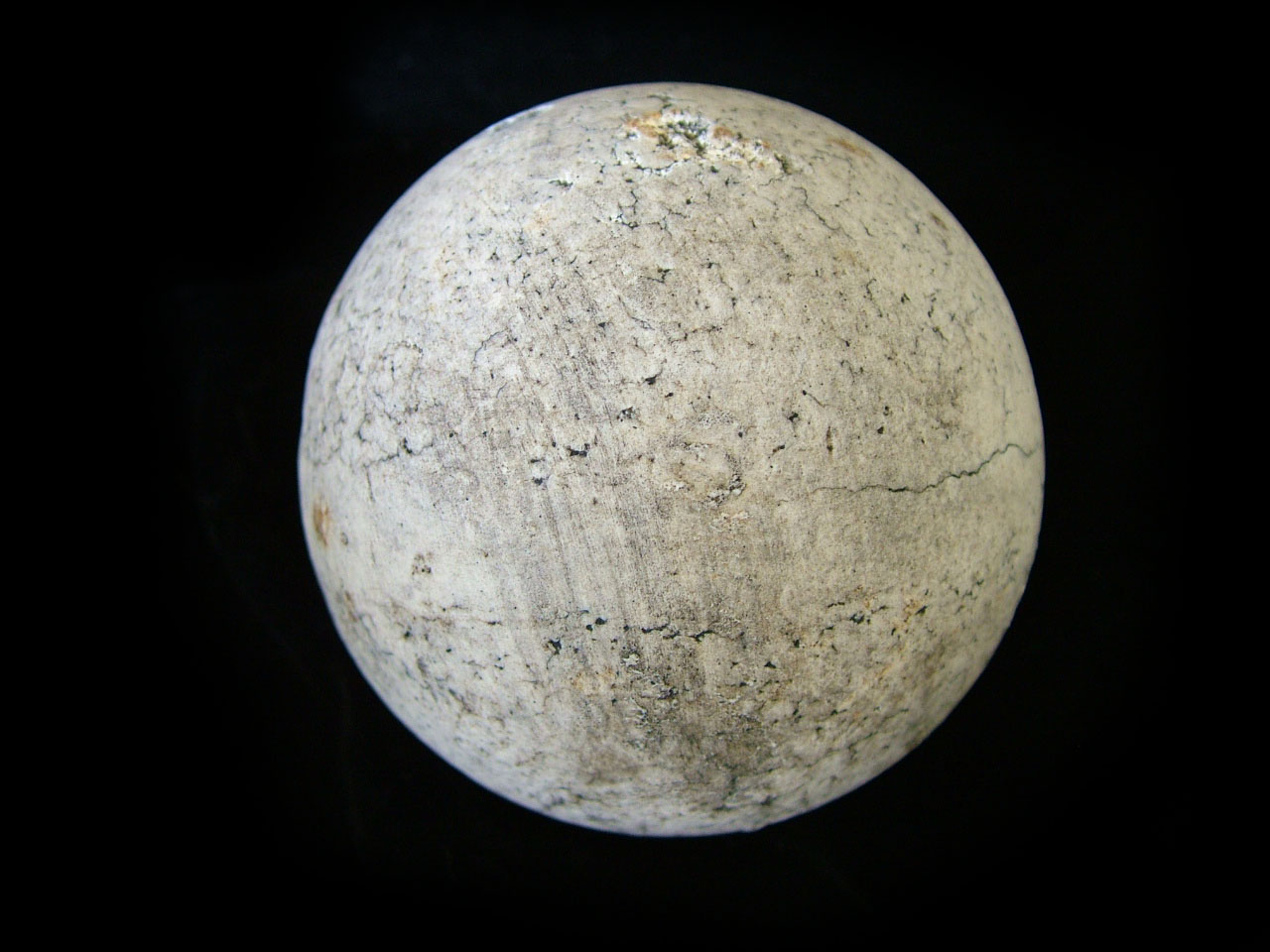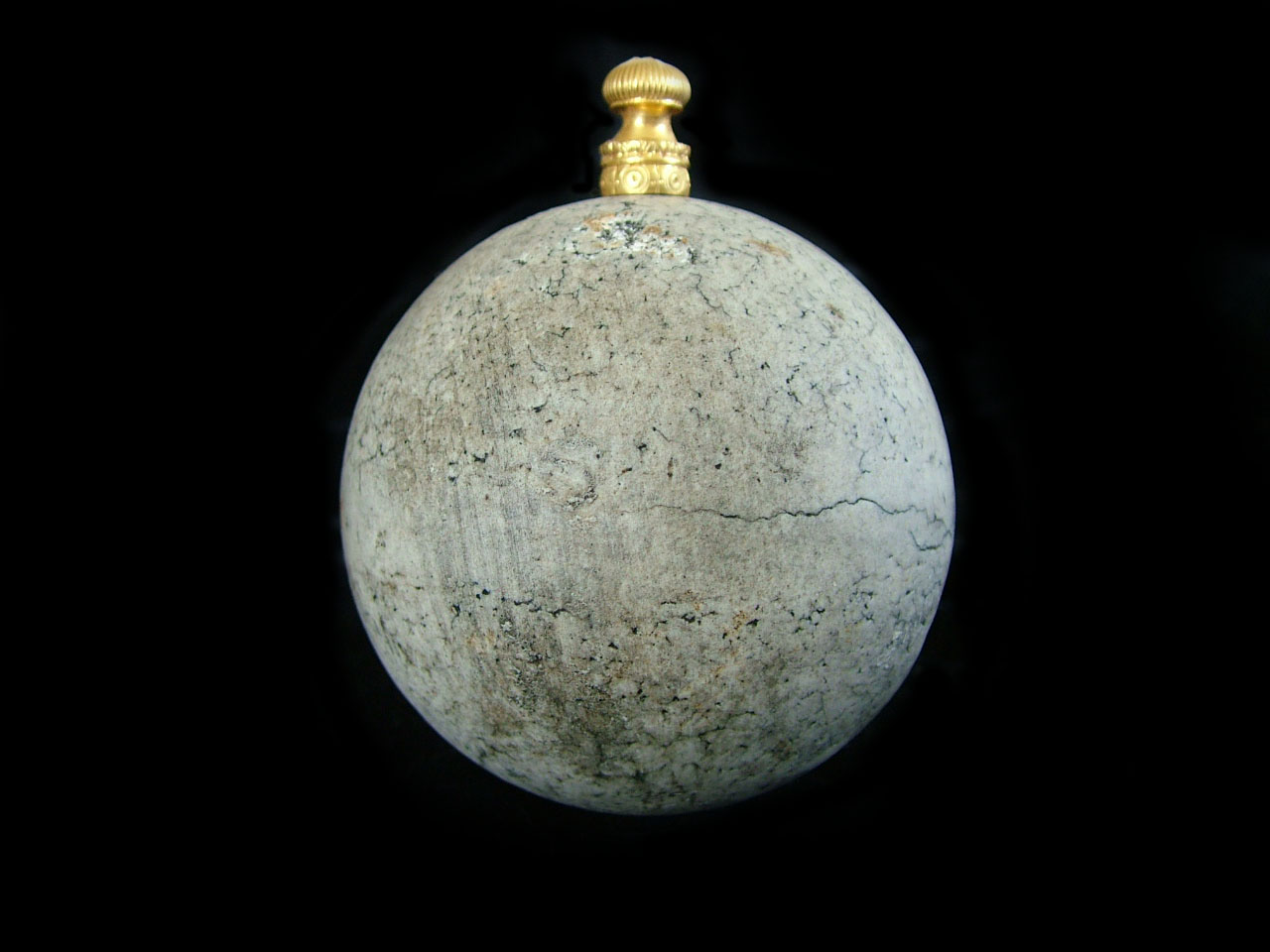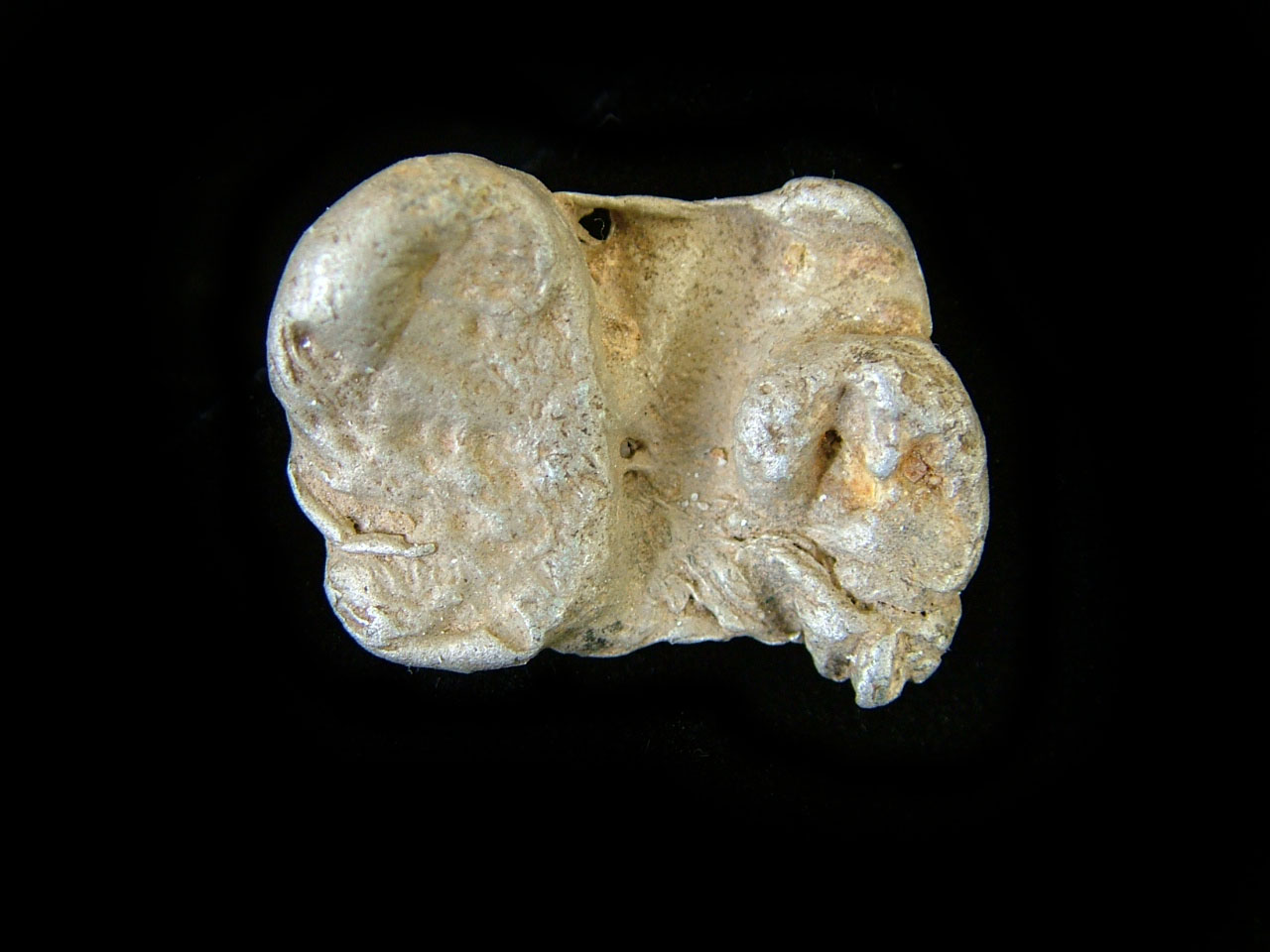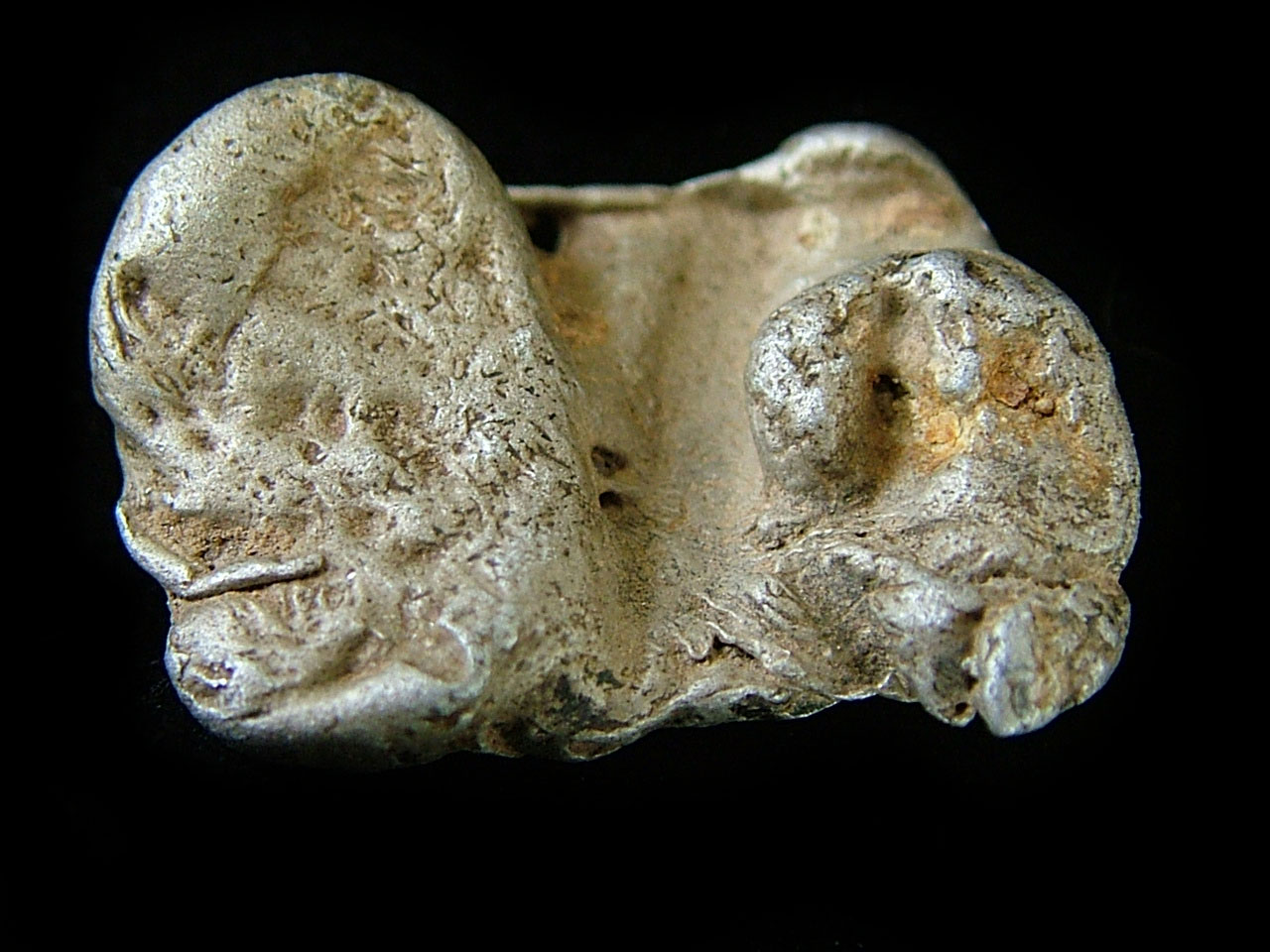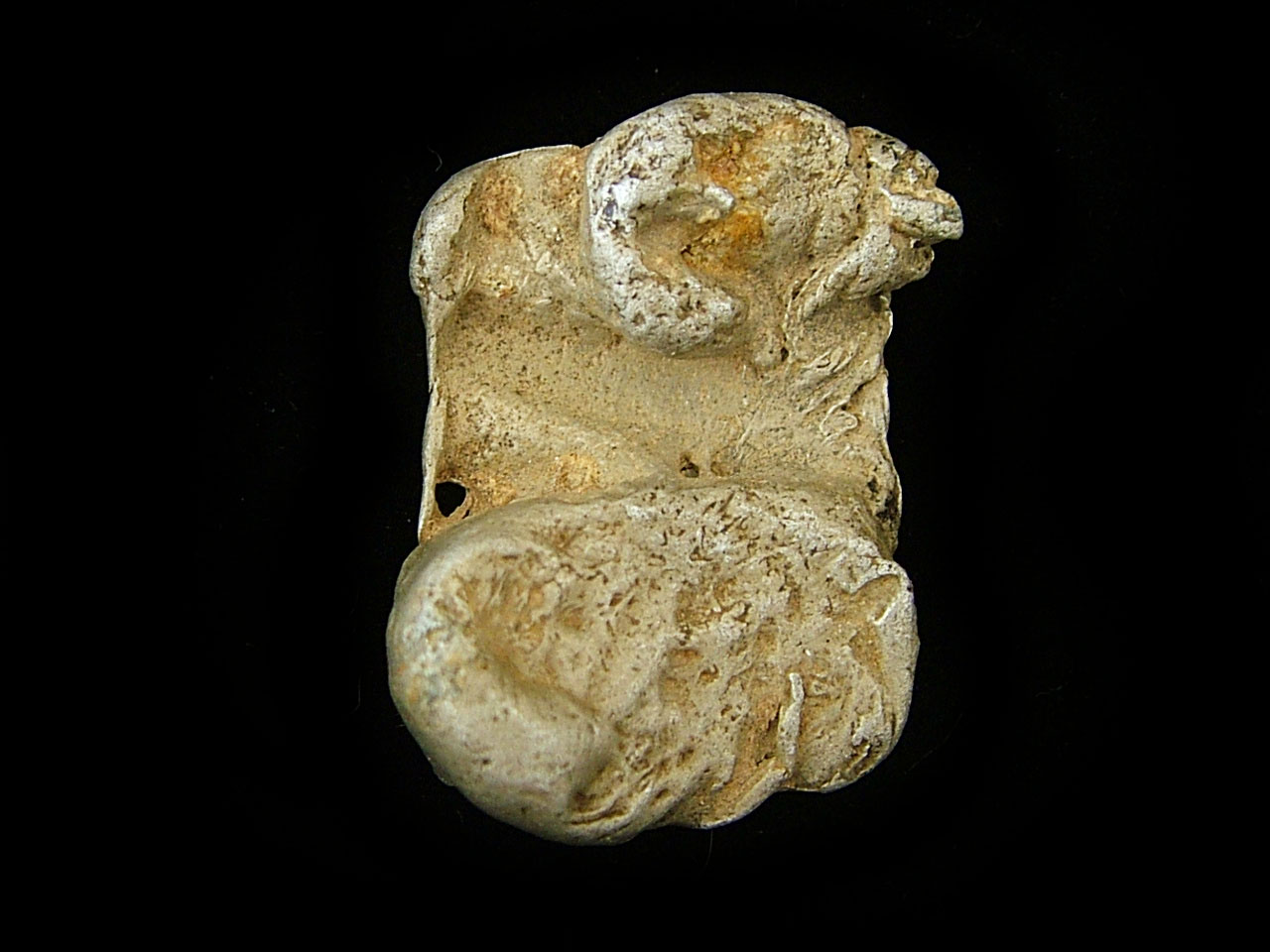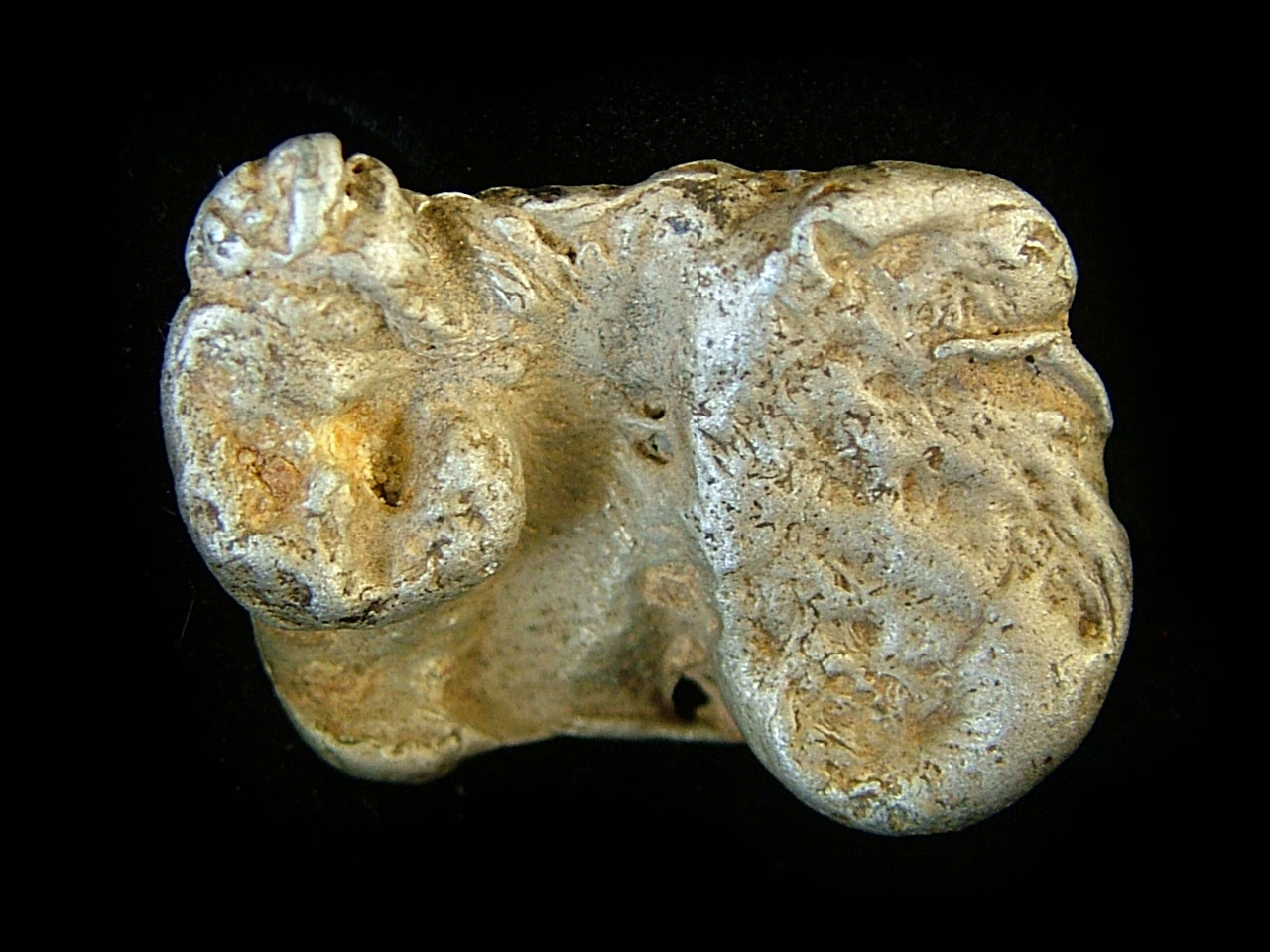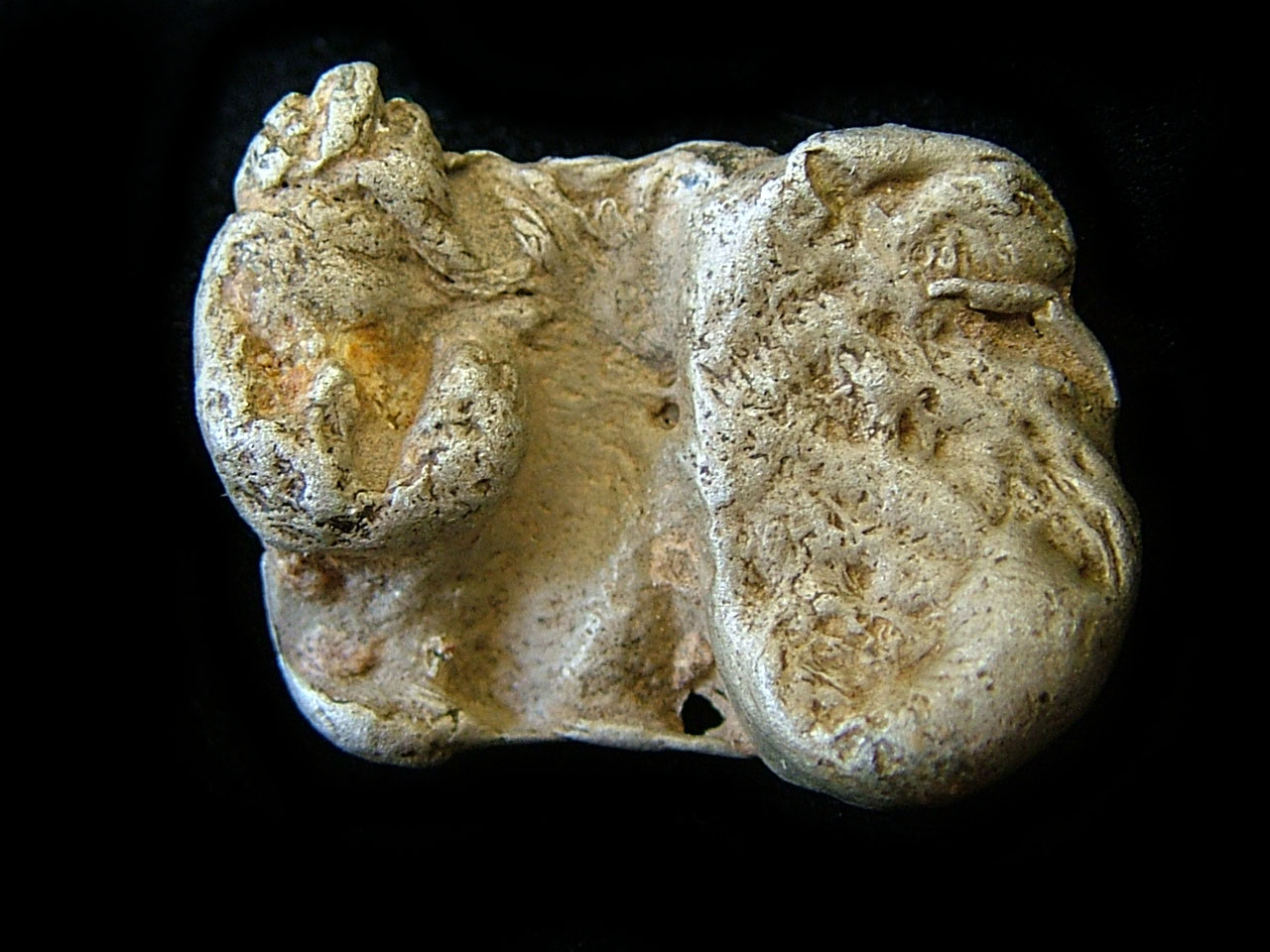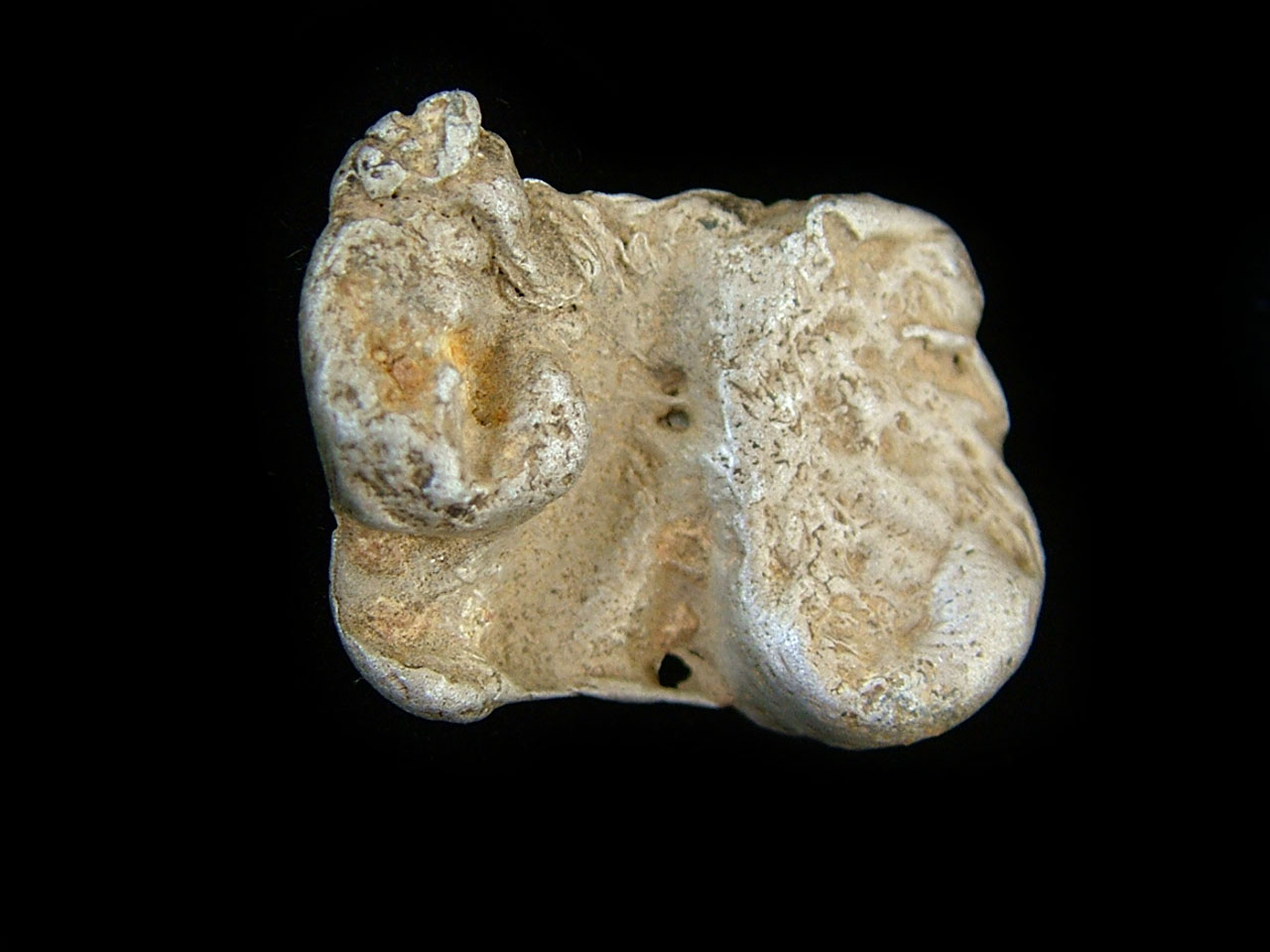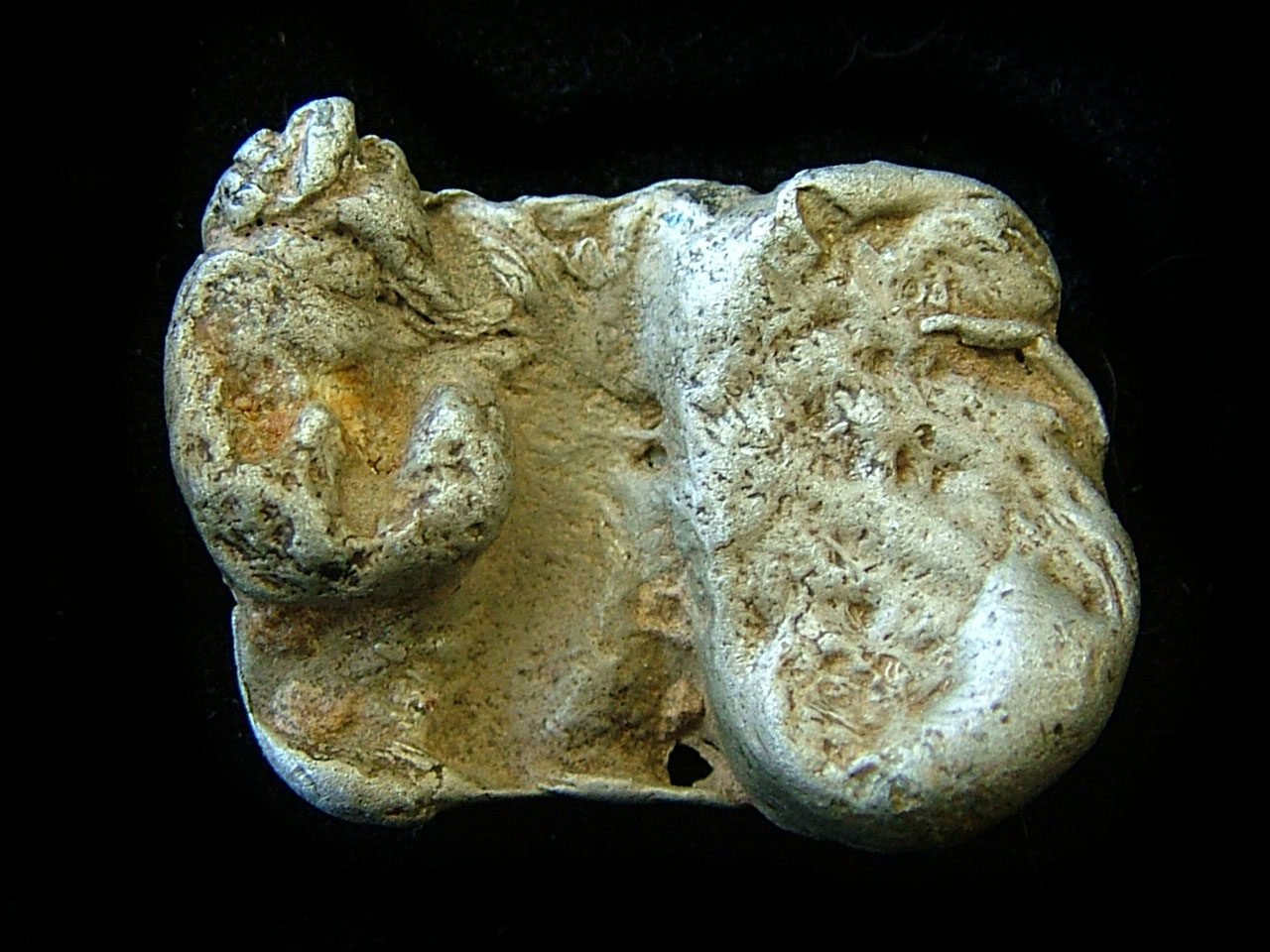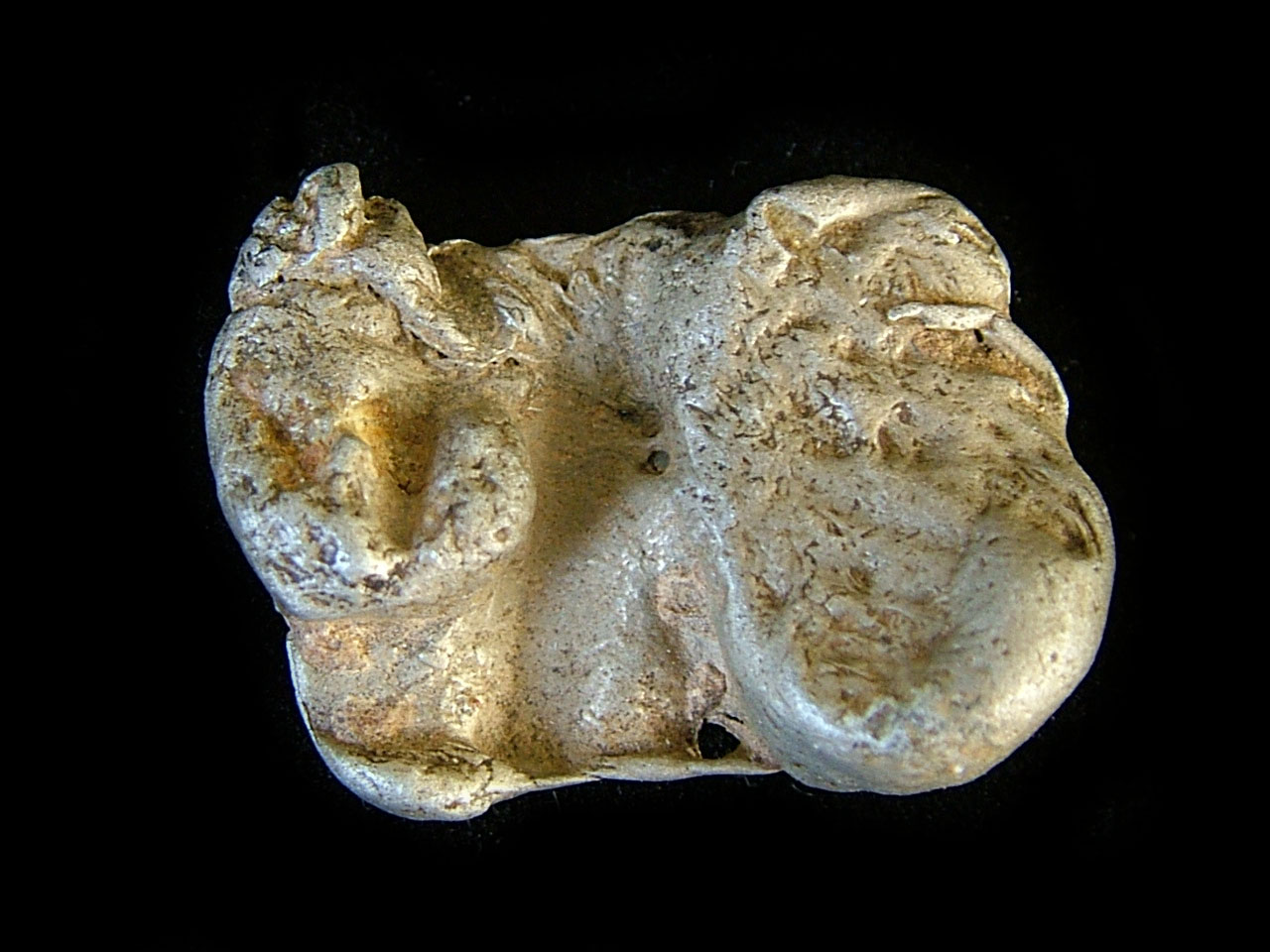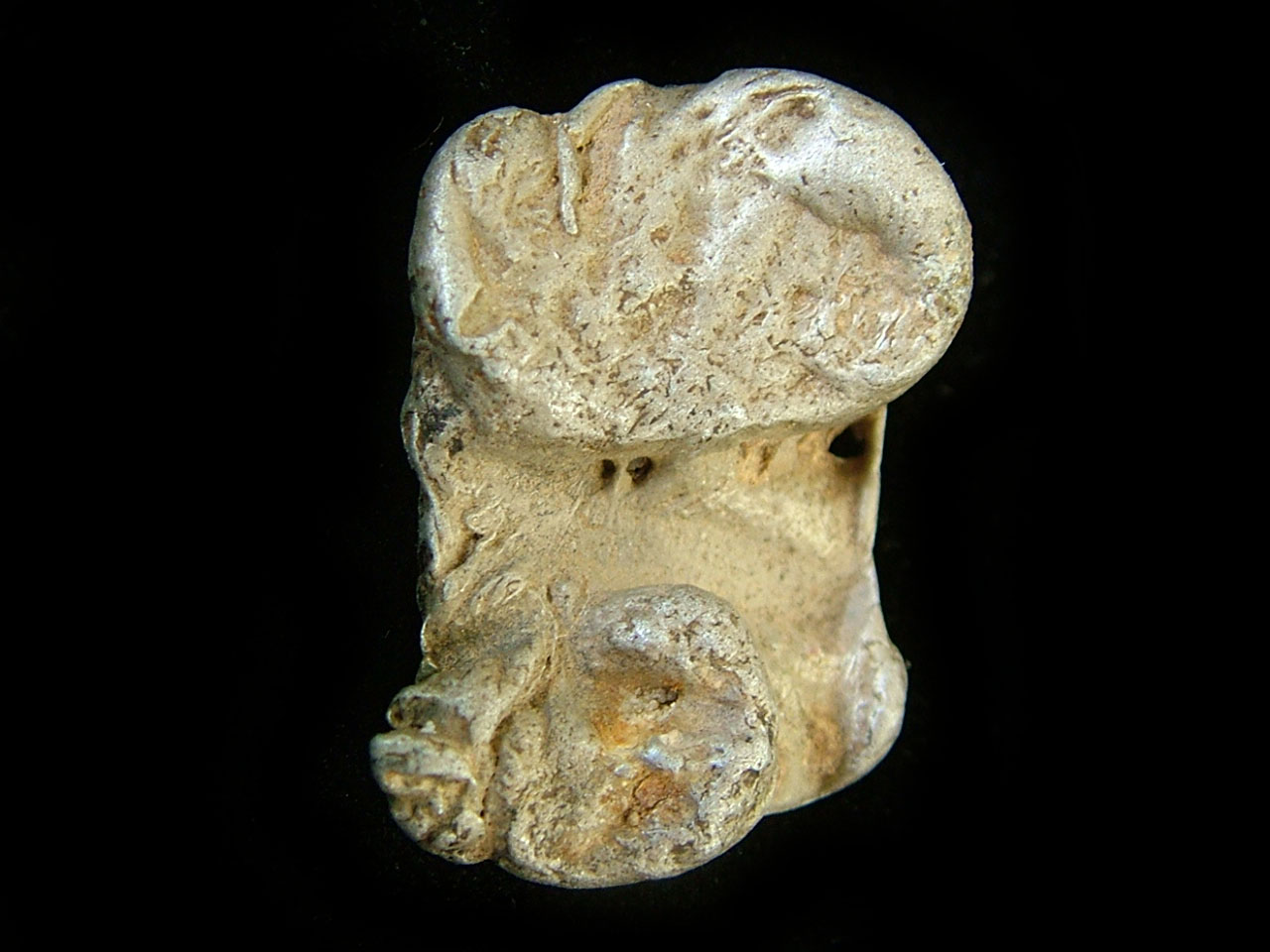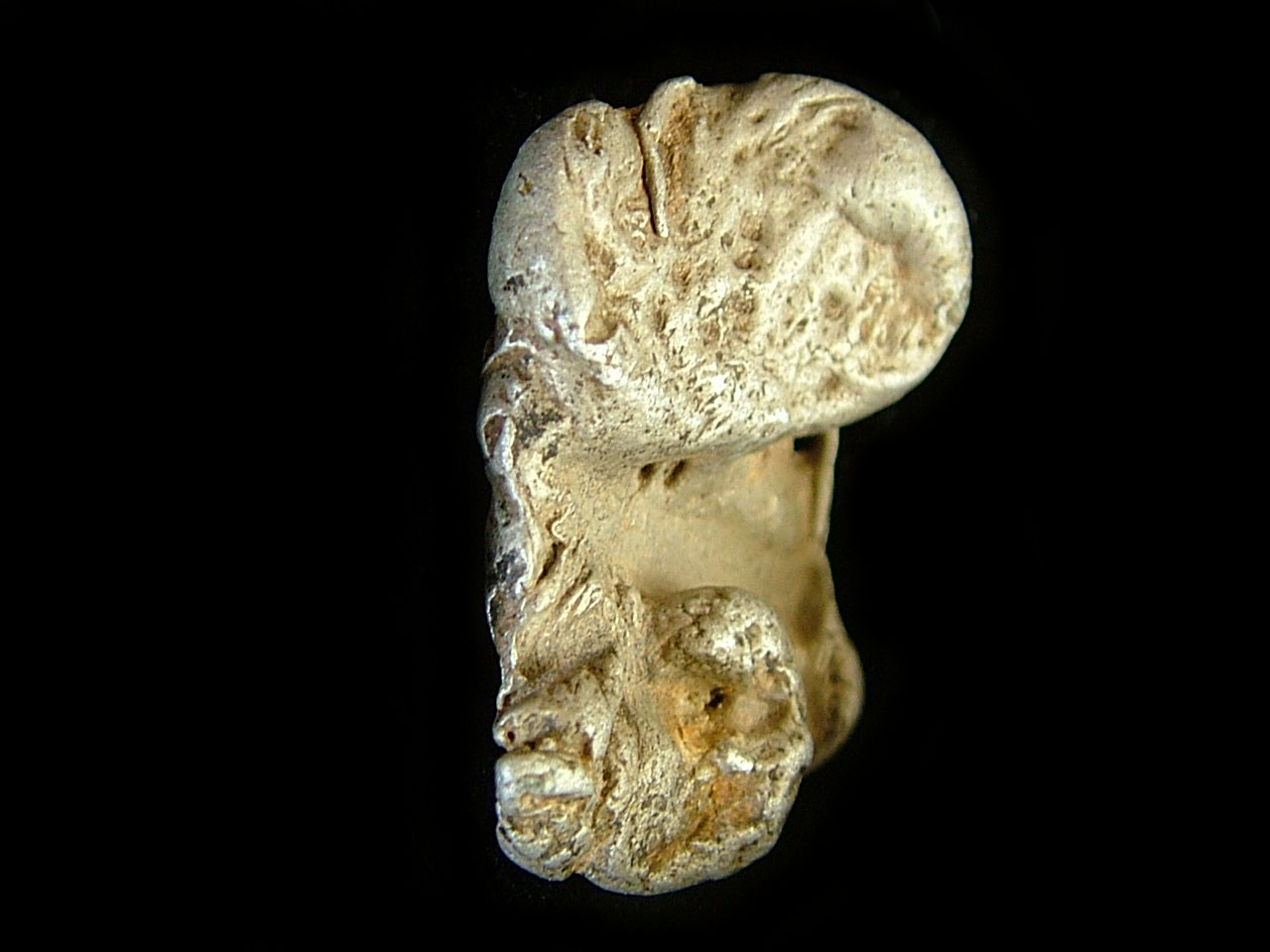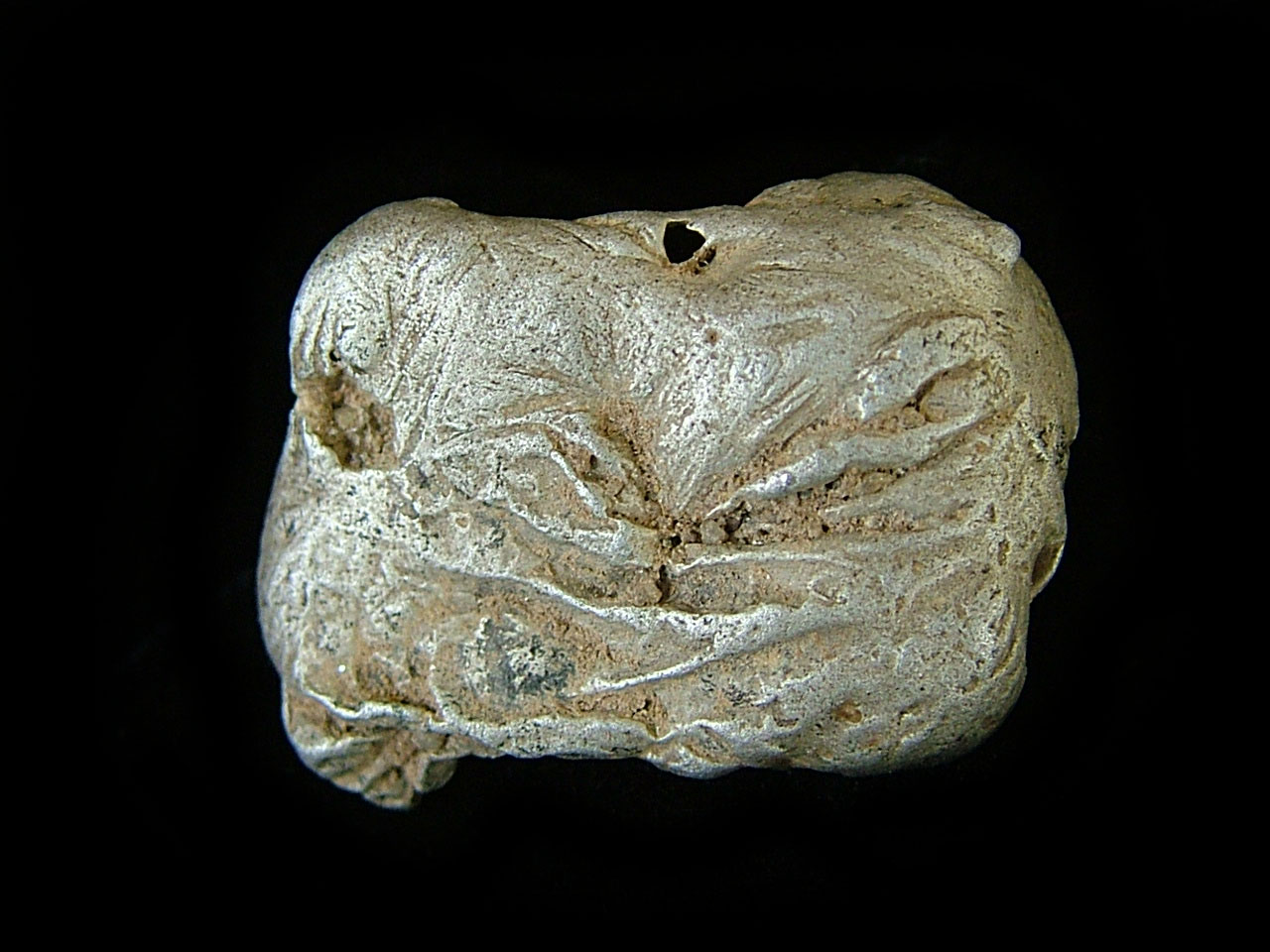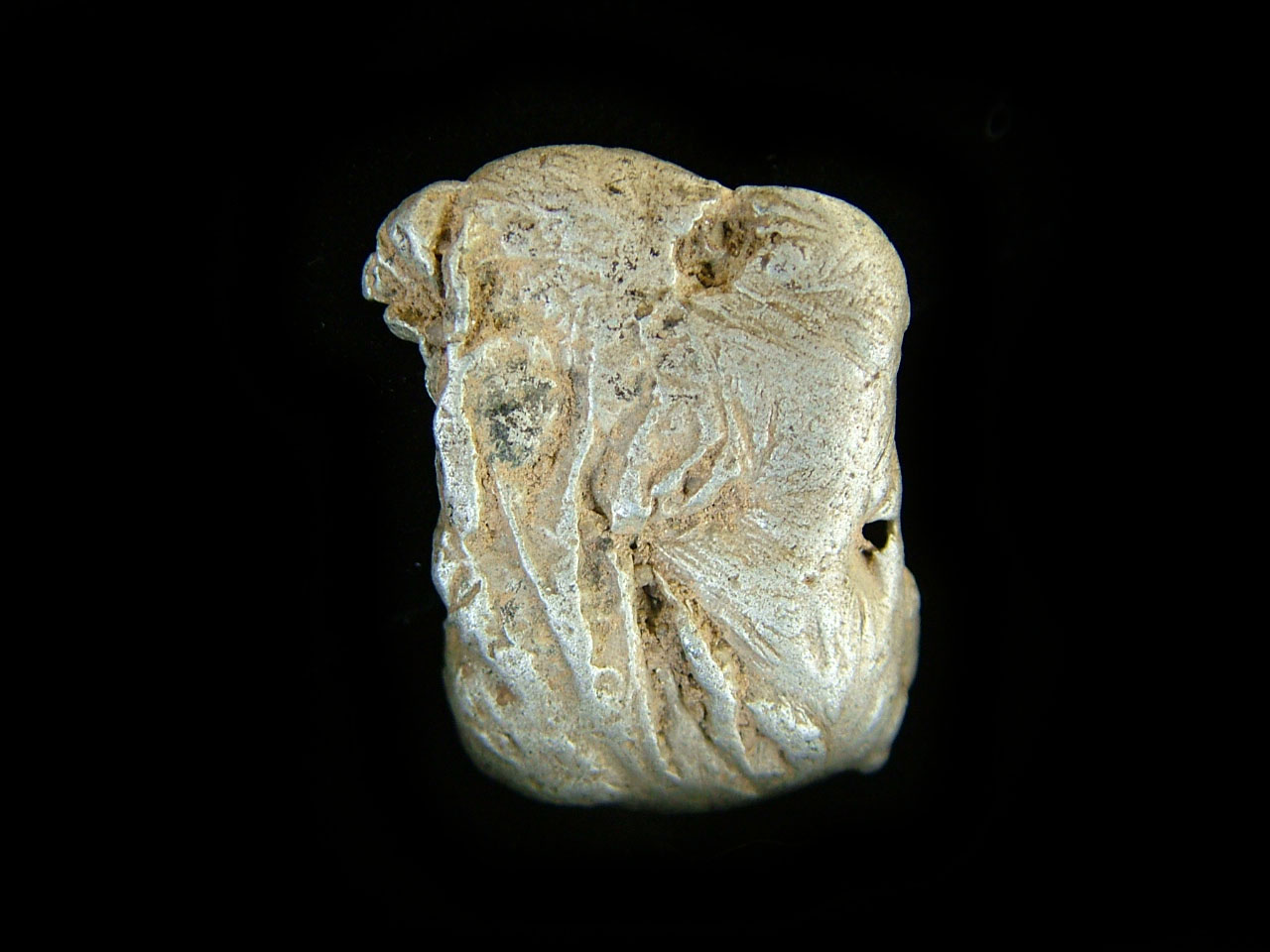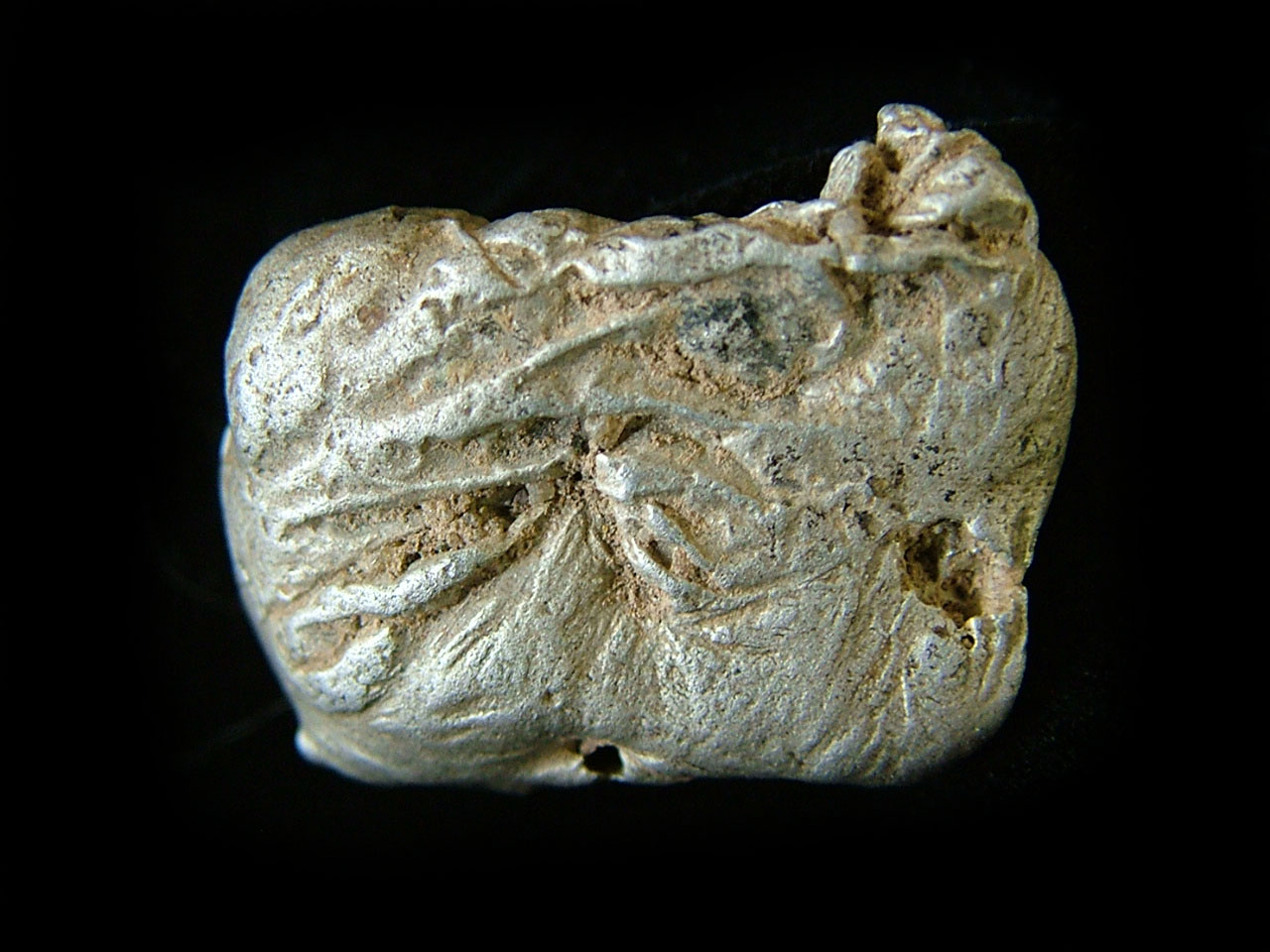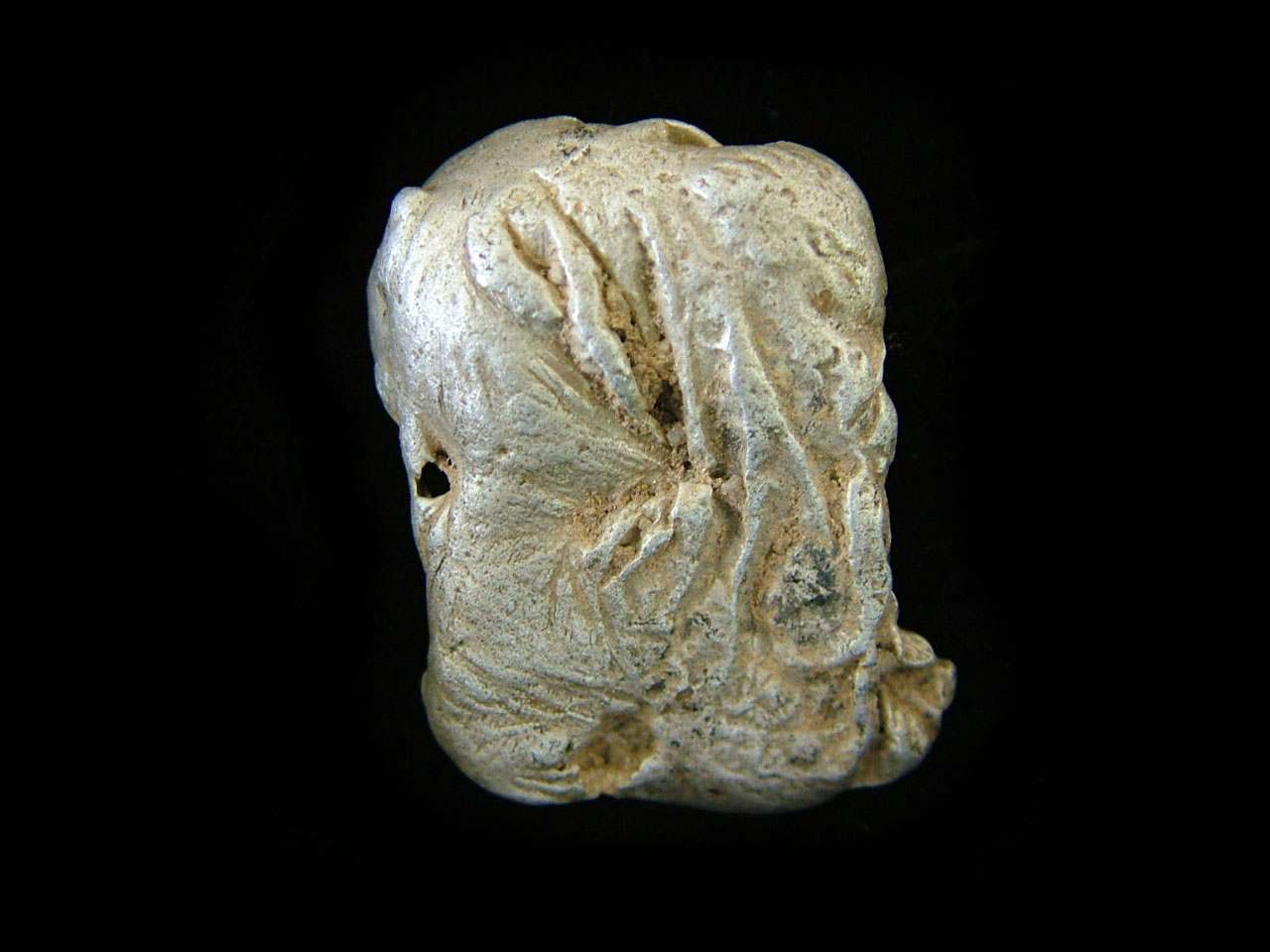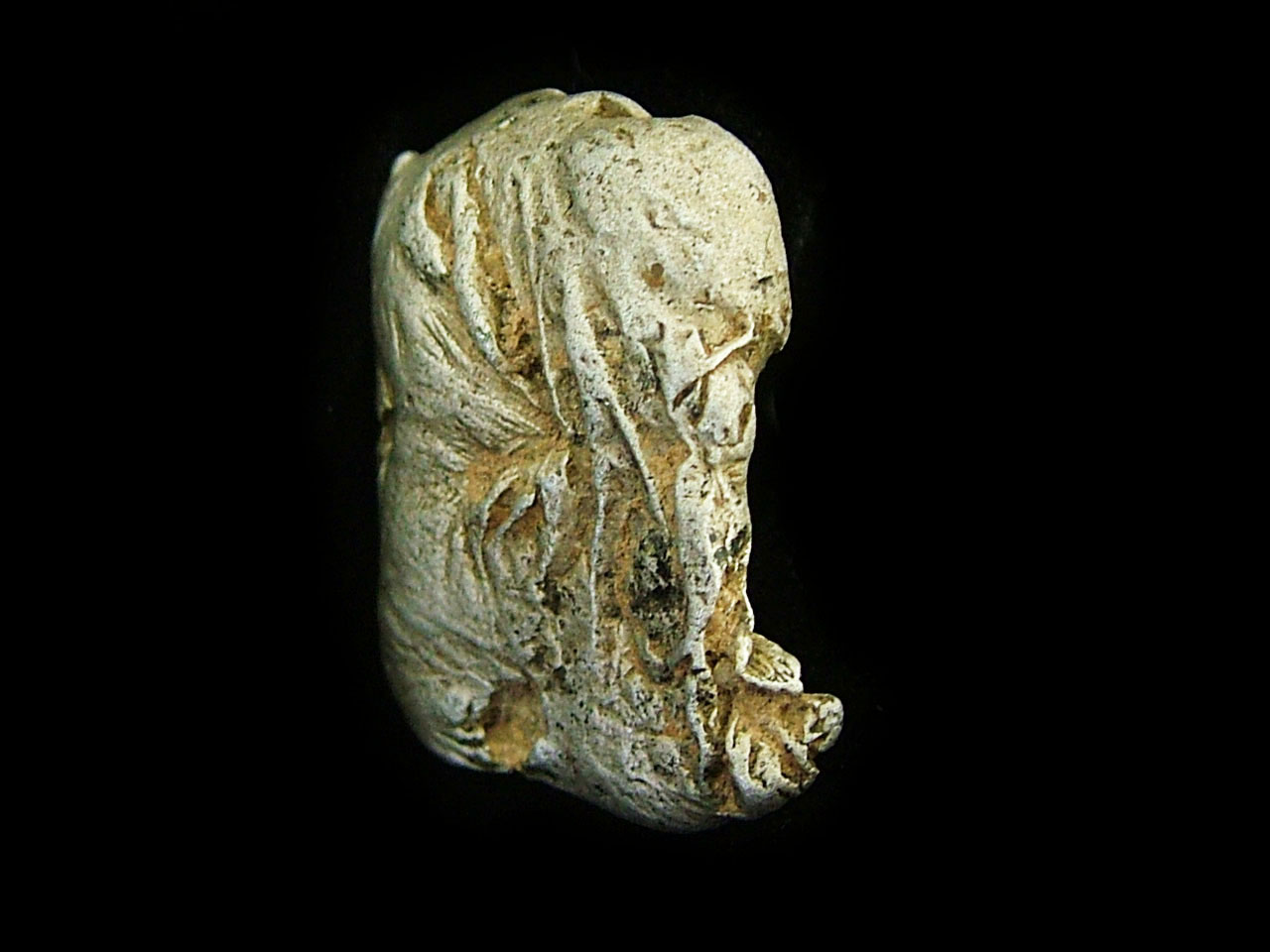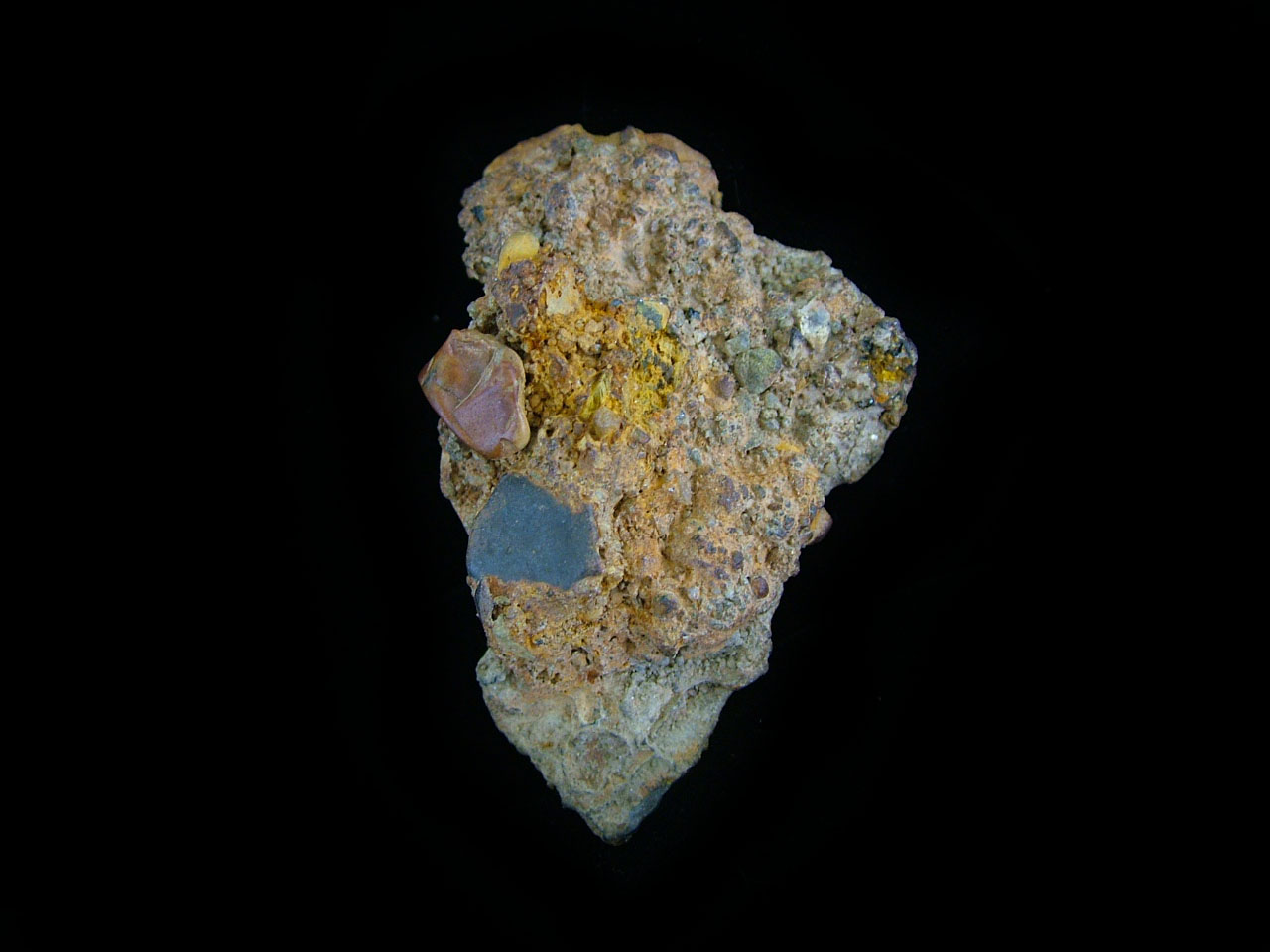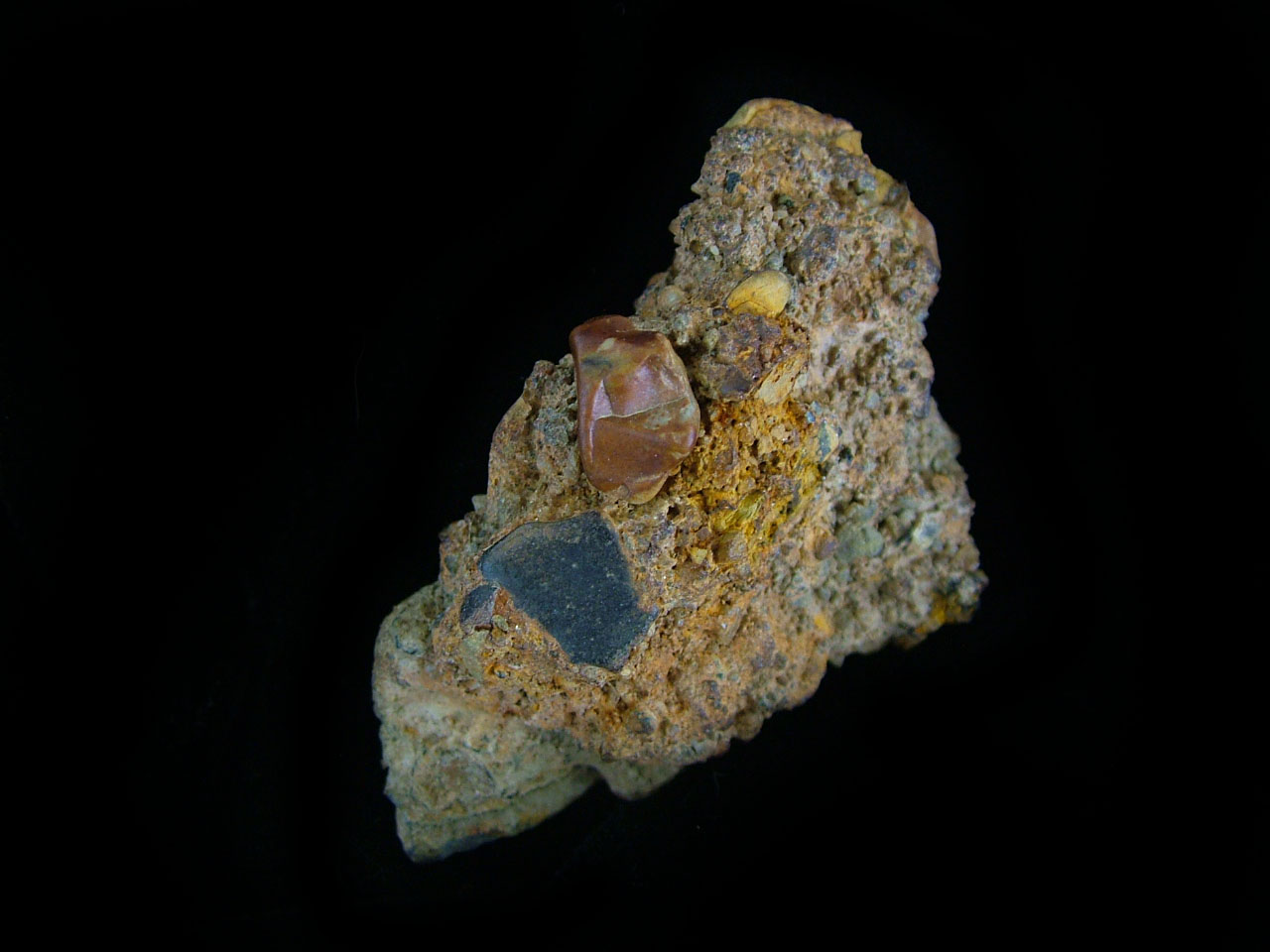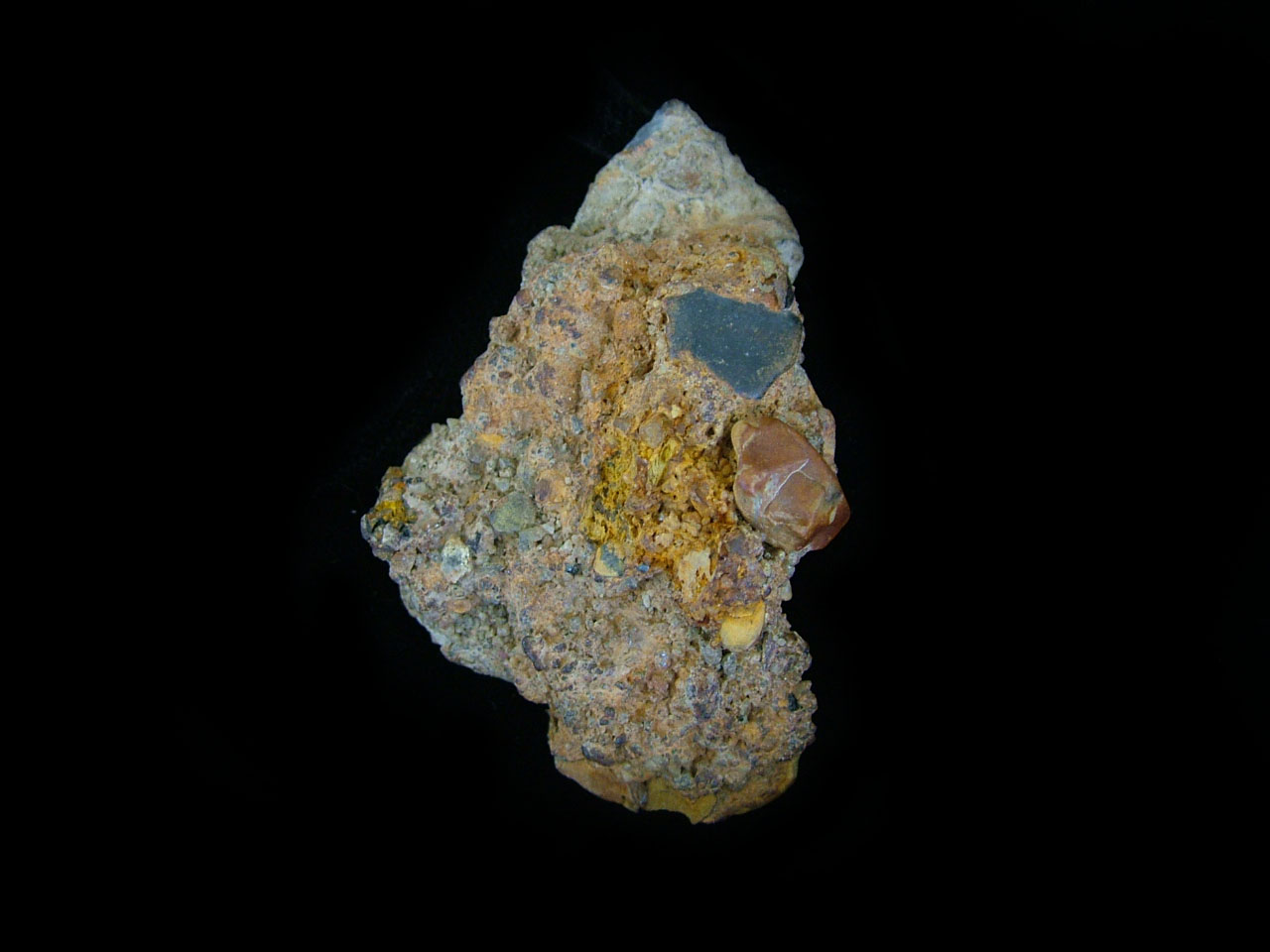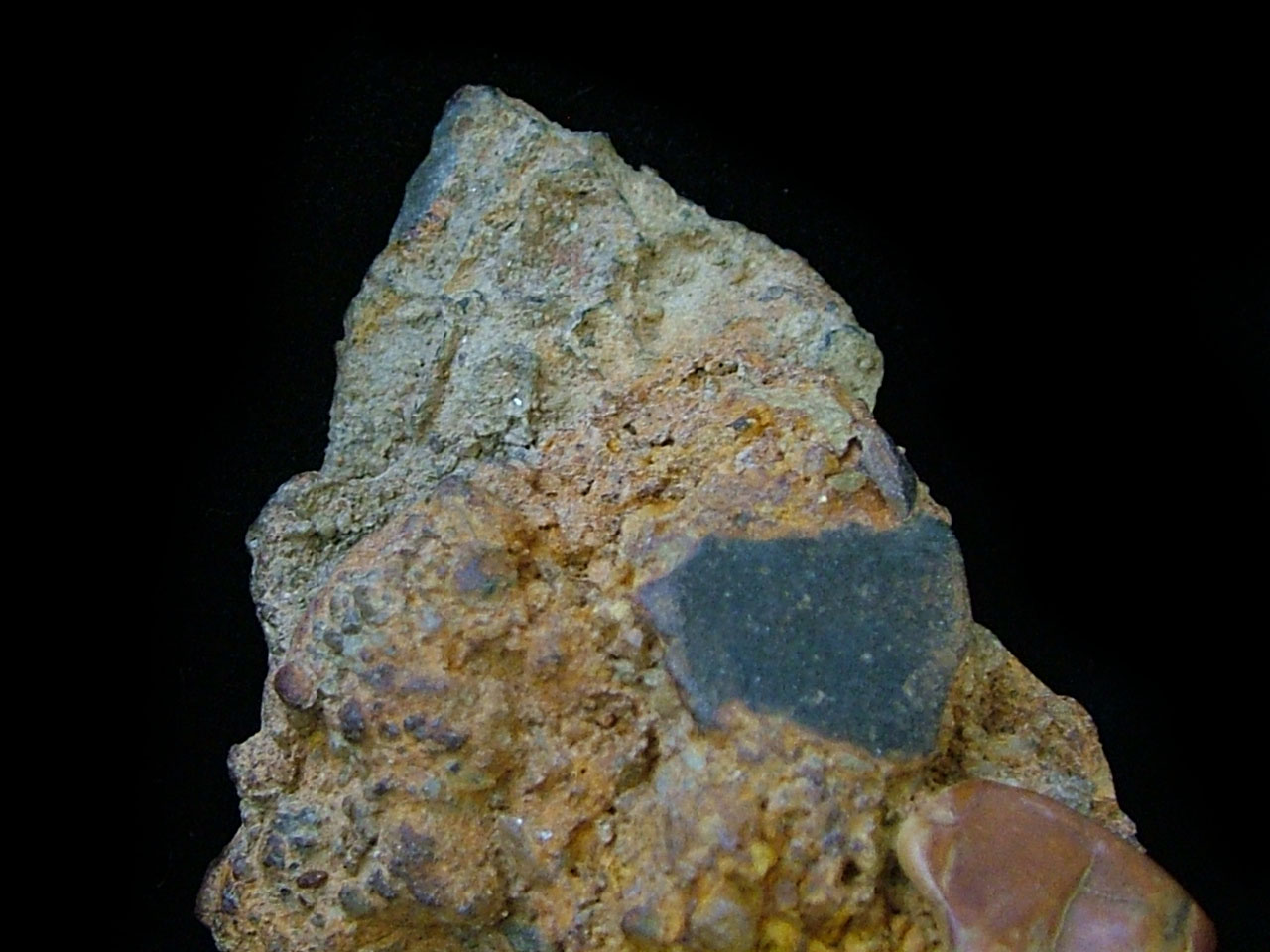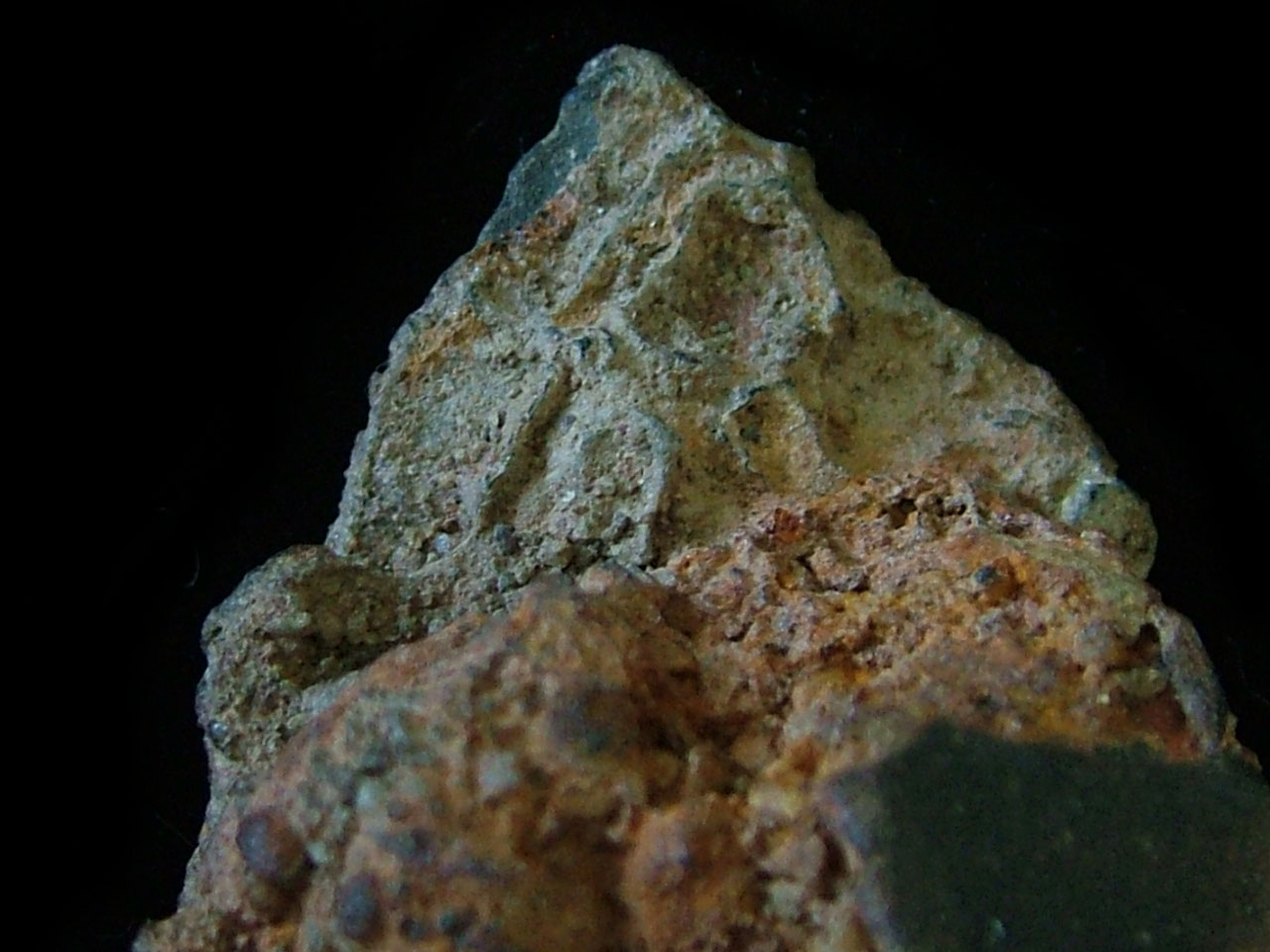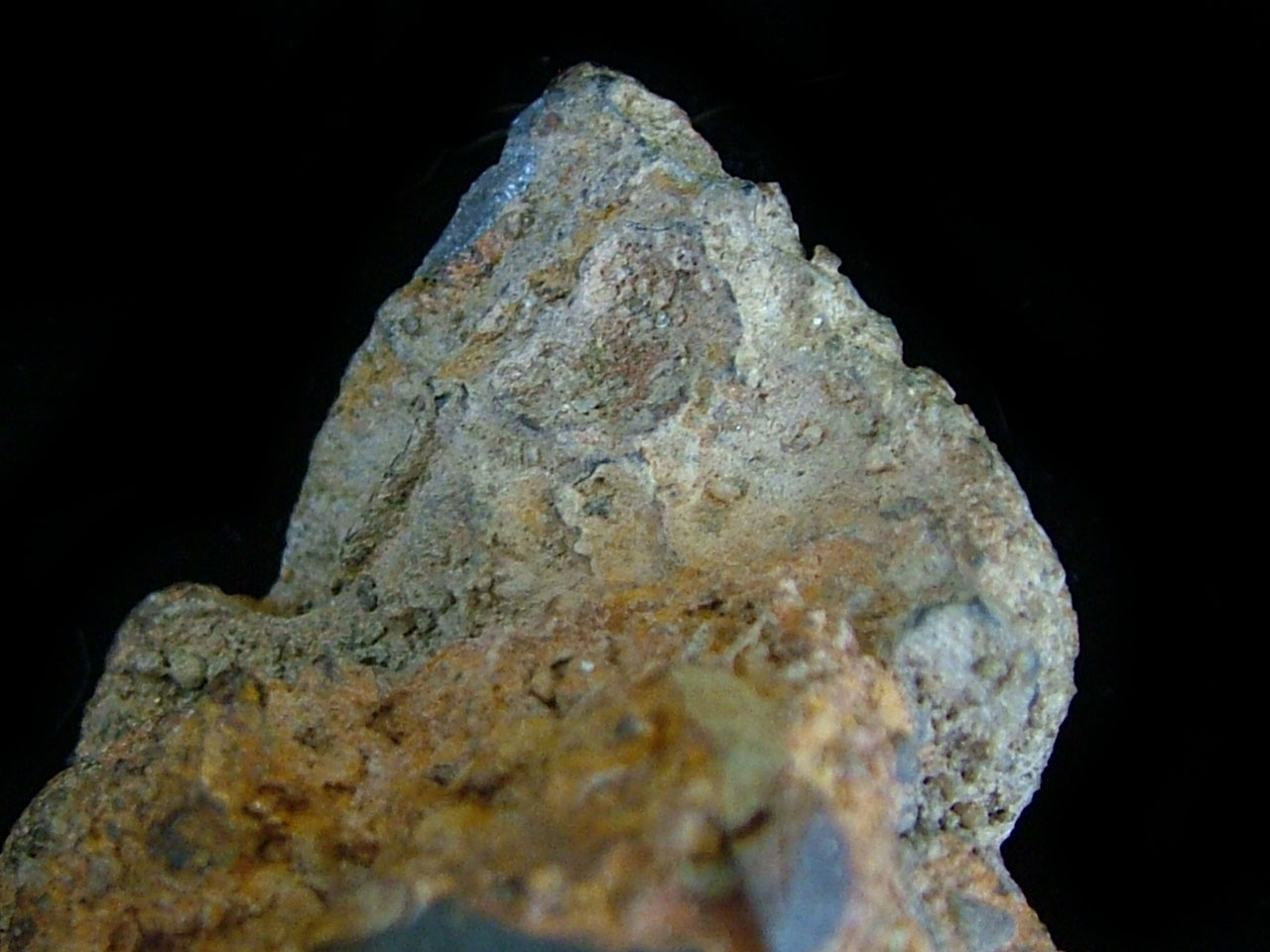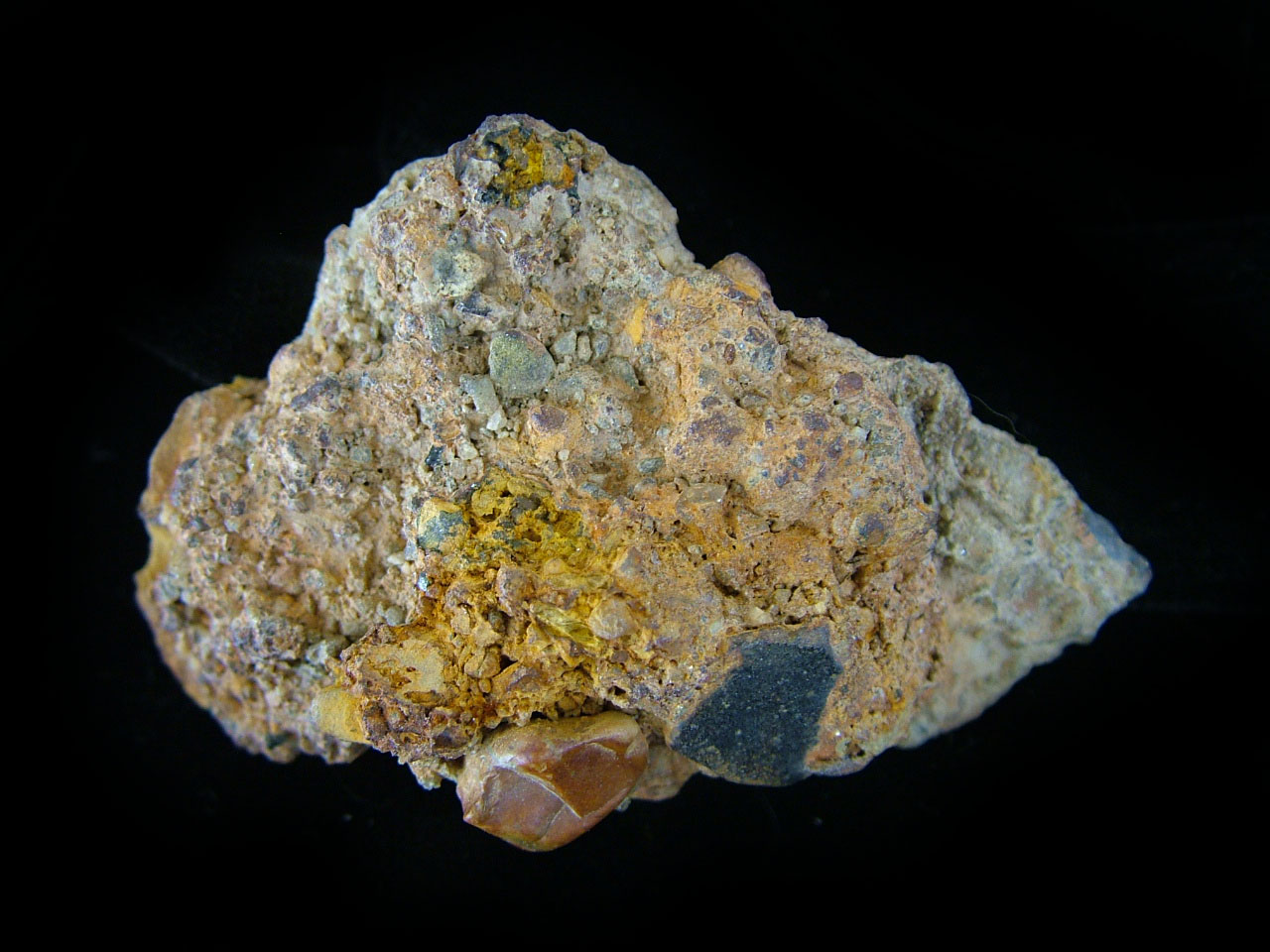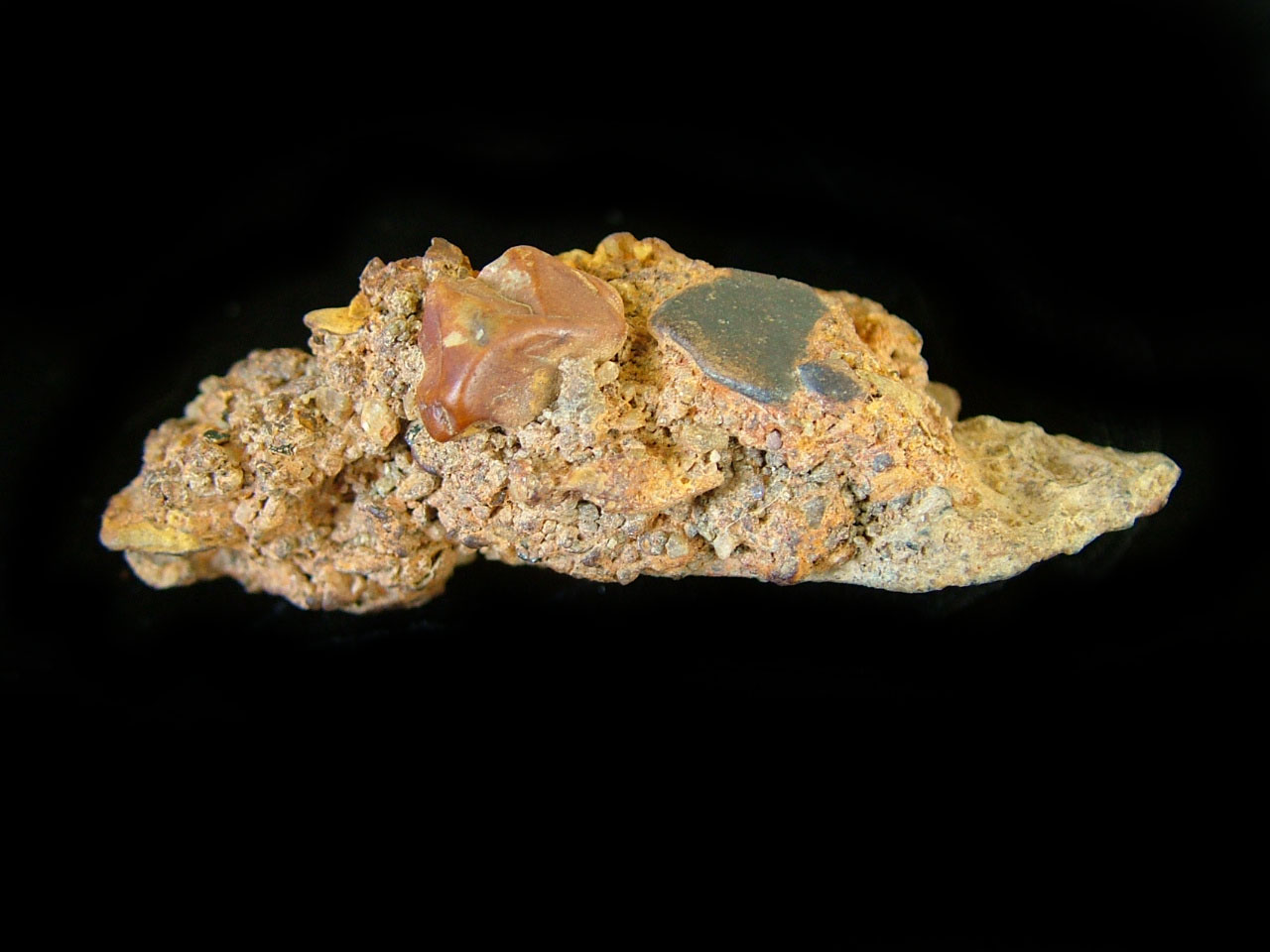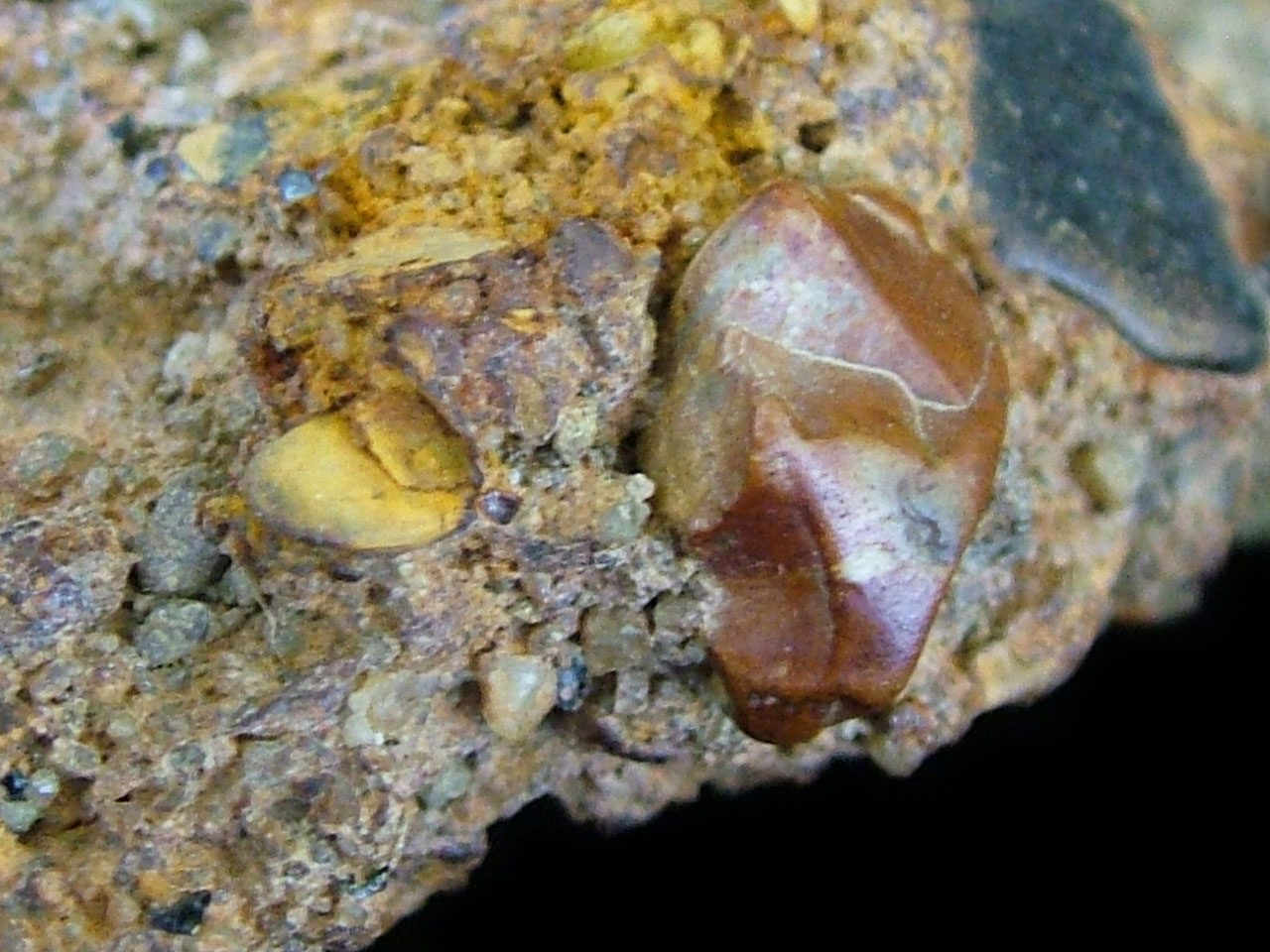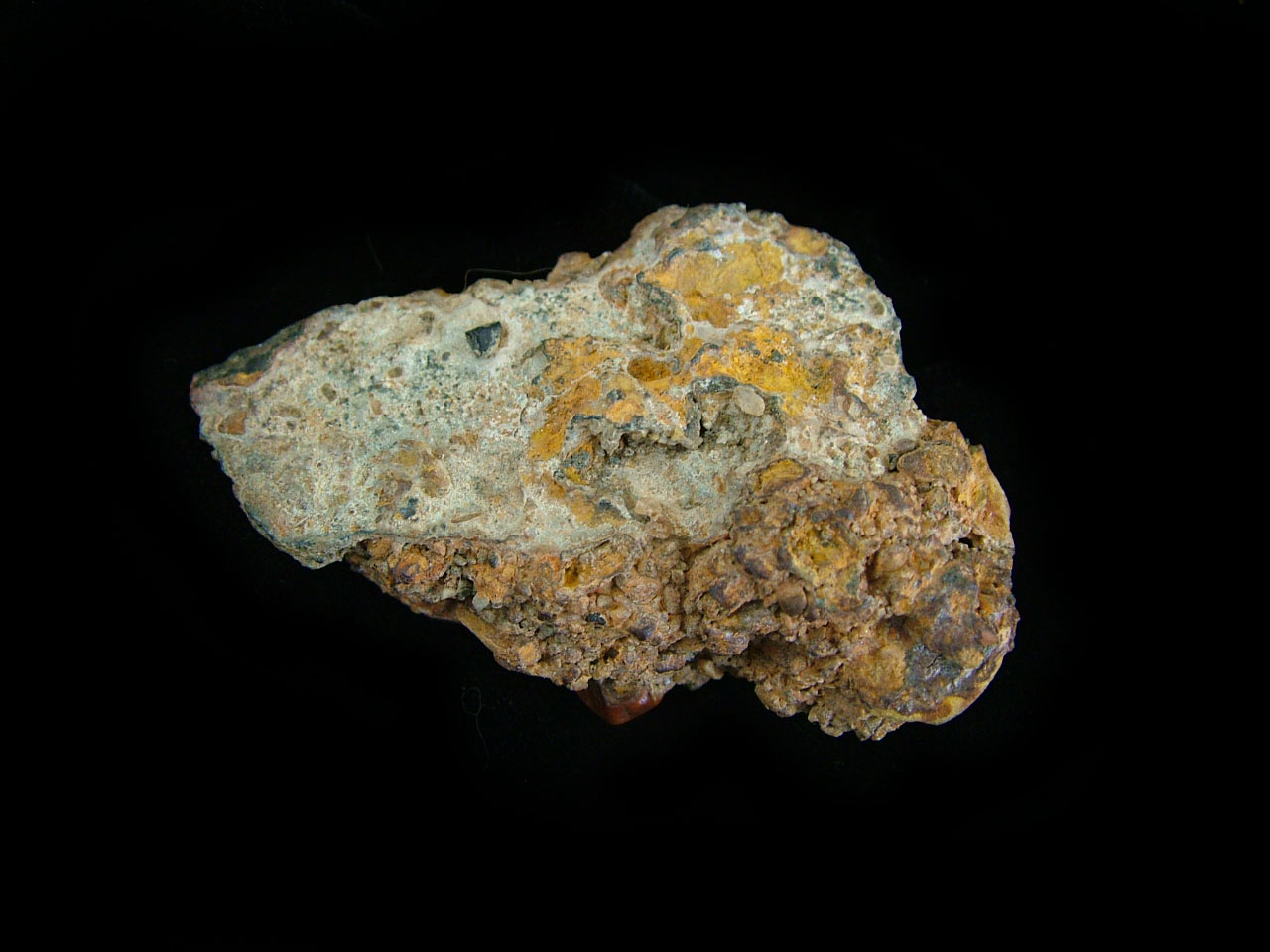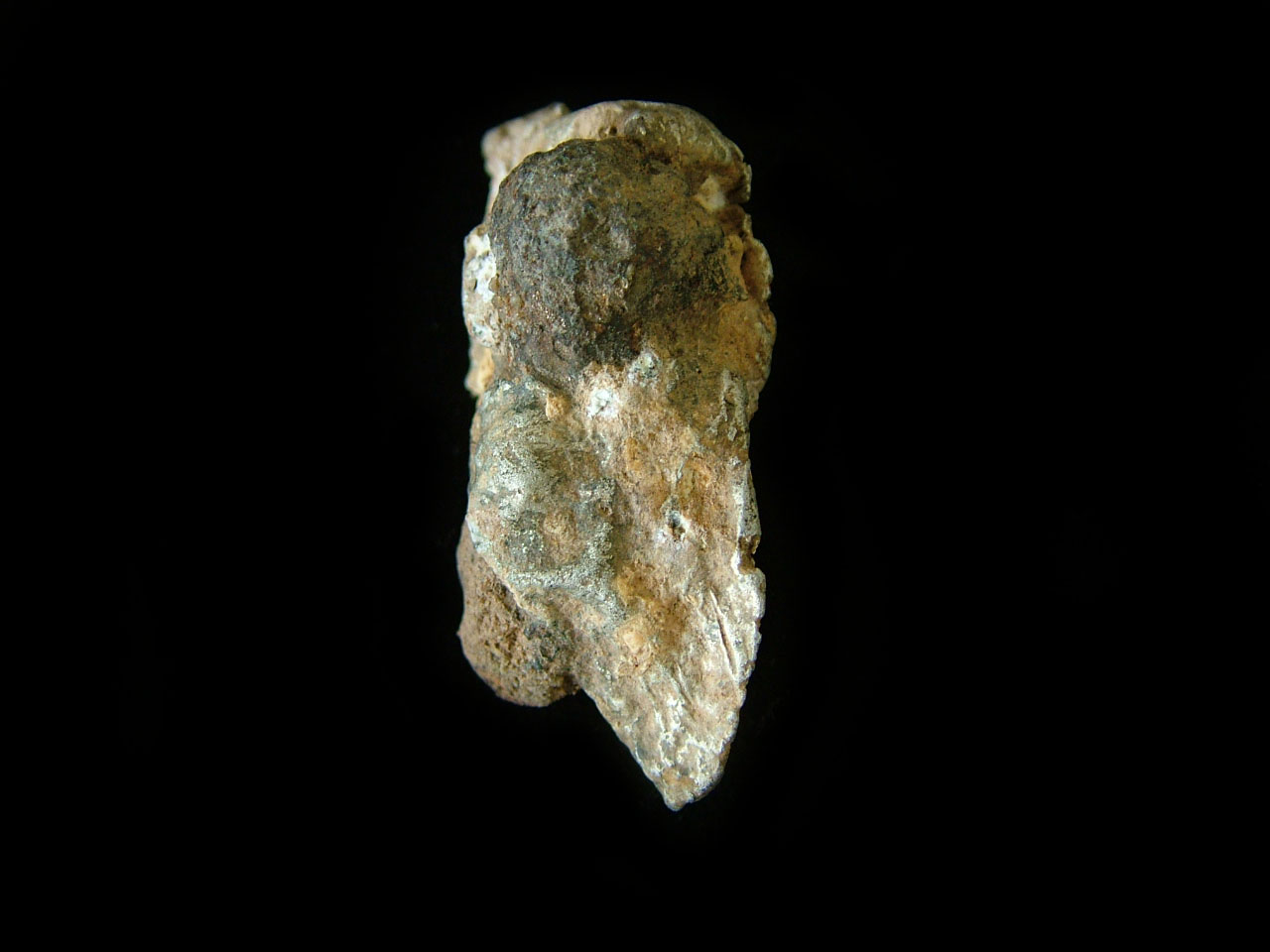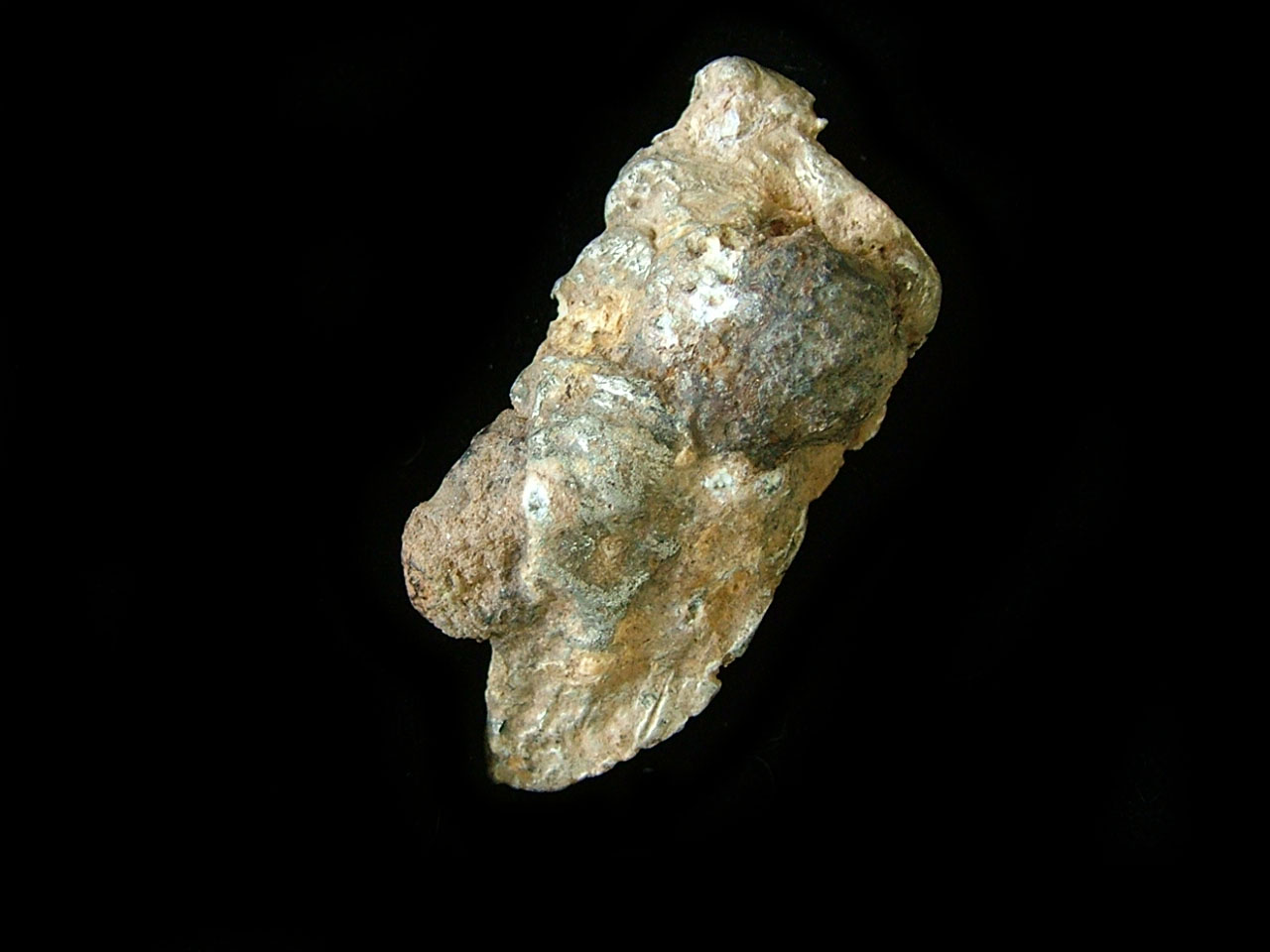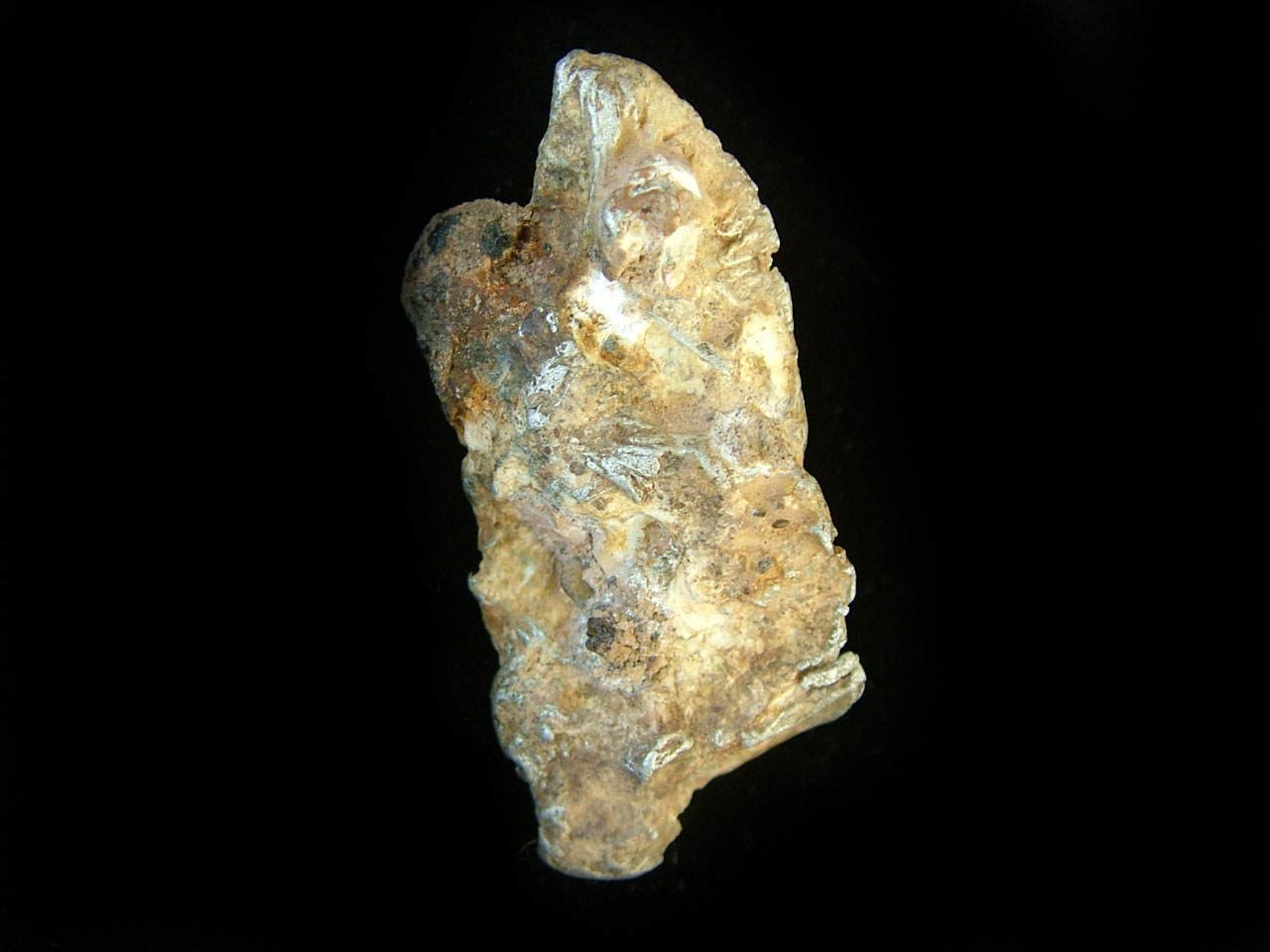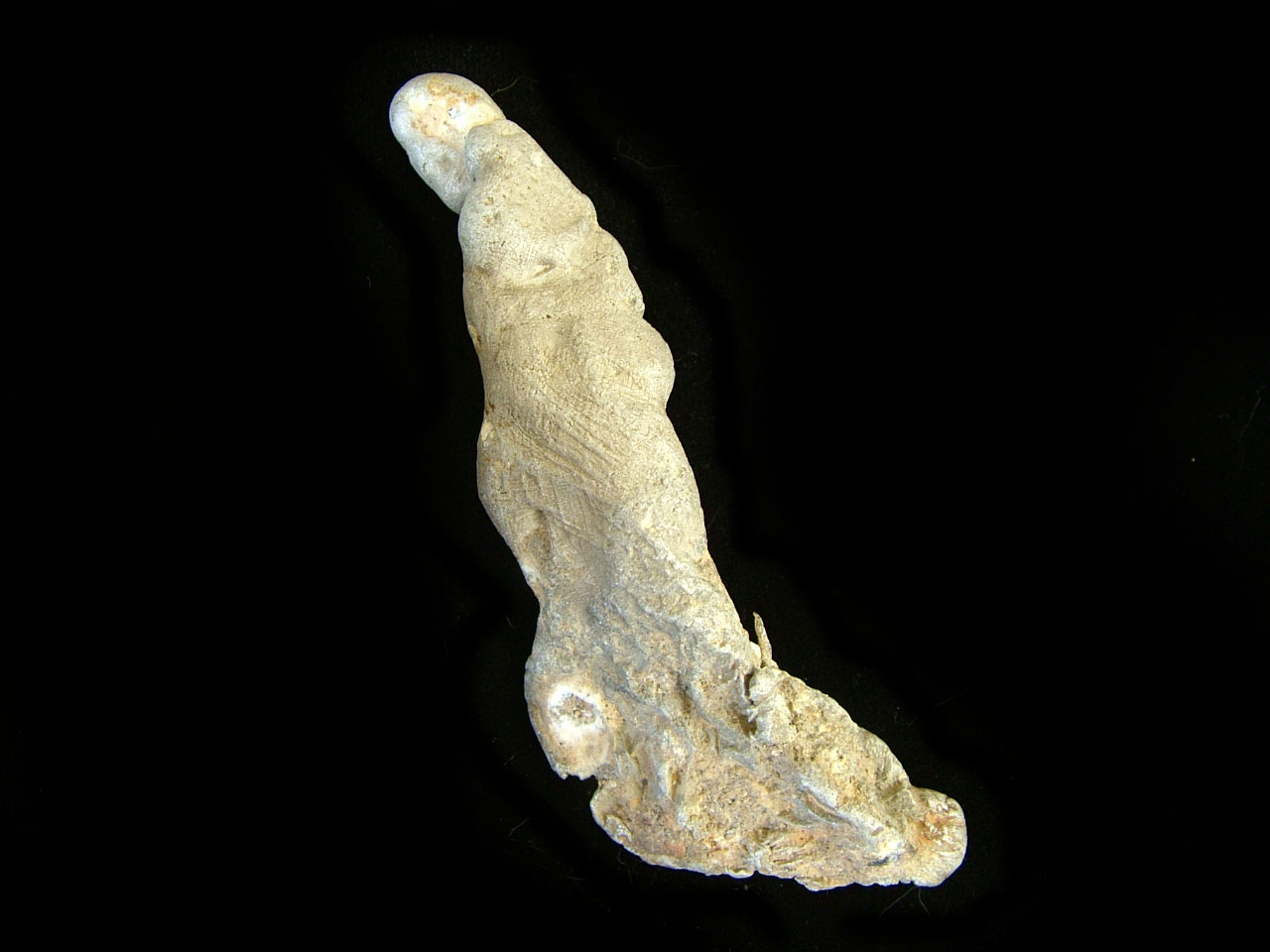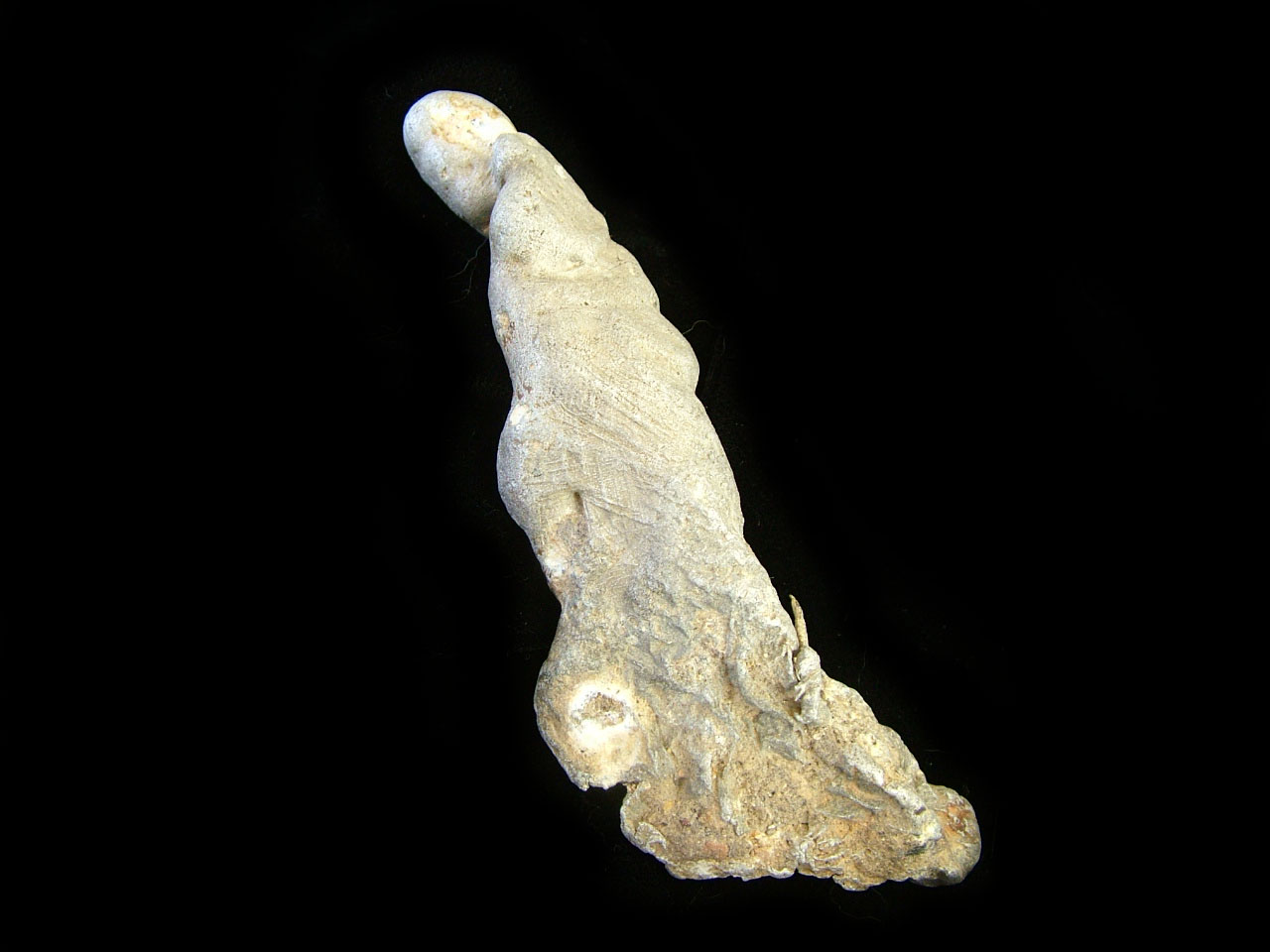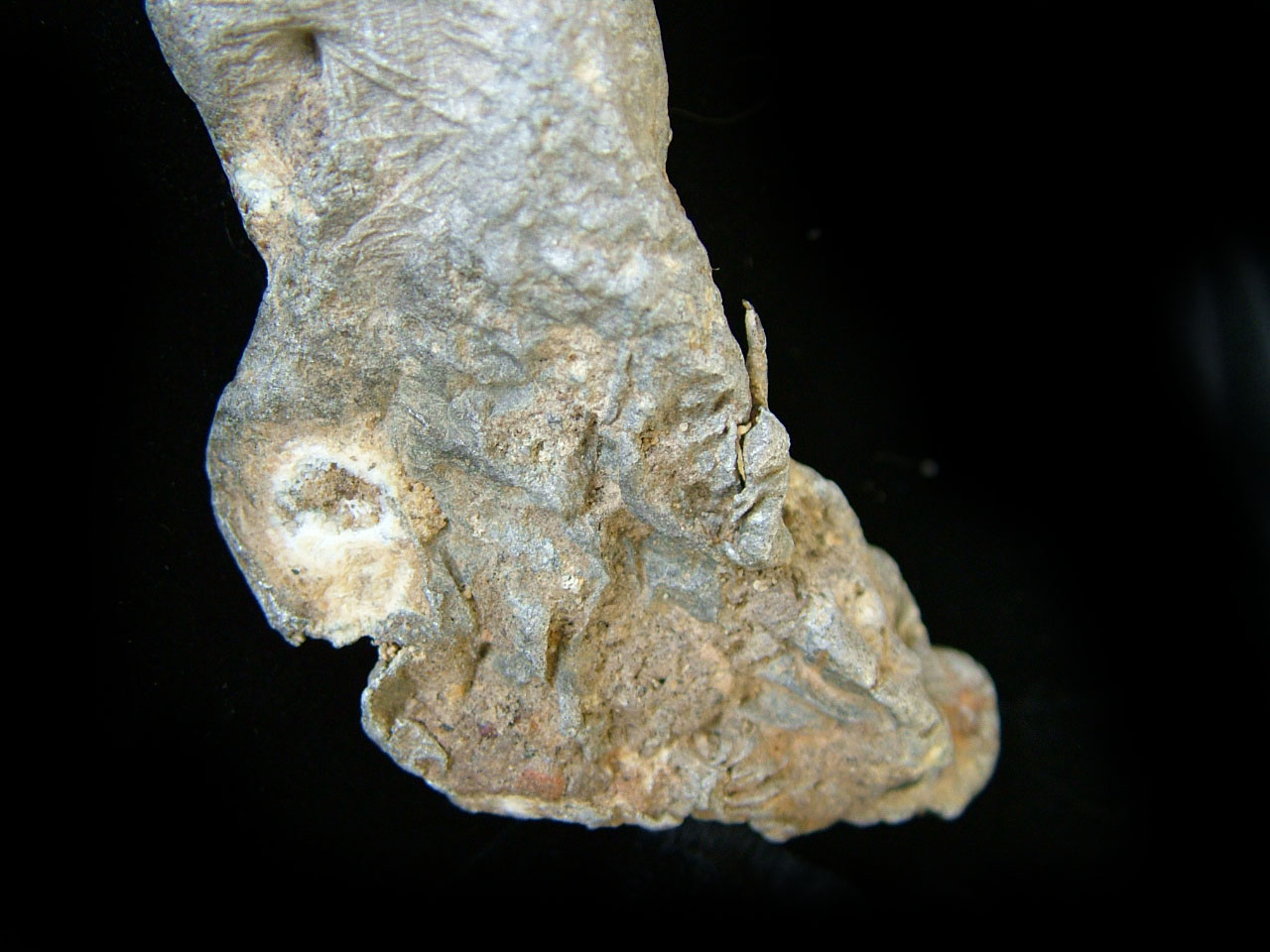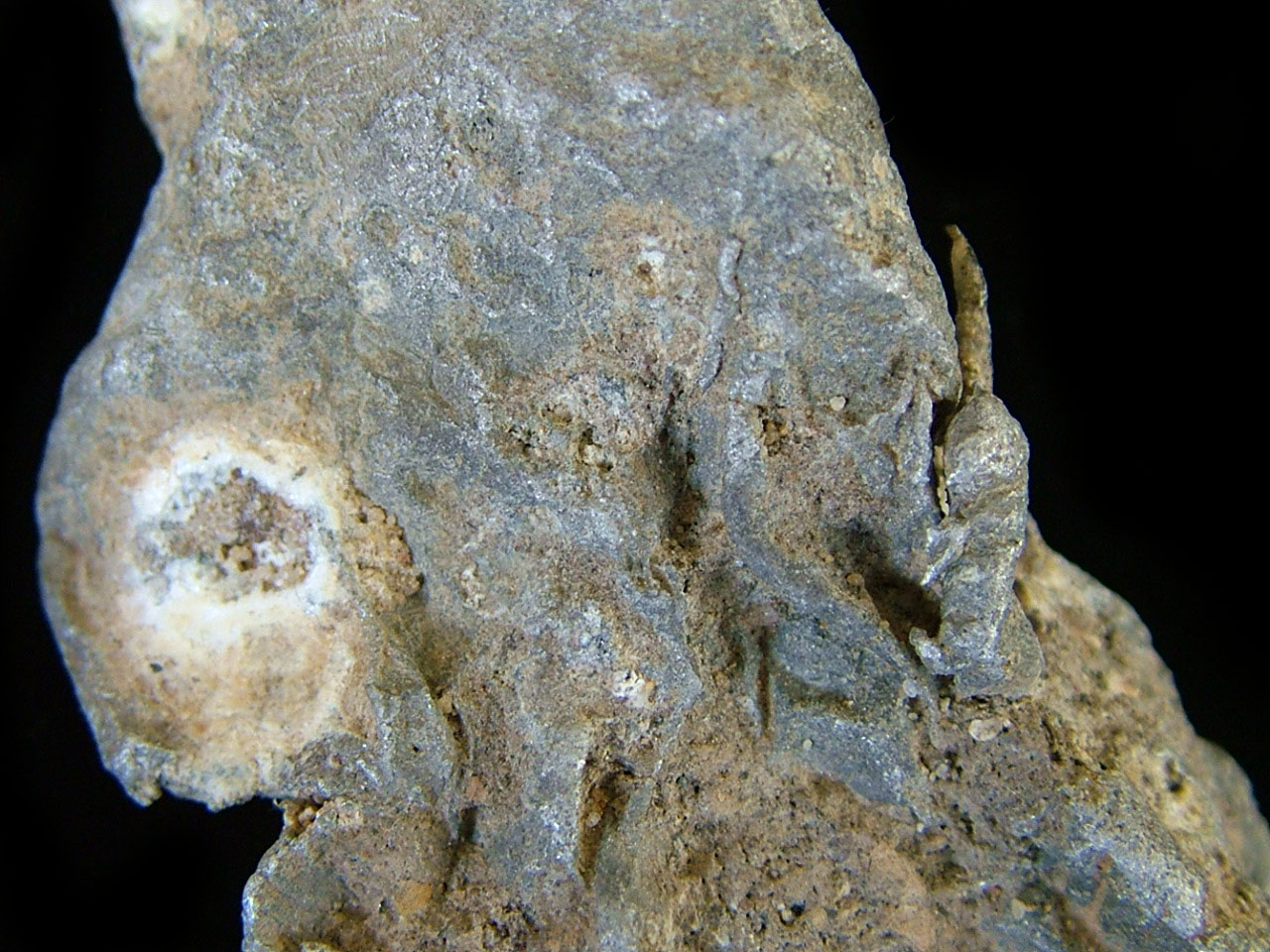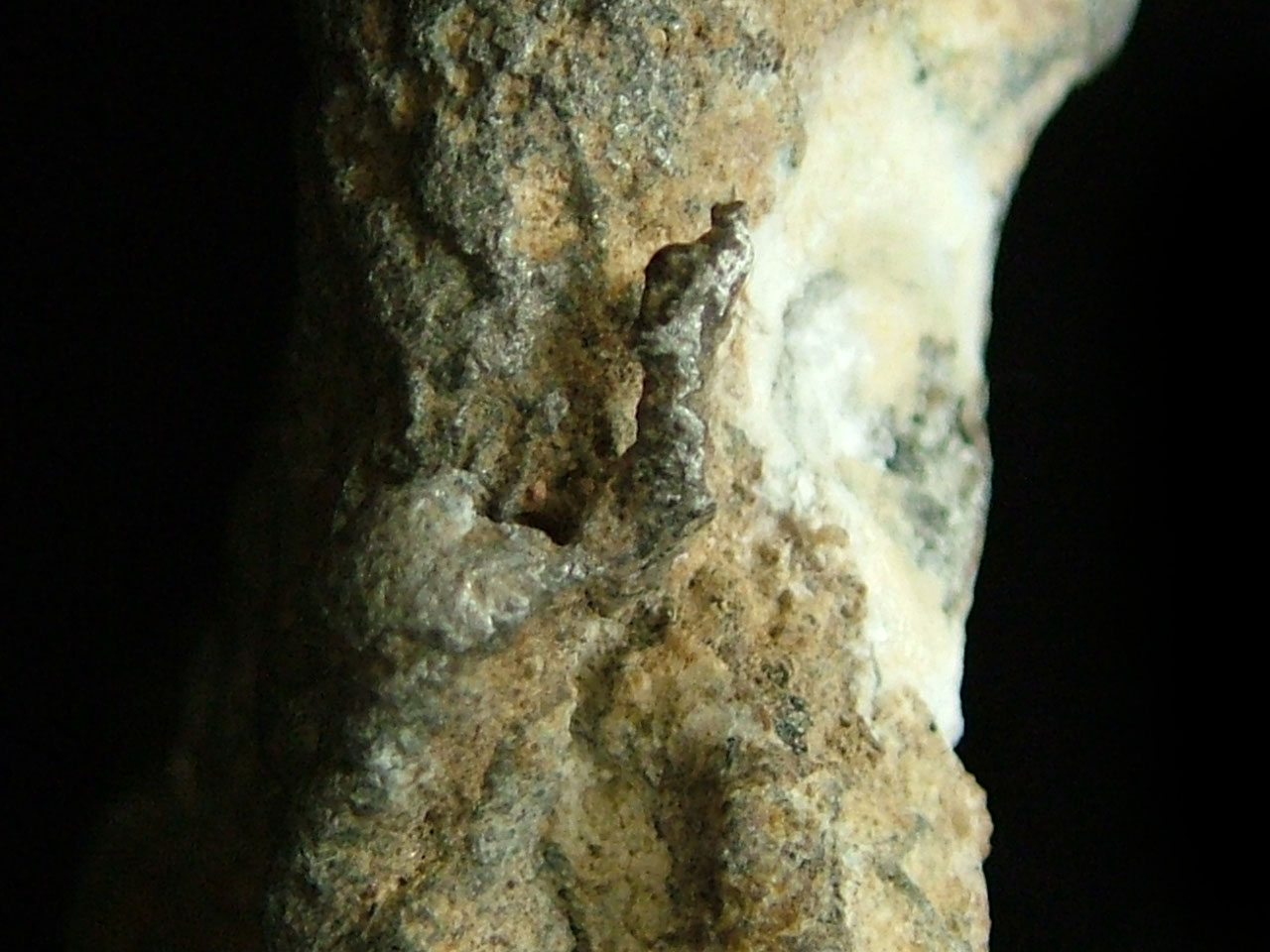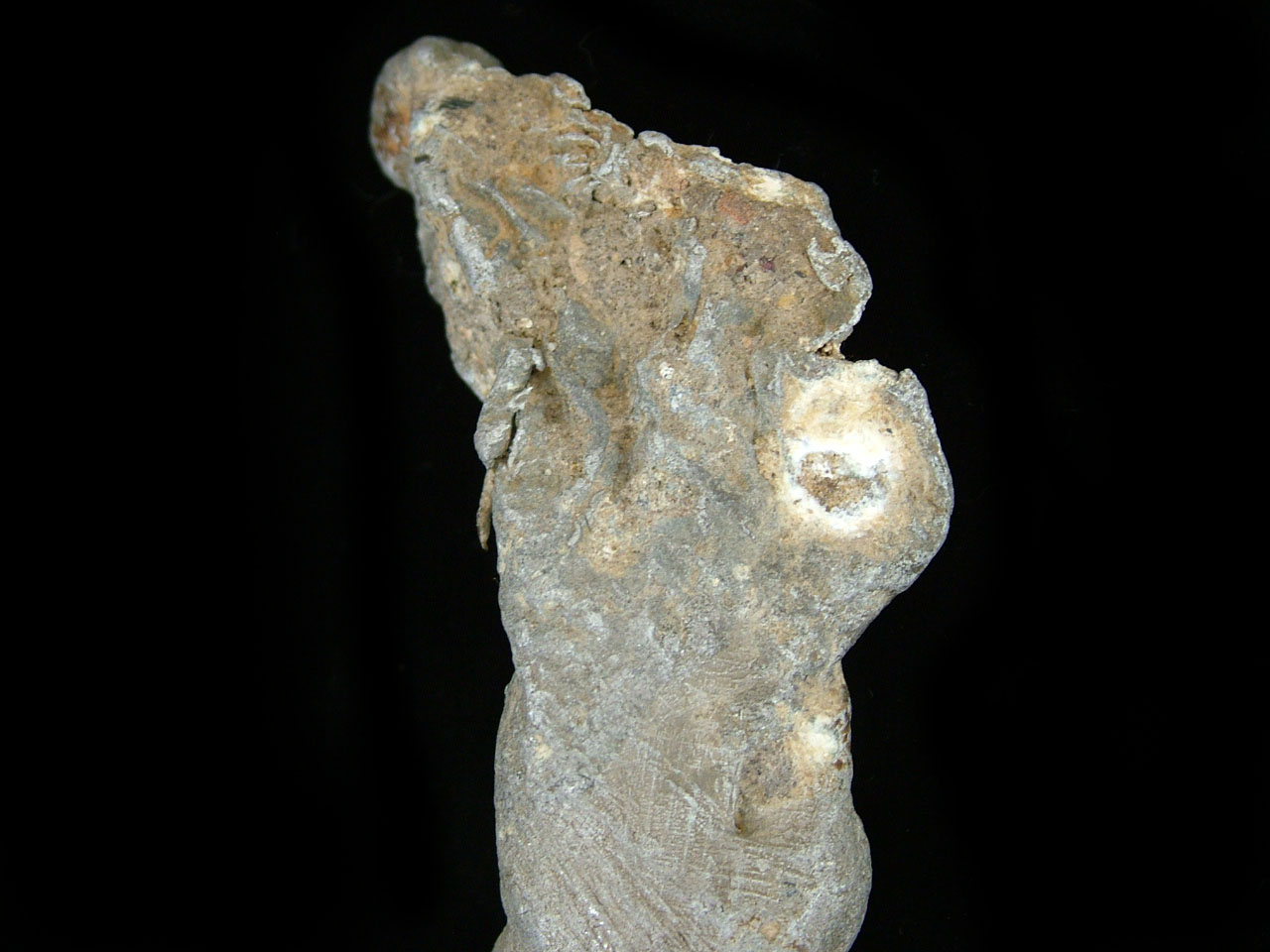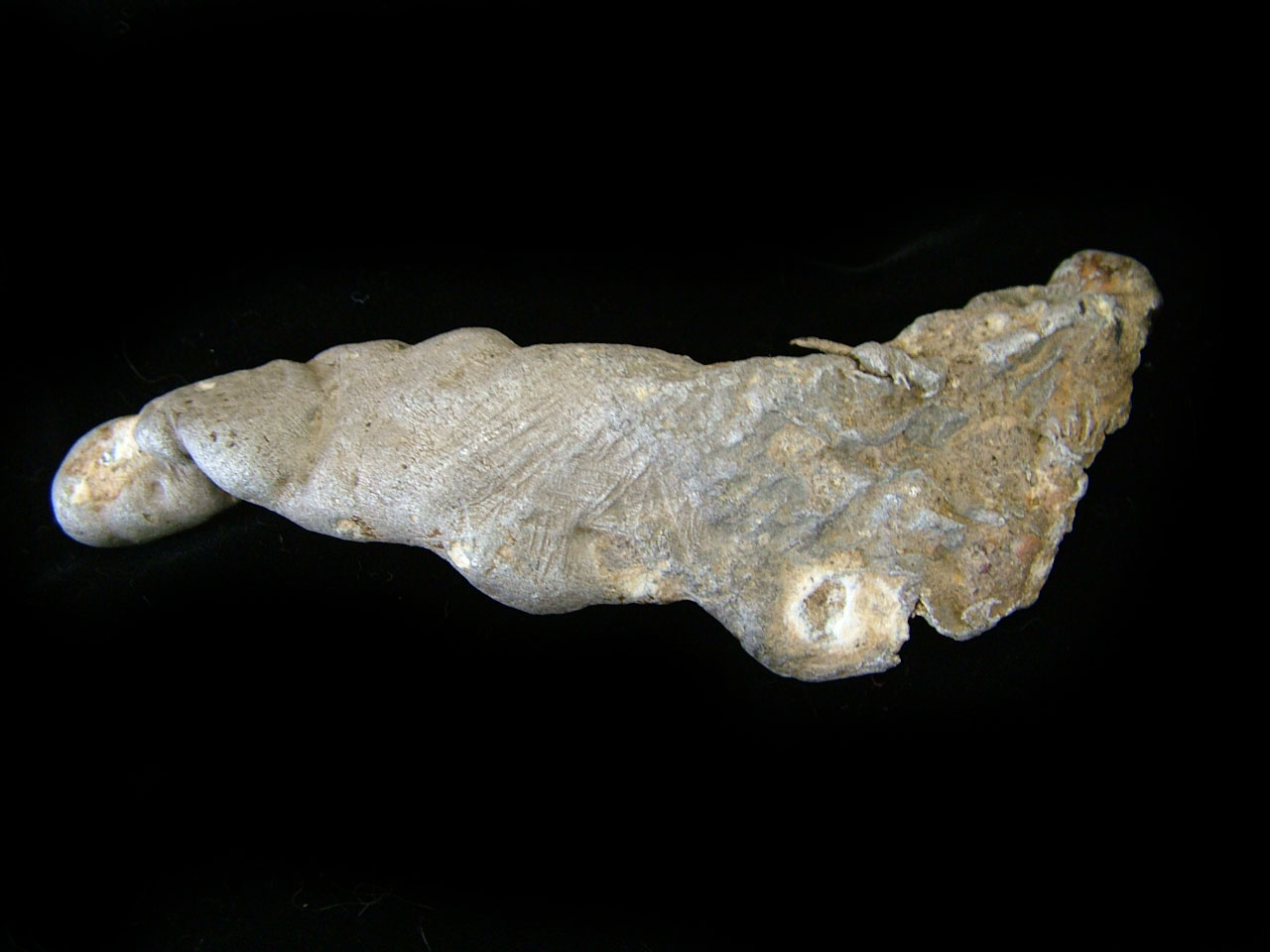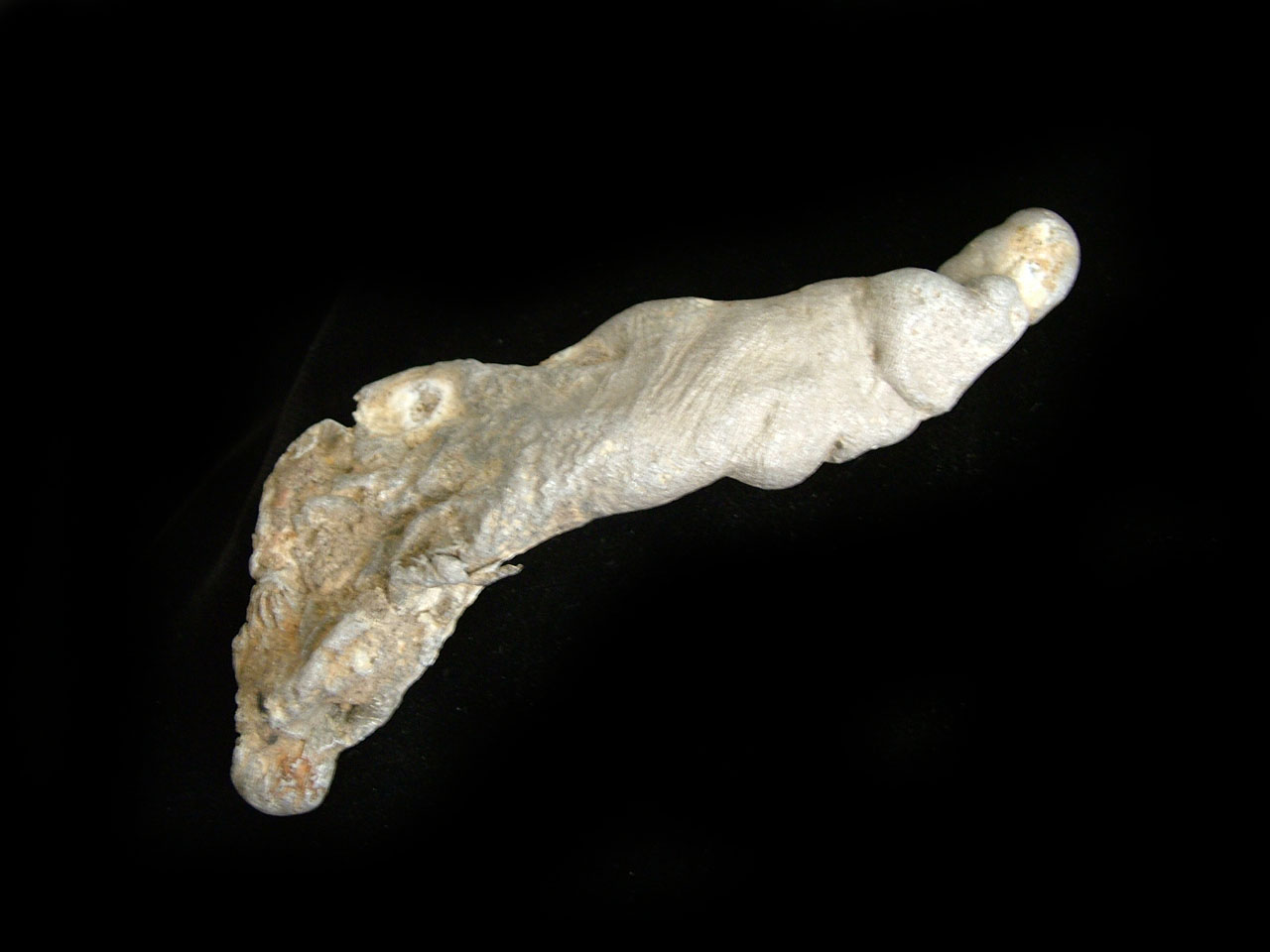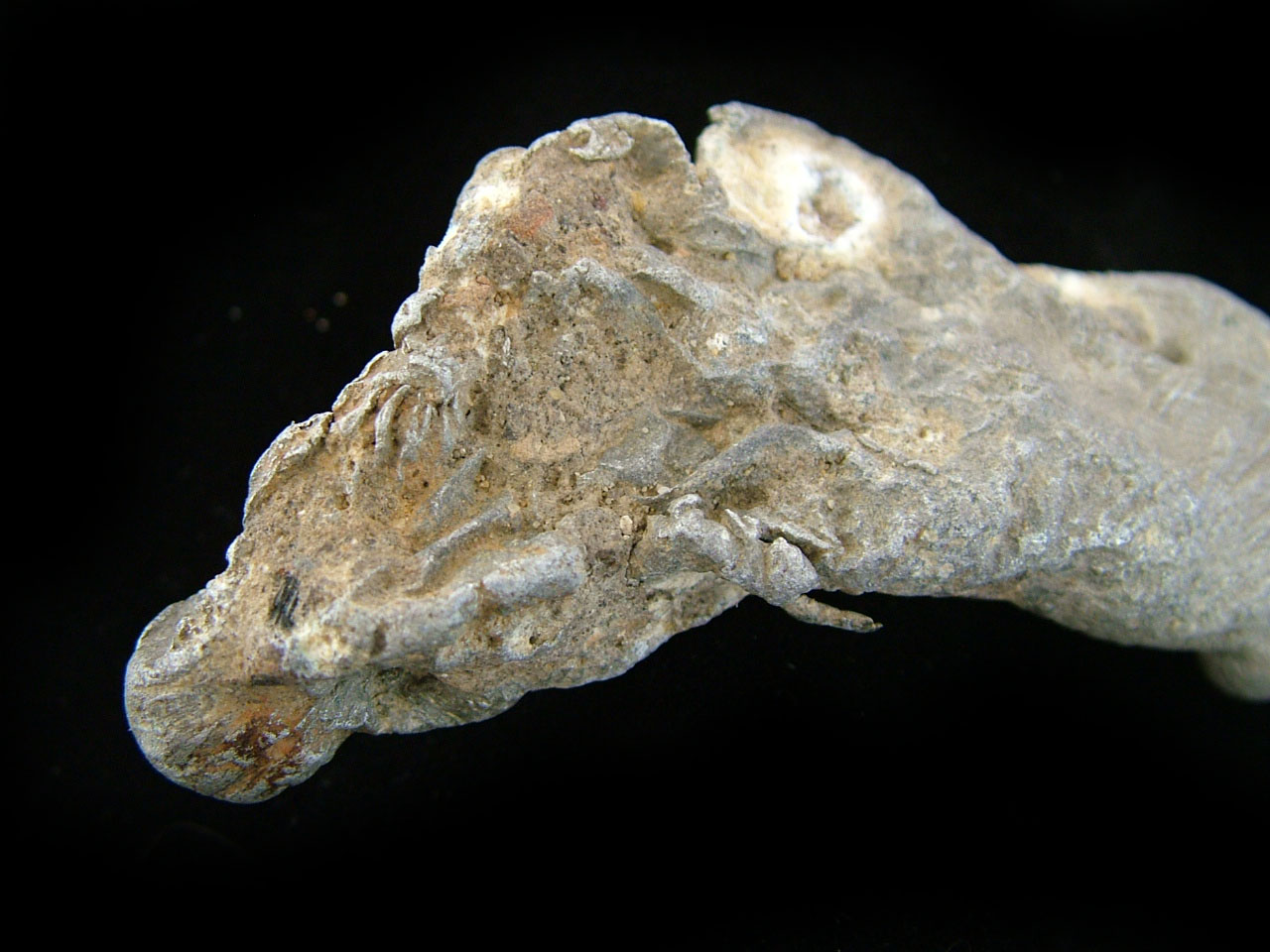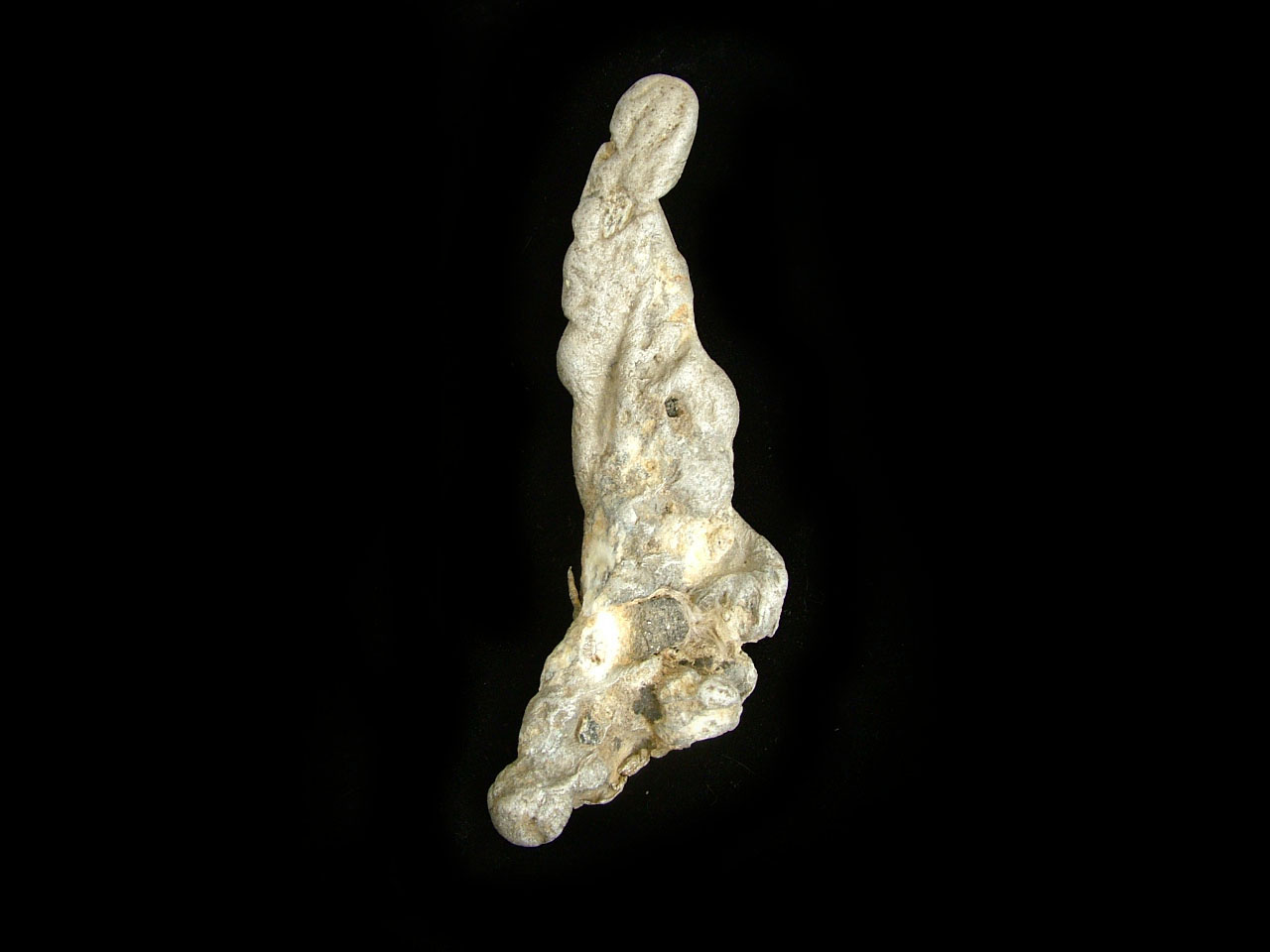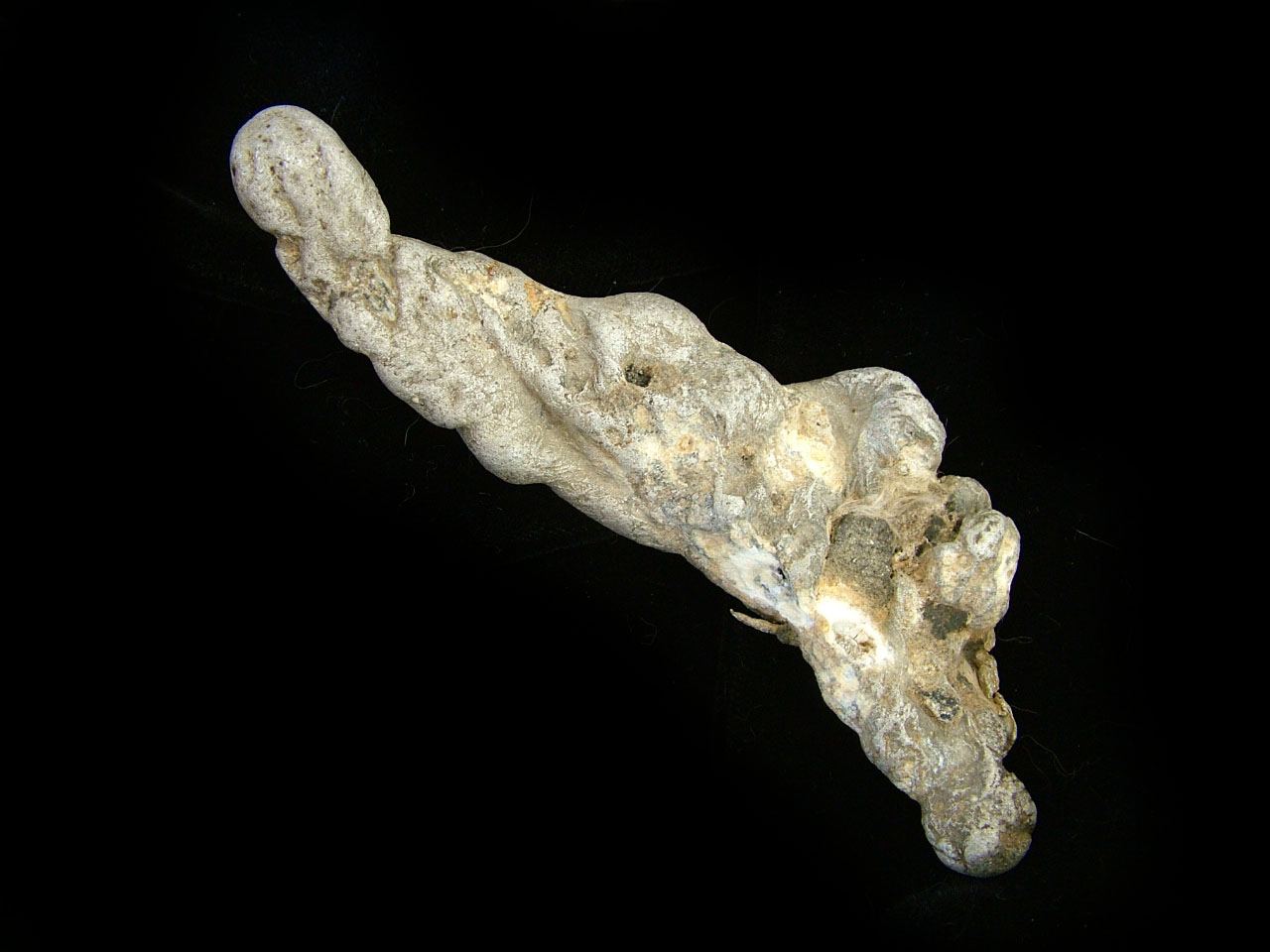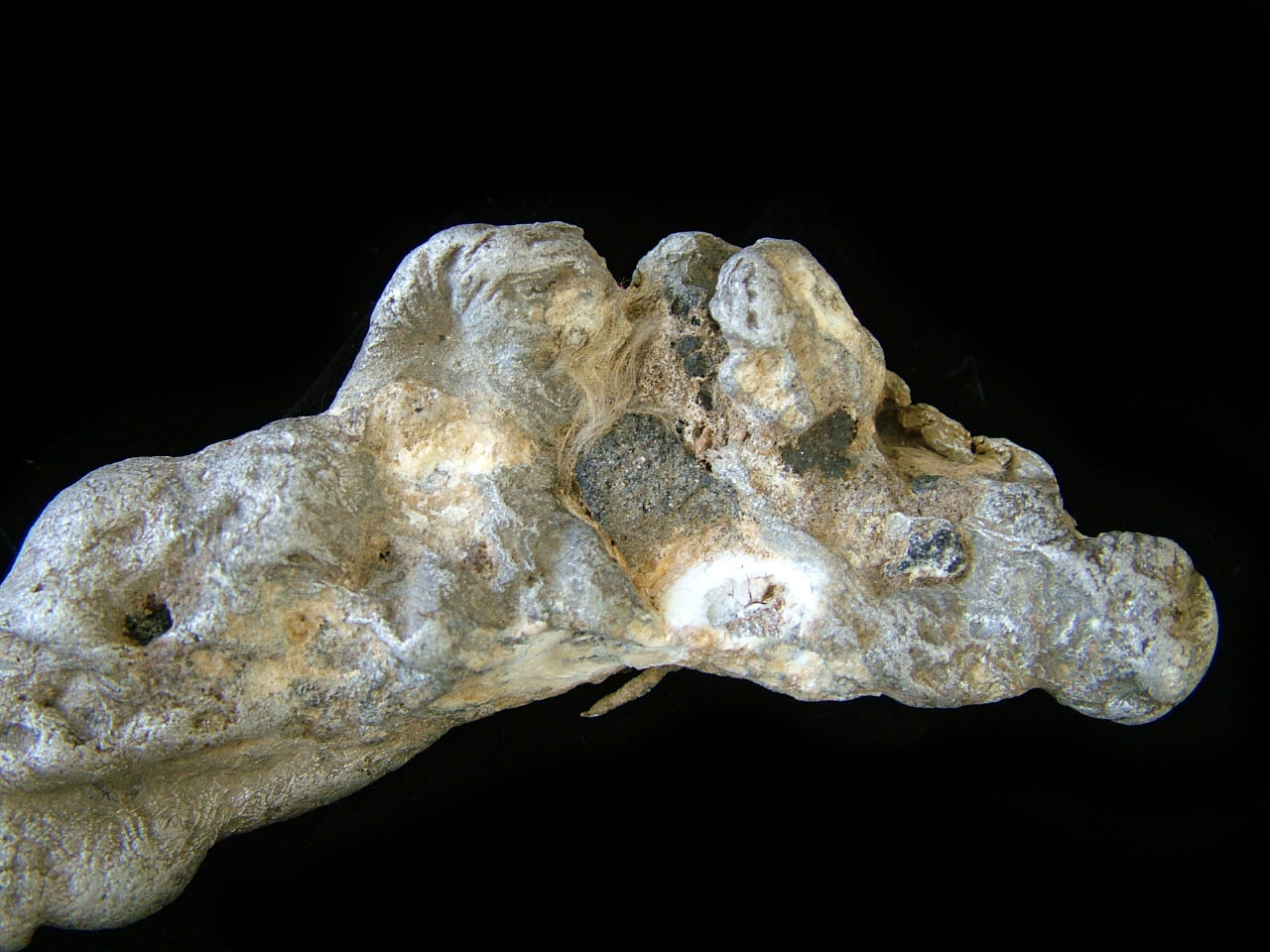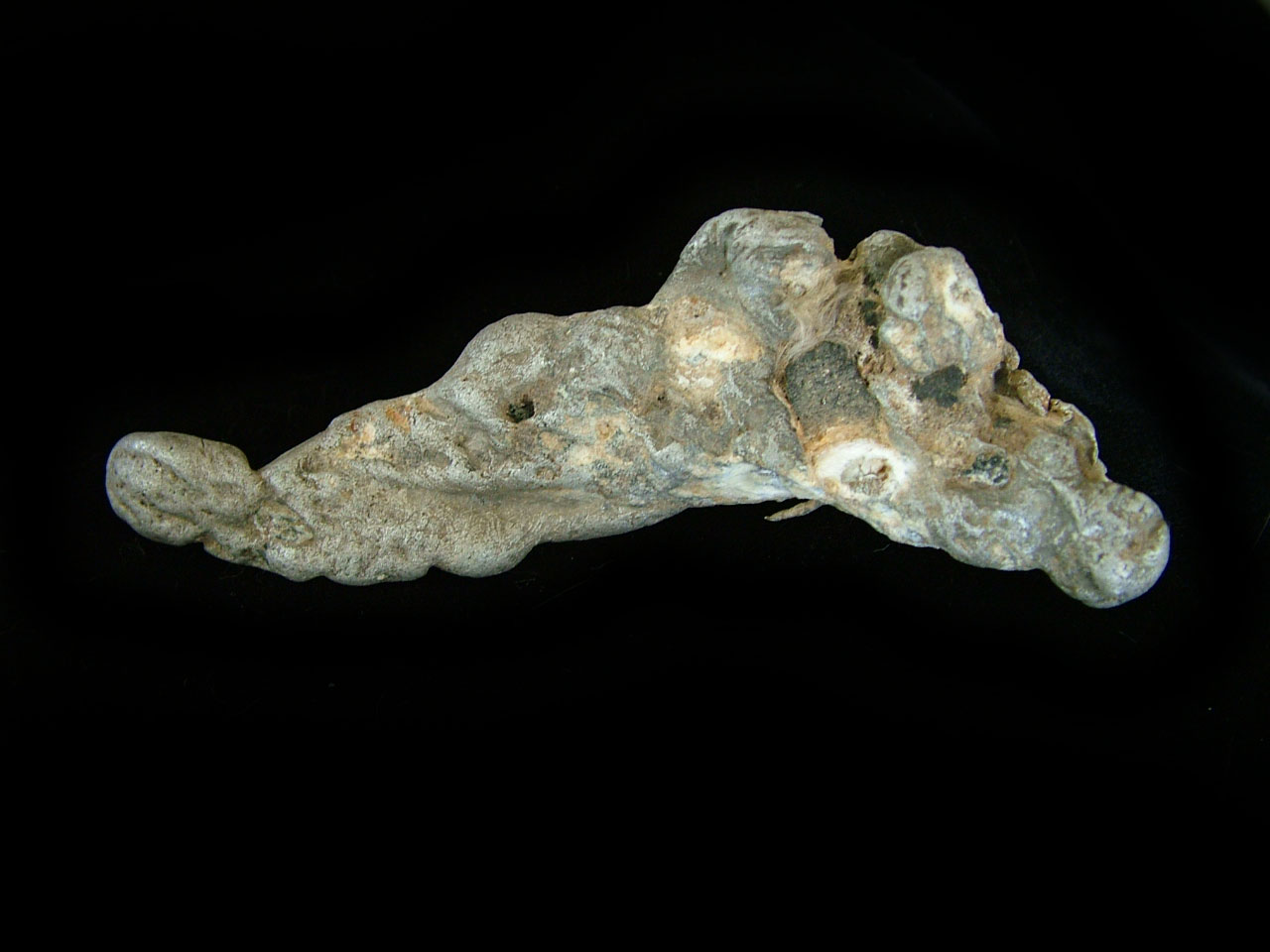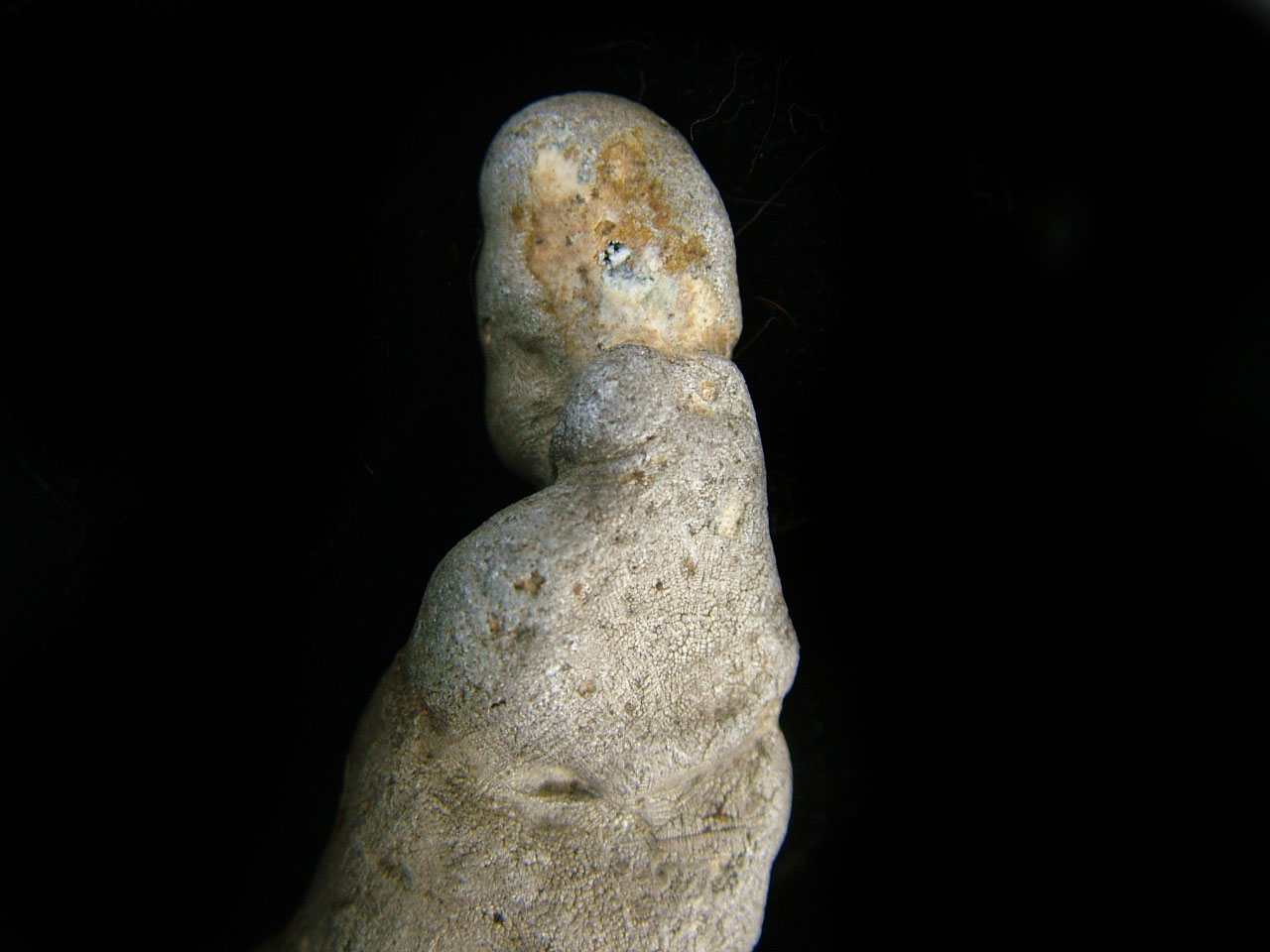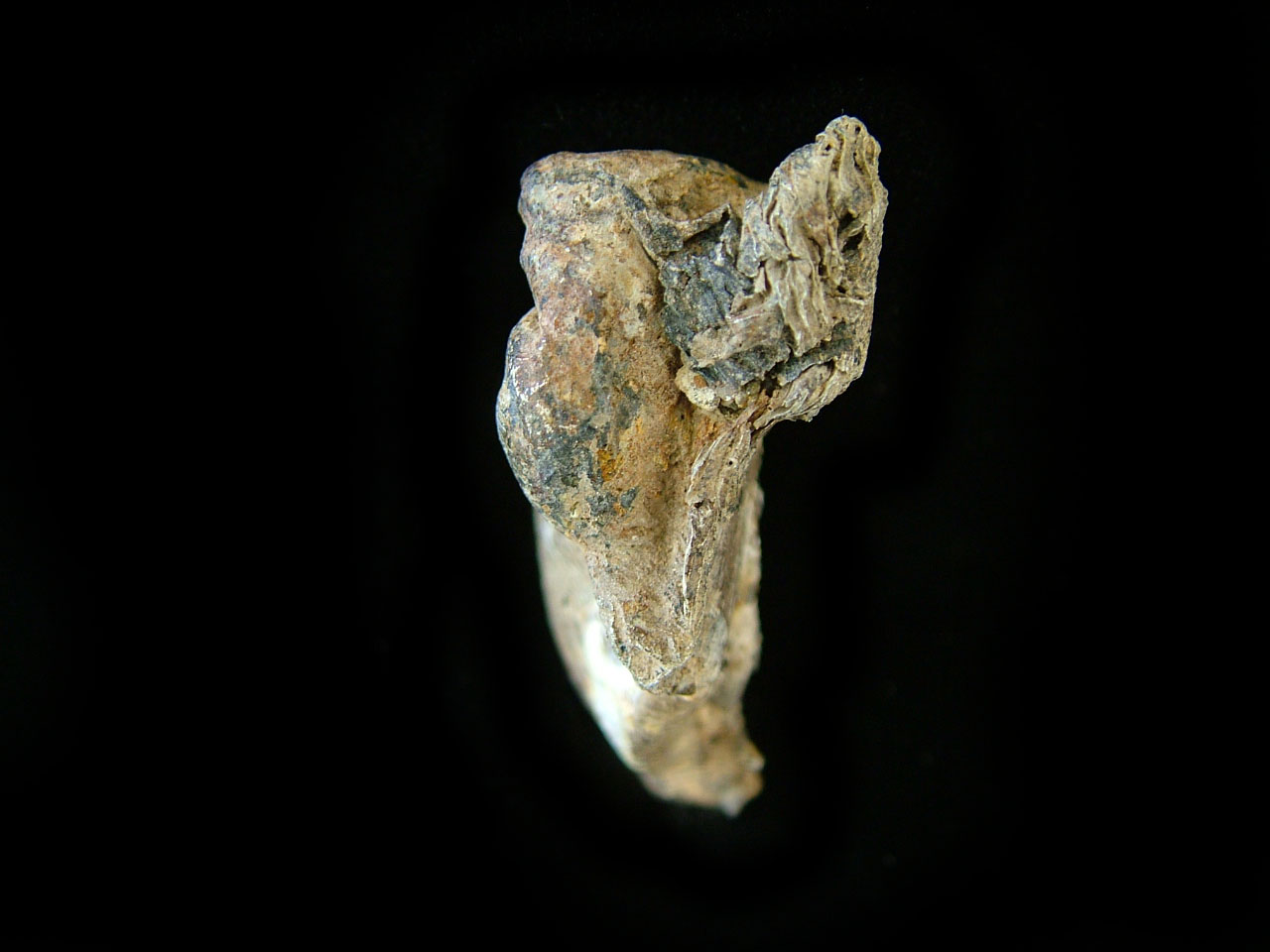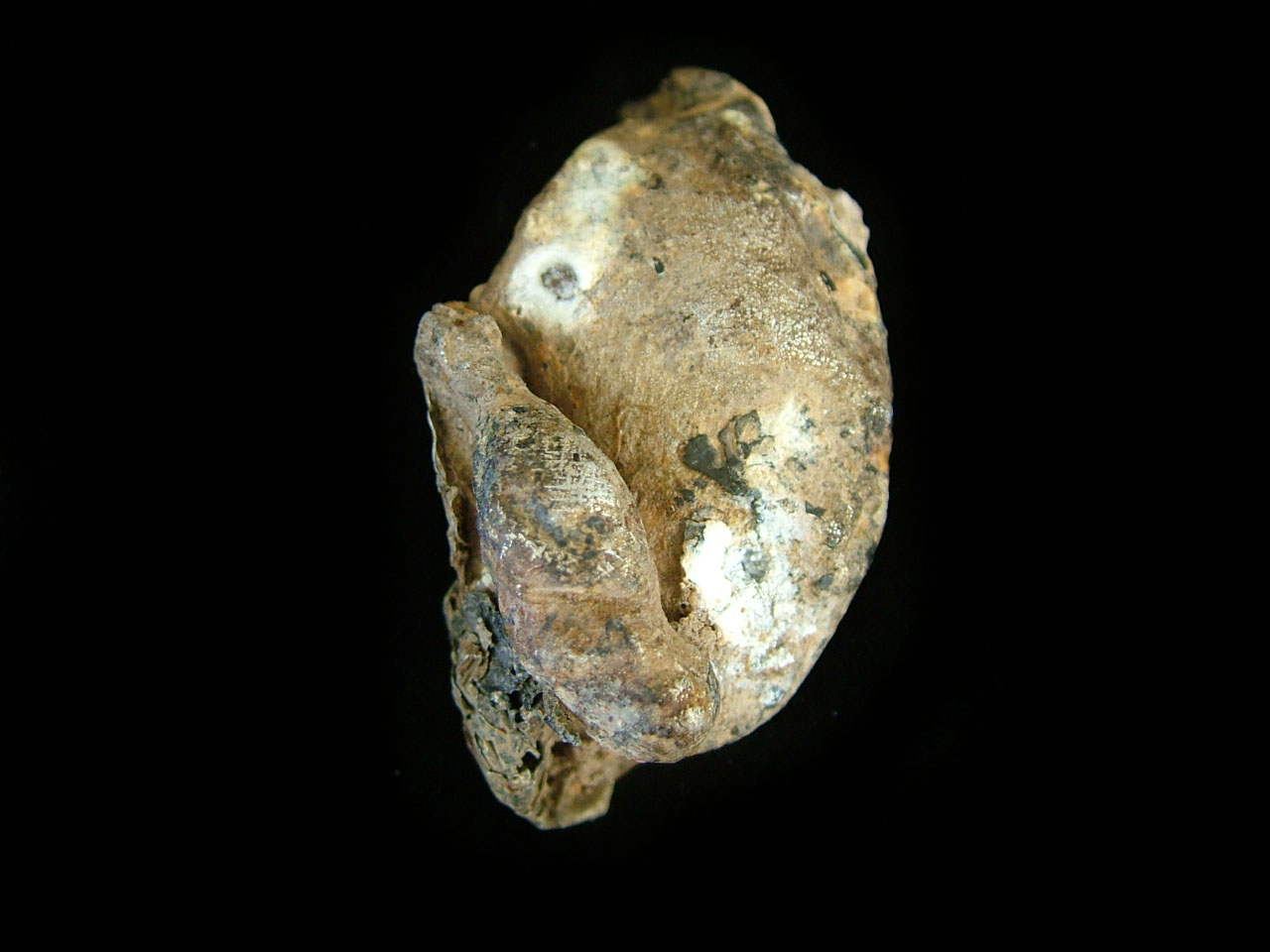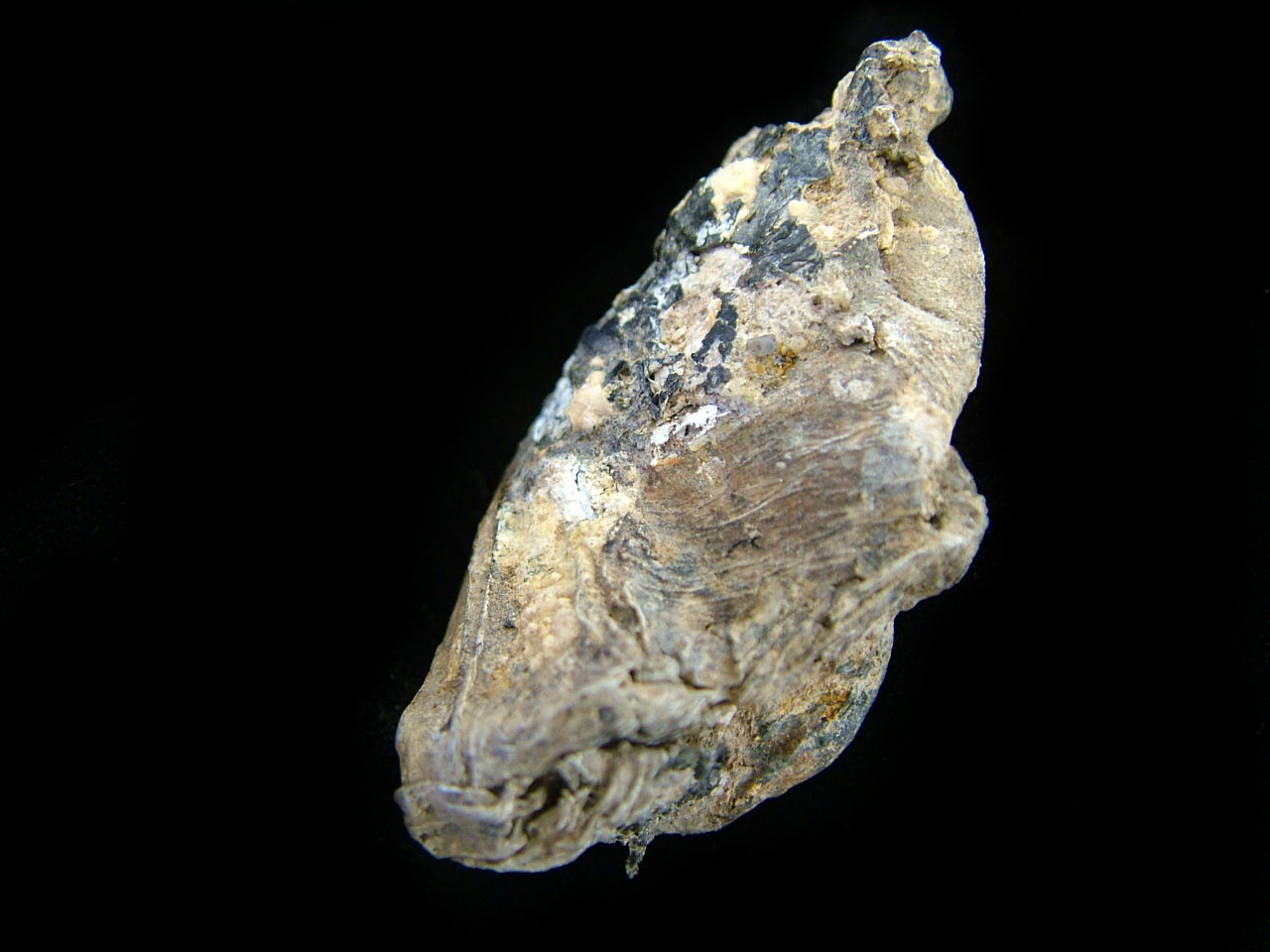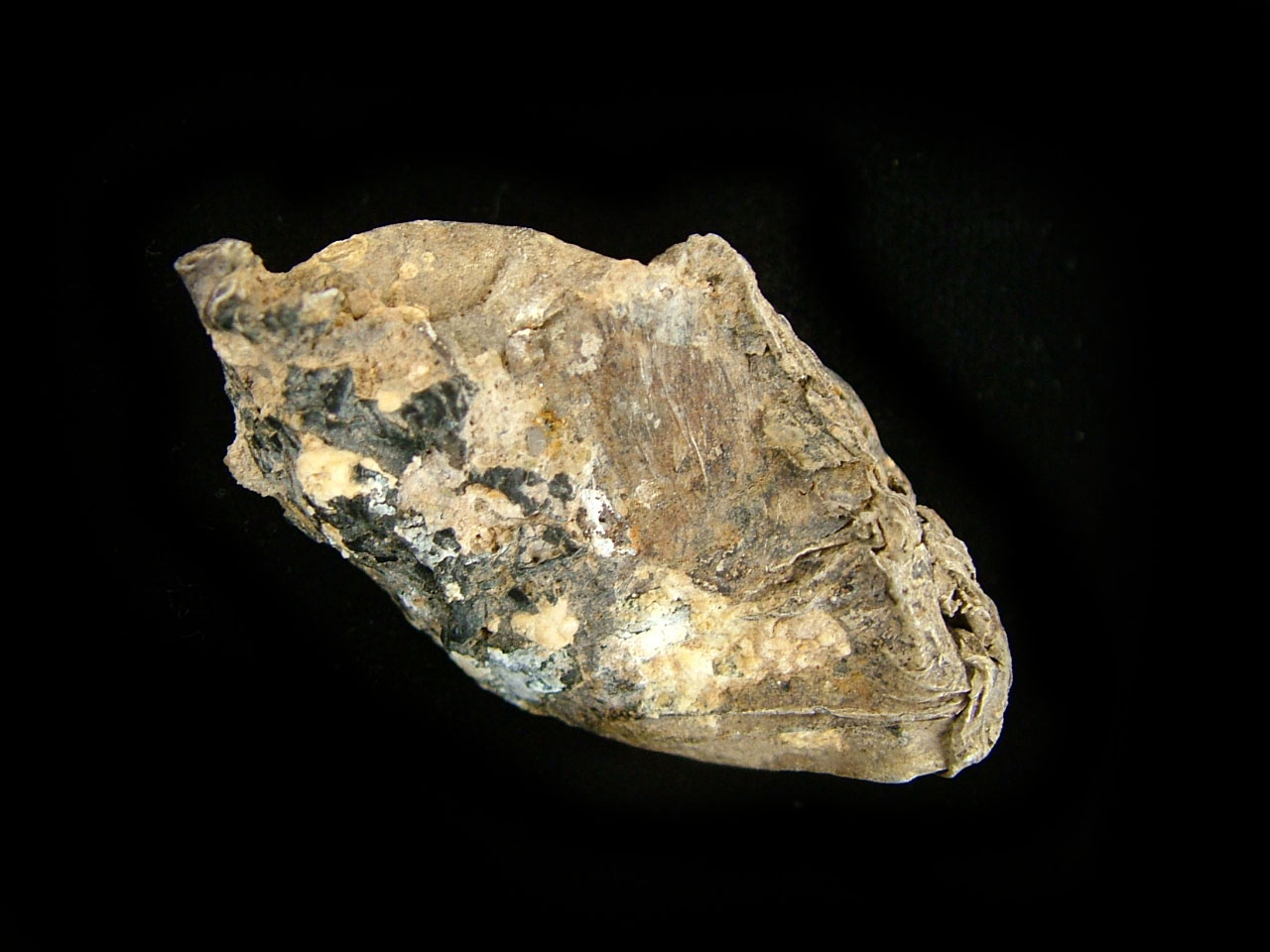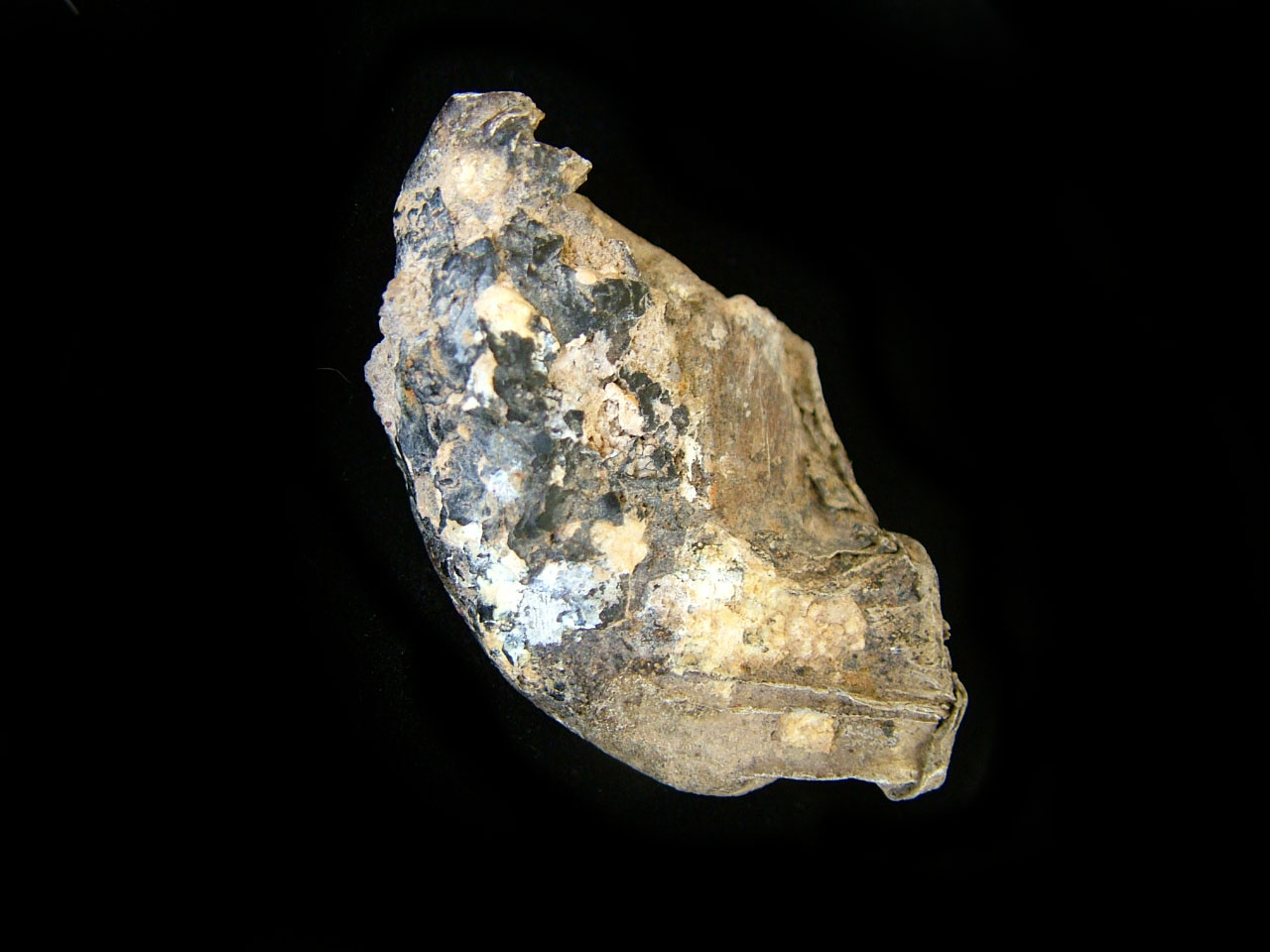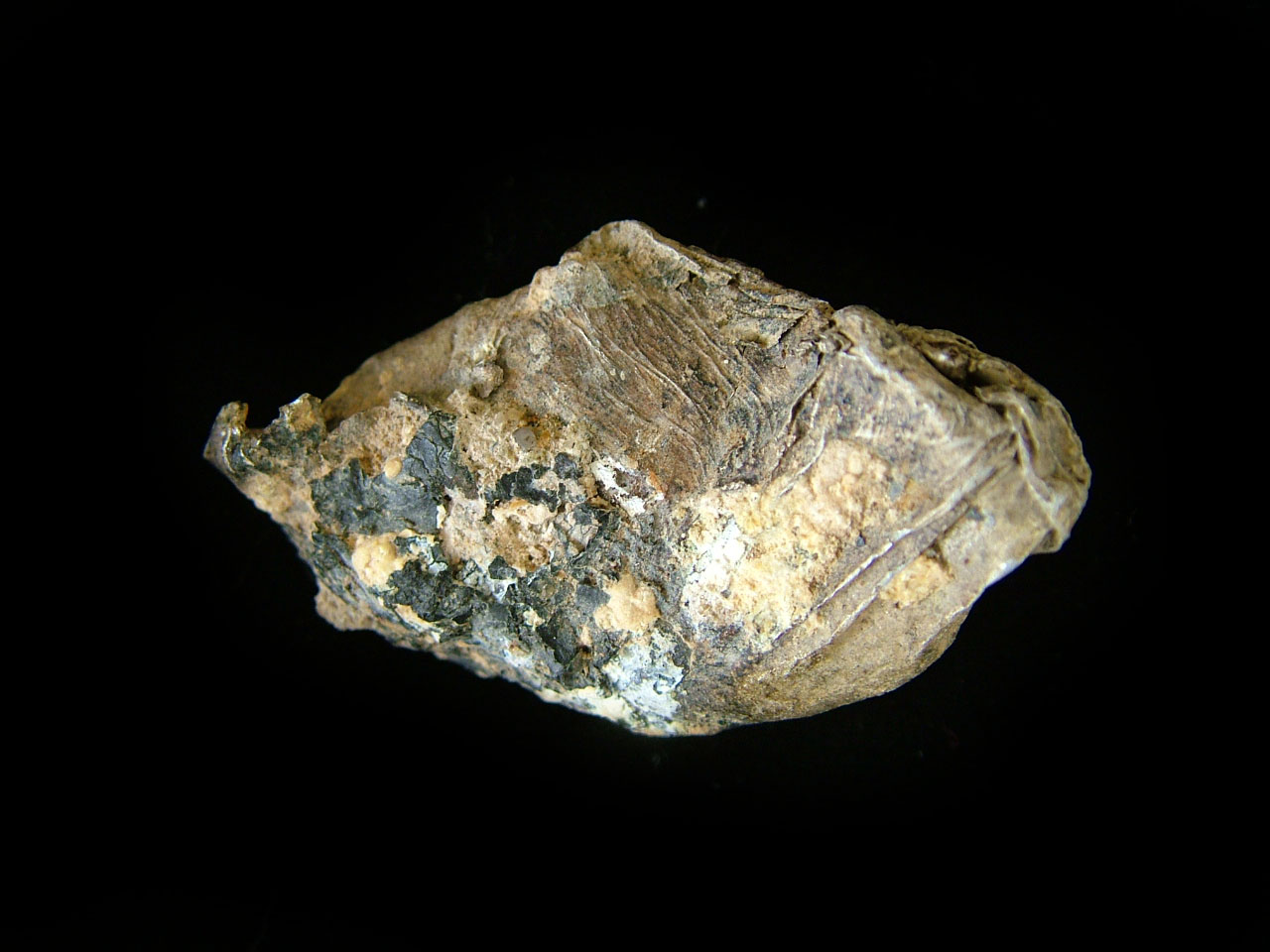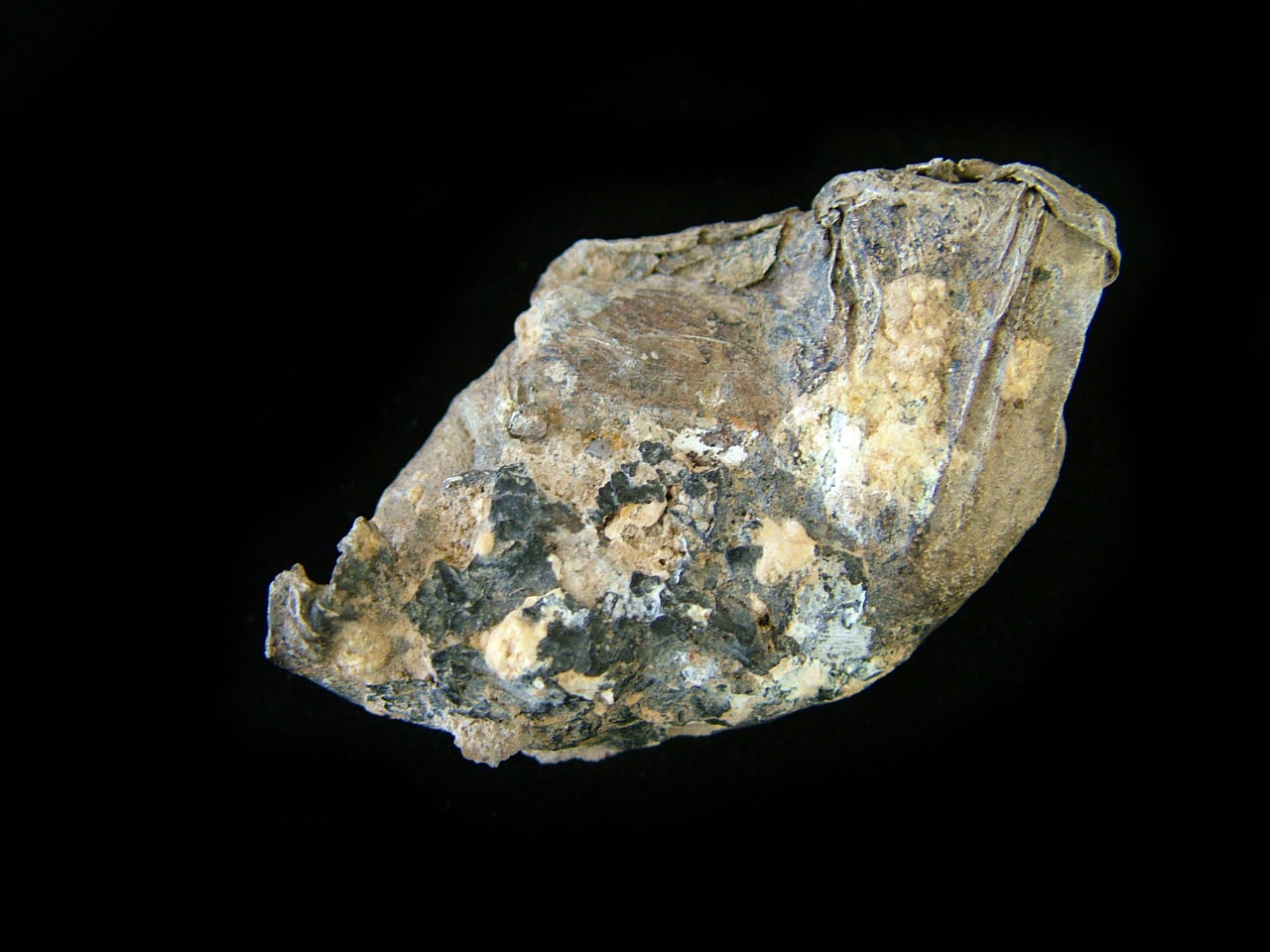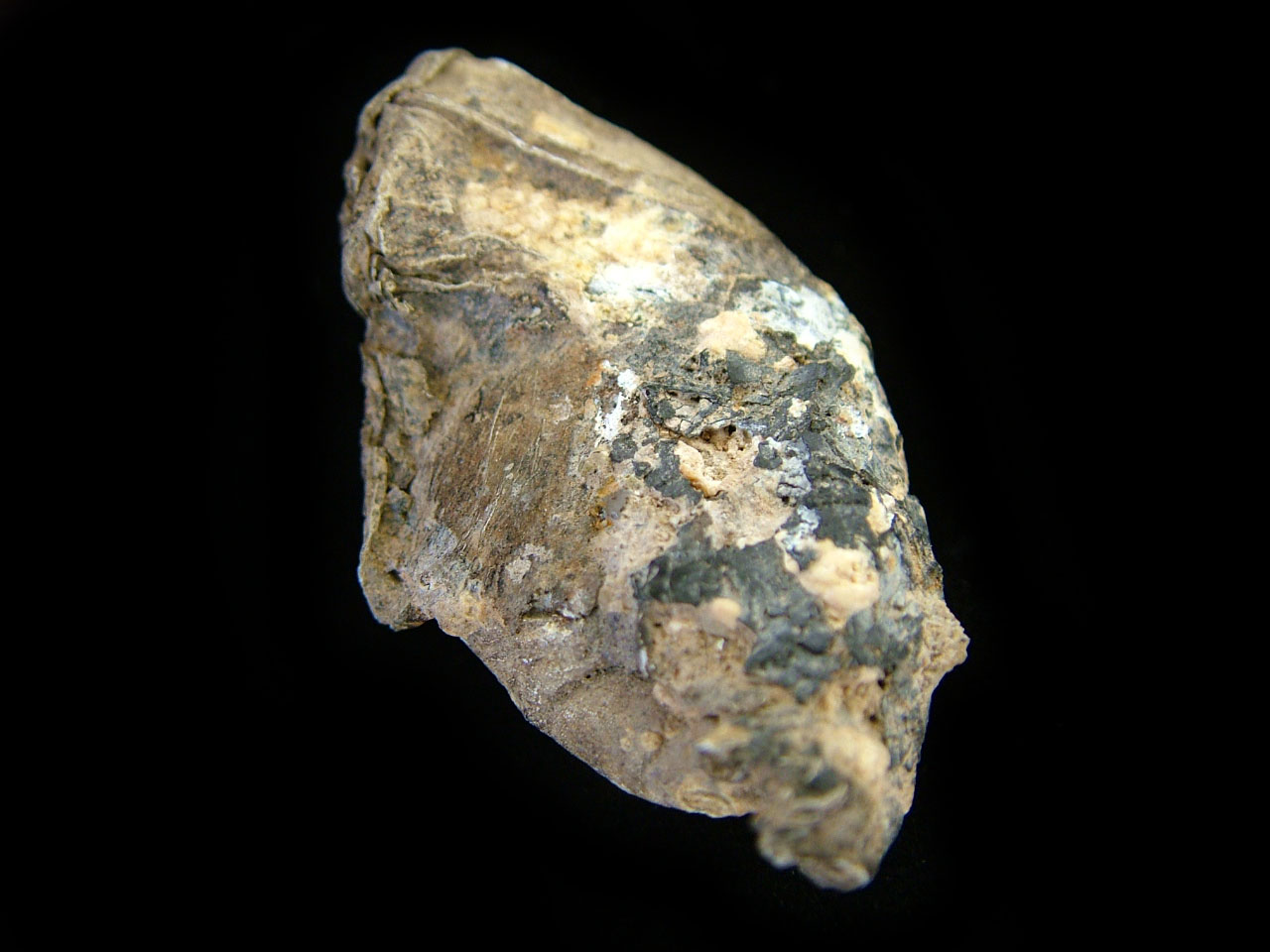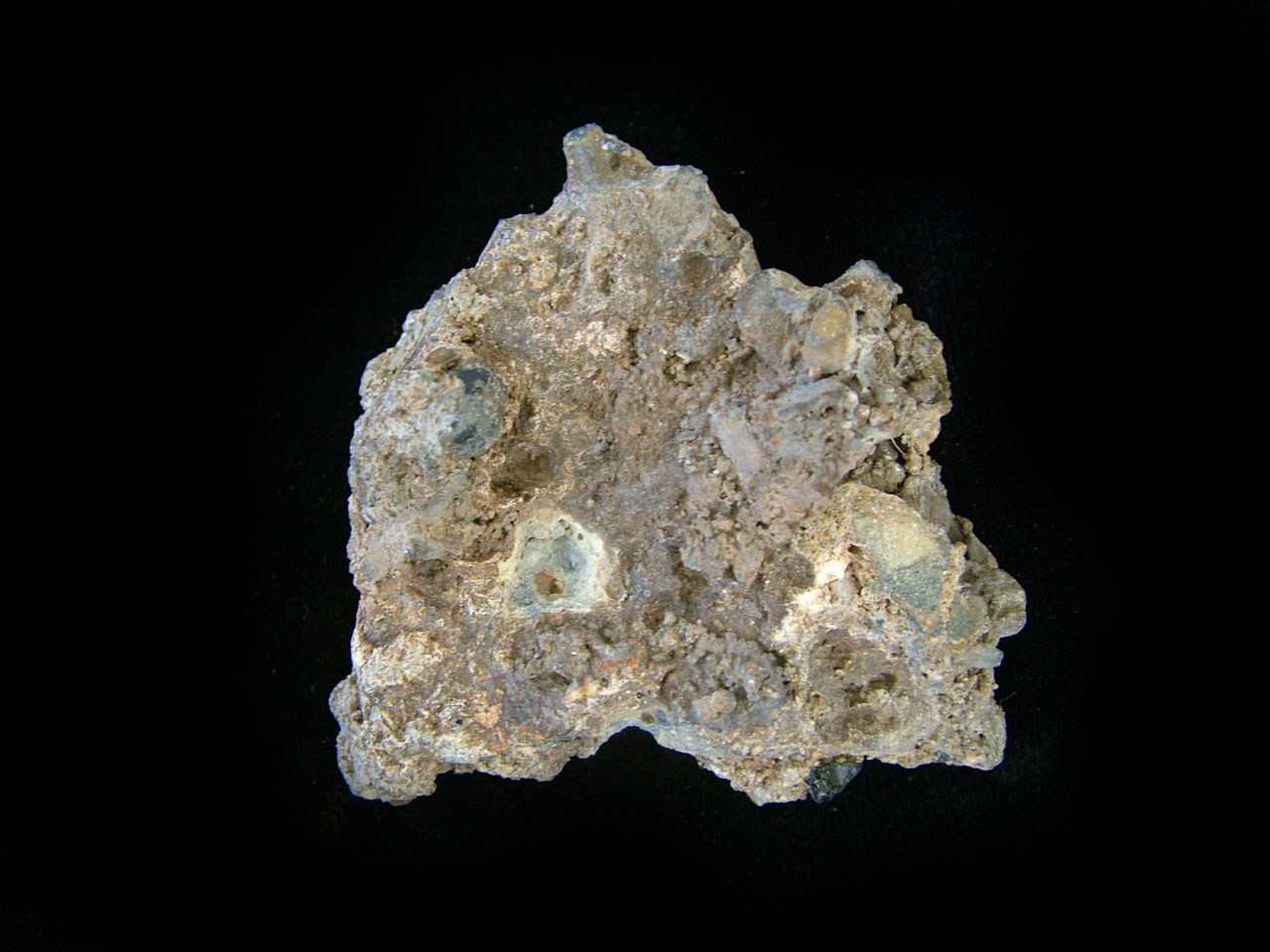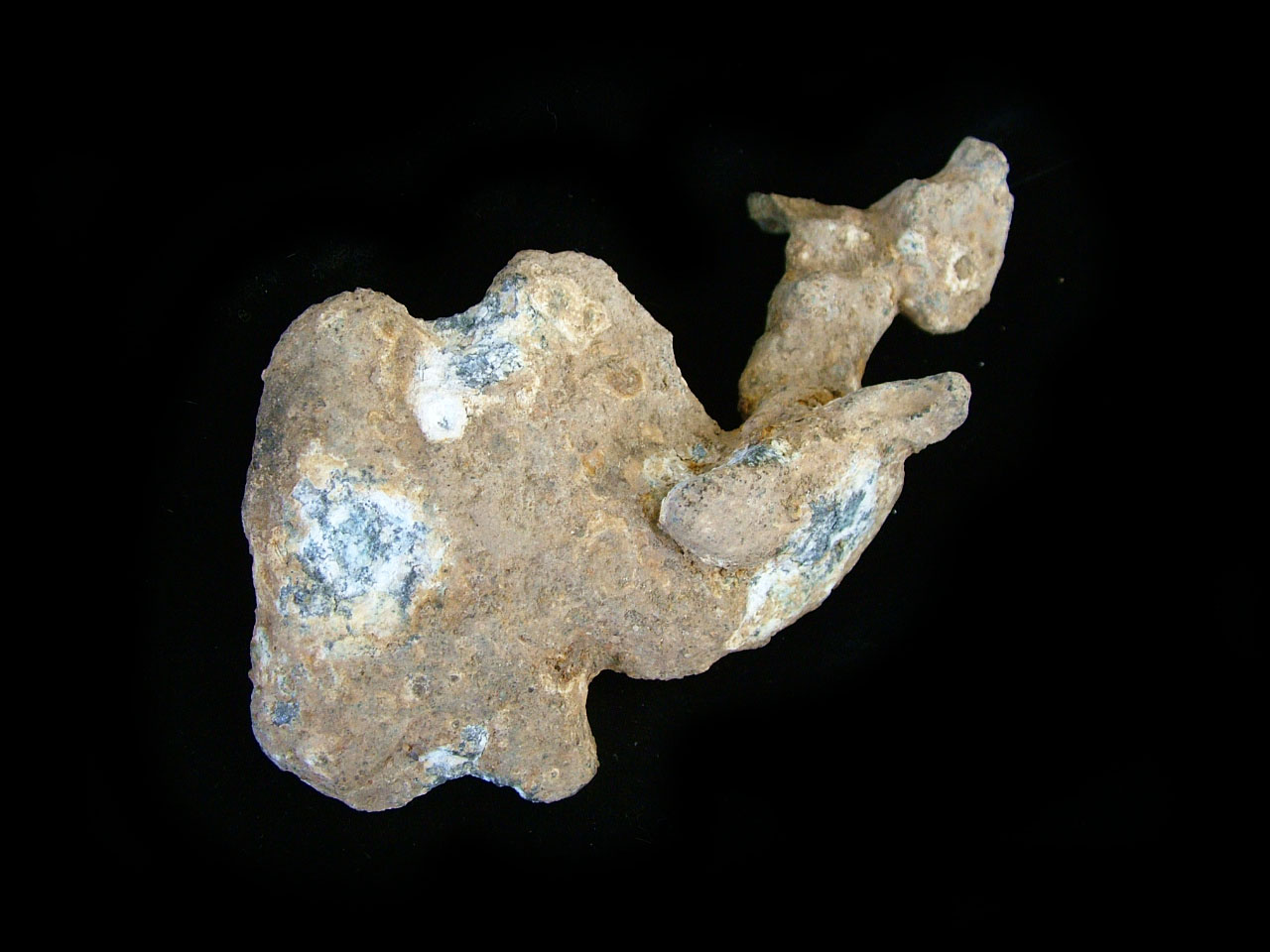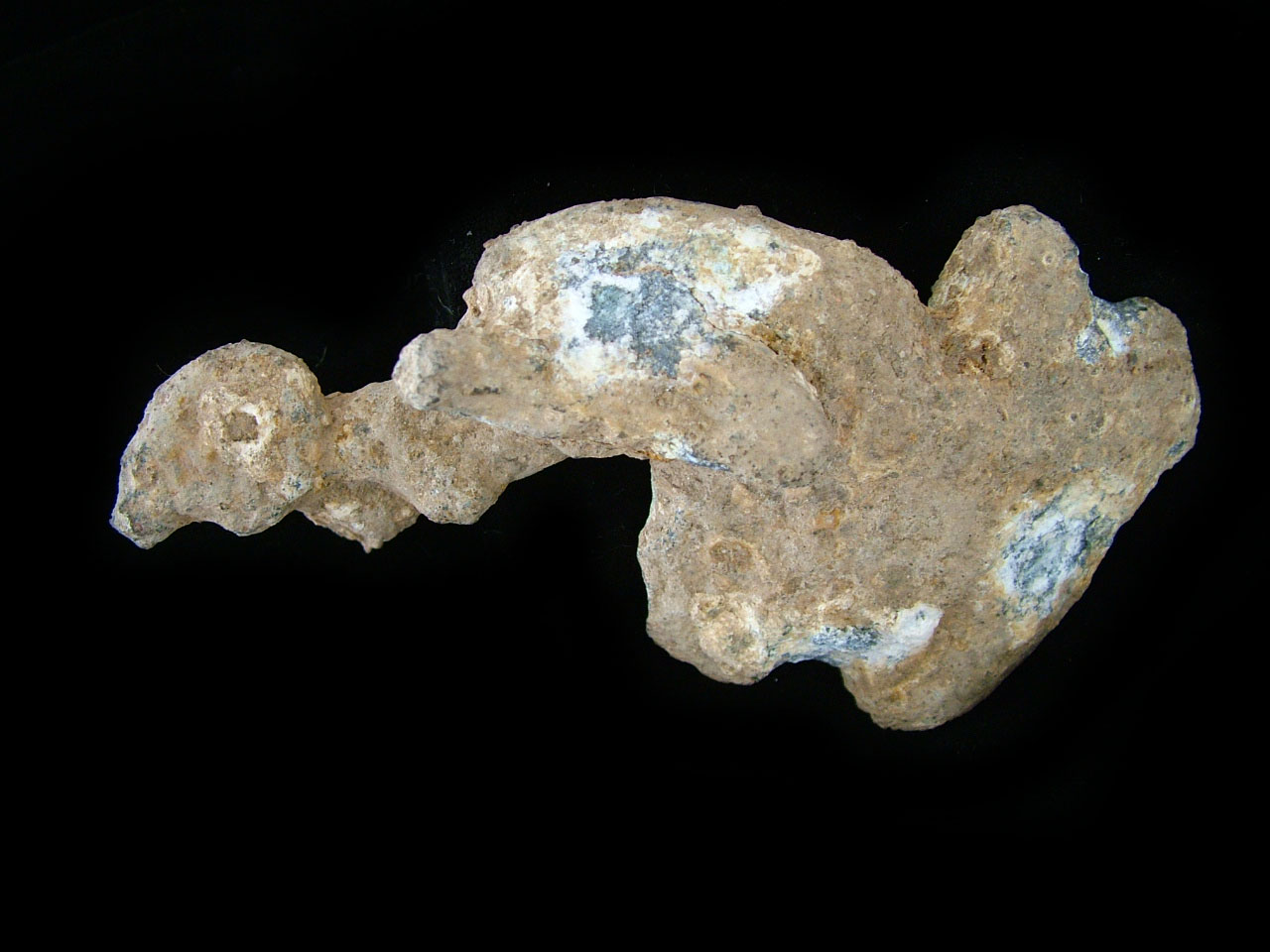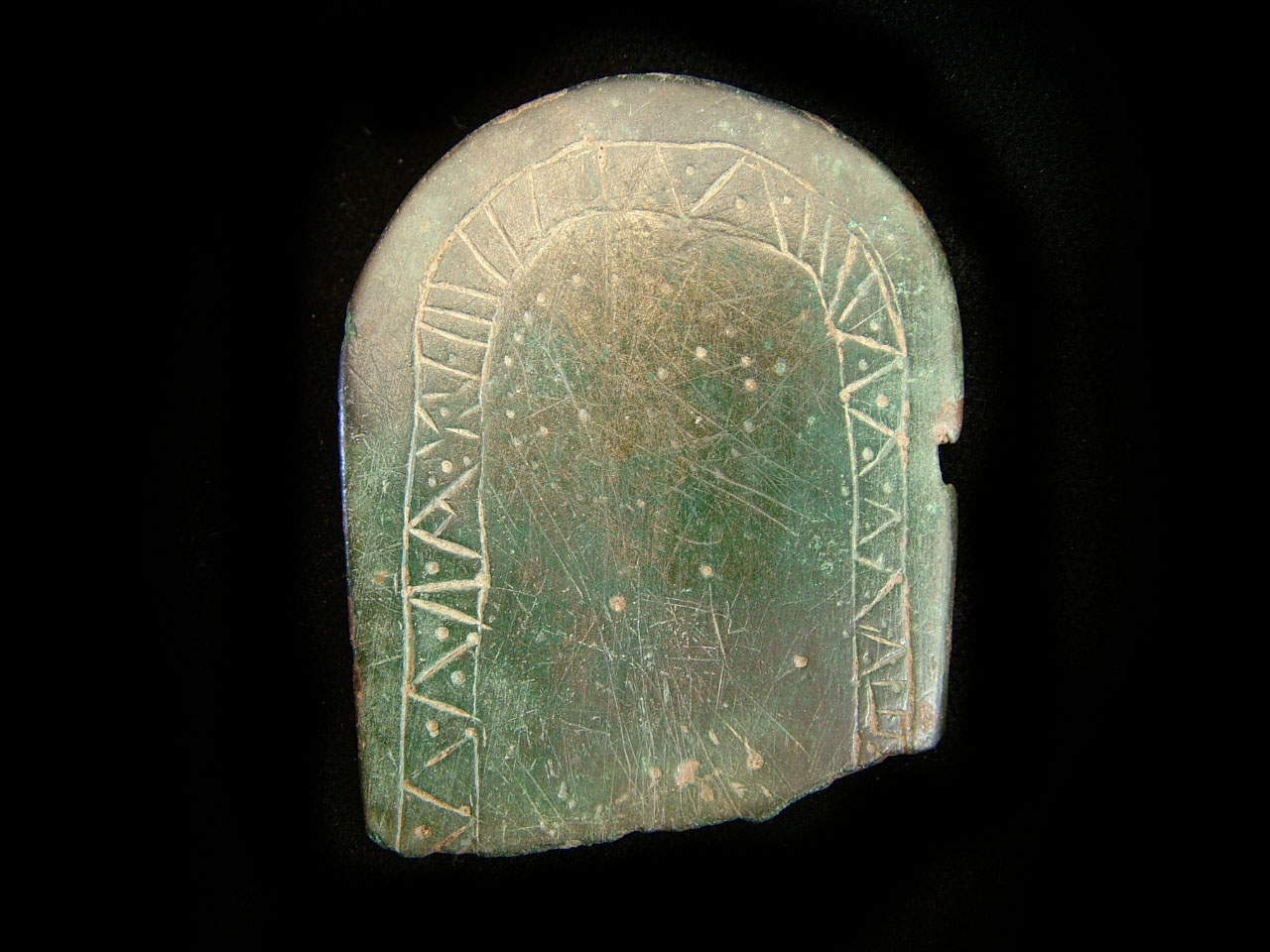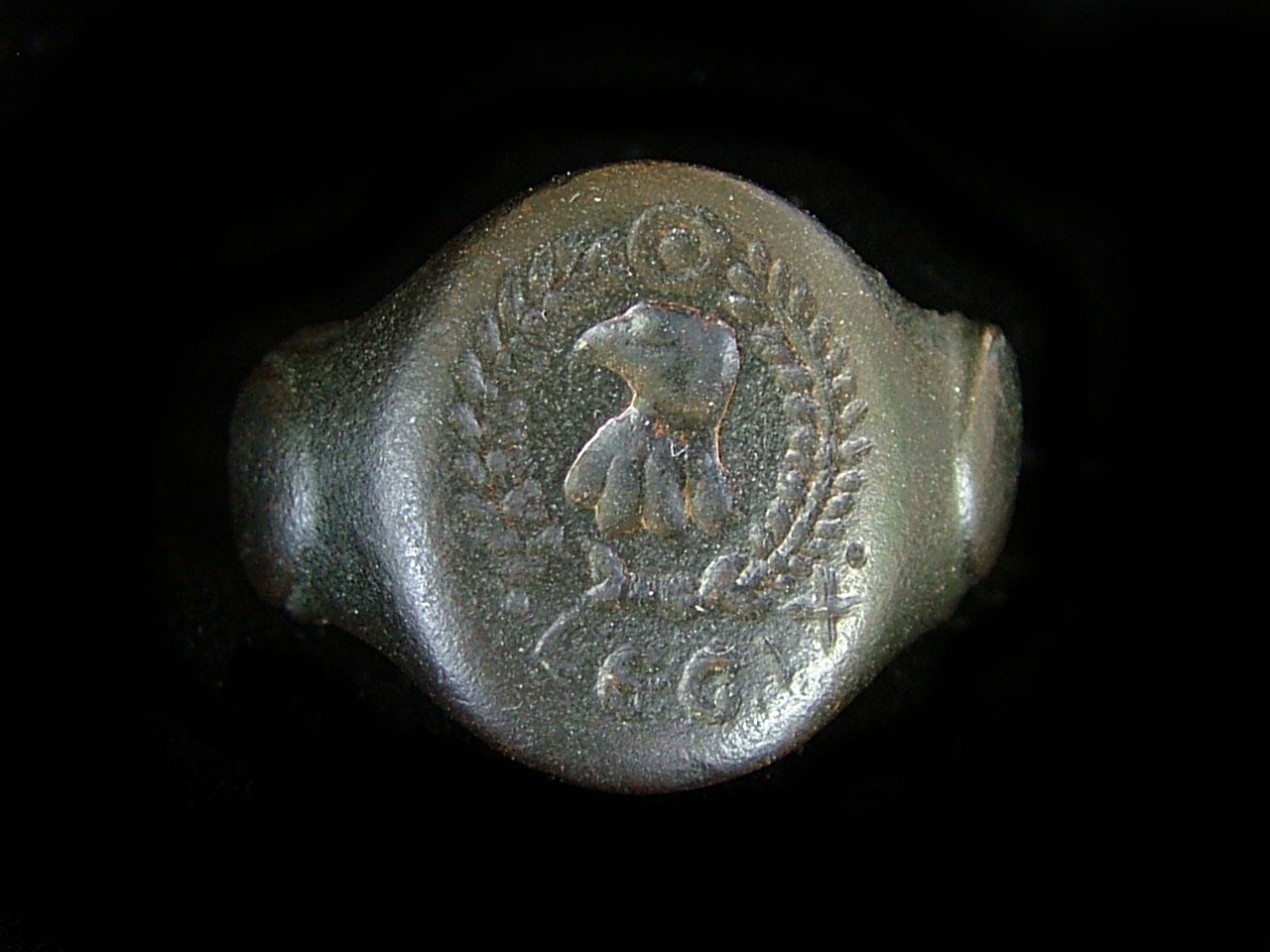 |
|---|
ANCIENT AMERICAN INDIAN ROMAN LEGIONARY "THUNDERBALL"
|
|||
SPECIAL ANNOUNCEMENTS |
|||
|
Announcement and Update: Columbus Day Oct. 12, 2015
Over a year ago, I purchased 32 ancient Native American stone and clay artifacts which originated from Ohio and bordering states. After studying the objects all are indeed ancient Native American, but then five were reworked as votives by the Romans who participated in the expedition of 71 AD. The art/inscriptions on a few of these is excellent and well preserved. The information and photos related to these five artifacts will be posted separately on the home page soon. Another stone artifact's miniature art style resembles that which can be observed on certain artifacts of the Aurignacian culture of Europe, but more refined. Such art combined images of with extinct North American mammals as well as a distinct Solutrean spearhead should indicate that it likely originated from a period of 22,000 to 17,000 years ago. Some of the symbolism resembles that seen on the Upper Paleo metal artifact from West Virginia at the bottom of this page. The stone artifact should provide more proof that Mike Ellis has discovered in North America the oldest metal artifacts known to date worldwide. I have come to the conclusion that all but two of the metal artifacts provided by Mike are Roman votives (although it is possible that the Romans had also reworked those). It appears that they were used in the ancient practice of molybdomancy, with the art/inscriptions then added, and with some a degree of sculpting. I expect to post additional pictures of the artifacts and related information on this page over the next couple of months, in order to complete the project. After researching Native American lore in depth, I have come to the conclusion that although there are features that could tie these artifacts to the lore of various tribes, the strongest indicators suggest a direct relationship to the lore of the Cherokees. It is my impression that the ancient people the Cherokees (who are theorized to have possibly once been an Iroquois speaking people that moved south) descended from knew of certain traditions that the Romans were keenly interested in, no doubt something to do with prophesy or a prophesy. Further research shows that such traditions were also connected to the symbolism of certain Western Gallic and Germano-Gallic tribes of the Roman era, also other research shows that such symbolism was extraordinarily ancient to that region of Europe. Last year an ancient Chinese stone votive sword was excavated in Georgia by members of the Indigenous Peoples Research Foundation. It is similar in style to the Warring States Ritual Sanxingdui Sword seen on the home page. They also found a mile away two Olmec type stone head votives with features again similar to the Sanxingdui Thus suggesting that at the very least an ancient Chinese visitation to North America and likely Central America. I am of the opinion that due to the votive sword hilt's guard style and other aspects that it is of, or in the tradition of the Warring States period to the mid-Han Dynasty, the stone heads may be earlier. Several of the previously mentioned Native American stone artifacts that were reworked by the Romans shows that the Romans of the expedition in 71 AD were well aware of a connection or a legendary connection of the ancient Chinese to North America, as well as a supposed connection of the same with Central Asian peoples. What is on one of the Native American/Roman artifacts suggests that the Romans thought that an Asian connection to North America went back to at least 10,000 years ago. With this in mind I should mention that I have compiled enough evidence over ten years to state that at least since the time of Julius Caesar, that the Romans were superb archeologists/anthropologists, that is mixed in with some typical ancient superstitions and misunderstandings. With those superstitions, what ever the Romans excavated (including from battlefields they reworked with art and inscriptions as a votive. In closing, on another topic, I think it is worth speculating that one of the American Founding Fathers Charles Thomson; Patriot leader, secretary of the Continental Congress, and principle designer of the Great Seal of the United States - "may" have suspected or known something about the appearance of the Romans in North America in the 1st century AD. Announcement Aug. 18th, 2014:There are two recently researched ancient fired clay votive artifact)from the same region as the artifacts on this page that show among other things an important comet theme (connected to blade weapons and tools, most likely Halley's Comet).* The artifacts will validate without question the following discoveries; the Solutrean culture in North America (the Solutrean "hypothesis"), the metal working culture (metal votives)of the Upper Paleolithic in North America, and the Roman expedition to North America in 71 AD. All three validations are connected. For those that own Thunderball artifacts or have an interest, these were used in a Roman/ancient Native American ritual where they were thrown from the side of boats. It was with a type of syncretism of the Roman thunder god Jupiter and what appears to be an ancient Native American god similar to the Mayan rain/thunder god Chaac (the entire area with this theme is a faded blue, although faded it very much appears to be Maya Blue). The two artifacts will be presented soon after the completion of the info/pics of the artifacts from WV on this page. * By request - The first is a votive made from clay mixed with minerals, it is rock hard, the painted art on it is fossilized. The entire artifact is styled as a Mousterian point, although it shows an art style typical of the Aurignacian culture (with several themes seen with the Upper Paleo metal artifact from WV on this page) there are several large distinct Solutrean points. The second artifact is a Roman orange (partially on one side) pottery votive of North American manufacture with classic legionary type art/inscriptions of a mixture of Roman and local themes. Other info. is that from some of the art on this artifact I now have the answer to the eagle head hilted Roman Parazonium, it was a symbol of Jupiter Stator and also a type of superstitious antidote and, or force against comets, or certain comets, or a comet. Both artifacts weigh near exact and seem to be weighted, they may contain metal inside (if so then likely the metal is lead or lead alloy). I have little doubt that they were found together, but I have no way of confirming this. |
|||
ANNOUNCEMENT FROM COLUMBUS DAY 2012 |
|||
Announcement
|
|||
| Since Columbus Day is a day to celebrate discovery of America, I would like to announce that I take claim to discovering solid evidence that there had been a Roman Legionary/Naval Expedition sent by the Roman Emperor Vespasian to North America. I also have excellent evidence that the expedition (more then likely a portion of the expedition) returned to Europe. I believe that the legionary expedition in question came to mine ores in the mountains of West Virginia (WV) as well as to proclaim that territory and it's native peoples as in the orbit of Rome. The ores of interest appear to have been titanium and aluminum, or alloys that incorporated those metals. I further propose that while in North America, the Legionaries raised and trained an auxiliary from a Native American people. I believe that the Cherokee People, as demonstrated by certain beliefs and traditions, may very well be descendants of those ancient Native Americans who were in that auxiliary. I would also like to announce that retired salvage diver, artifact hunter, and researcher Michael (Mike) Ellis of WV has discovered artifacts, some of which were graciously provided to me in exchange for research, which further verify that Roman expedition to North America. Equally significant if not more so, is that Mike has also discovered artifacts that appear without a doubt to originate from the most ancient metalworking (as in the actual making of metal objects)culture known to date and in North America. The artifact provided suggest that this culture existed at least as early as the last Ice Age. Evidence based again on specific beliefs and traditions, supports my theory that the Cherokee People may have also been connected to those ancient metalworking people whose artifacts Mike discovered in the same general area that the legionaries visited, and also my theory that at least some aspects of Cherokee traditions "may" have originated tens of thousands of years aqo in what is today Western Bavaria and Germany. David Xavier Kenney, Oct. 8th, 2012. Second Announcement/Sept. 19th, 2013 with updates (also although another project, as of Dec. 23rd there is important new info. in bold with WV Artifact 6): It has been over a year since this project began, as I now have exact info. of the secret Roman expedition to North America in 71 AD (with a focus on the Saturnalia of 69 AD), this project is to be completed and summarized soon, soon after a shorter condensed version will then be posted, but with a link to this long version. Then soon after that posting a report will be sent to Mike Ellis, and then follow up with information on this project being sent to a few key individuals of influence who are quietly passionate about history and culture. The info. from Roman North American and Roman European artifacts shows that the expedition was launched due to prophecies concerning the; Battle of Carrhae, birth of Augustus, death/deification of Julius Caesar, birth of Jesus Christ, Judas of Galilee Revolt, Battle of the Teutoburg Forest, birth of Vespasian, death/deification of Augustus, death/deification of Jesus Christ (but complicated as via Vespasian's expert's views, it was mixed with beliefs of a Scythic people in what today is the Ukraine and Western Russia), Boudiccan Rebellion, First Jewish Rebellion (most importantly that of Josephus describing Vespasian as a world ruler), and the Batavian Rebellion. It appears that from info. on one Roman votive artifact (from the First Jewish Rebellion) and at least one Hong Shan artifact (maybe two) with Roman inscriptions/art made as a votive from Northern China, that another secret expedition went to the East and made it as far as at least Northern China. It is evident that at least some Romans knew that the world was round (although oval), hence it appears that they were looking to circle the globe from east/west directions (thinking that North America and Asia was one land mass). Without a doubt both expeditions were searching out certain ancient artifacts to make as votive's to Vespasian as a world ruler (but also in association with the advent of the Age of Pisces), as to provide at least some actuality to Josephus's symbolic claim. A key theme with this seems to have been a Bear Dragon creature. Research shows that the Romans on both expeditions were searching for artifacts that would show or connect to an actual legendary bear that was thought to have been symbolic of a mythical sun runner (but also connected to the Northern constellations and the Pole Star), that such a bear (or much more likely the memory of such) appears to have been the prehistoric North American Arctodus (aka Short-Faced Bear or Bulldog Bear, thought to have gone extinct approx. 11,000 years ago). With this, I have no doubt that the Romans were fully aware of the memory of and the great, great antiquity of human worship of that prehistoric bear type, but that is another project! Third Announcement/Dec. 29th, 2013 - Recently I was contacted by an artifact hunter (of many years) in the Florida Panhandle concerning some of his metal artifact finds in relation to the artifacts seen on this page from WV. Some of his silver colored artifacts appear to be very similar to those from WV. There is also a bronze knife blade (approx. 12 to 13 cm in length) that had been caste as a votive (thick smooth edges and no actual tang) with a partially serrated edge. The overall style and shape of the knife blade is similar to certain ancient Northern European knife blades that appear much like the blades of modern Wharncliffe knives (that arrived in the early to mid 19th C. AD, thought by some to have been inspired by the Seax, then by others by a Scandinavian nautical knife). The engravings on the knife votive (that could be seen from the photographs sent) very much appear to be ancient European, there is a distinct streaking eagle's head theme on one side of the blade's point, such a theme can also be seen on some legionary iron knife blades. I expect that the artifact hunter will soon go public with his finds. There are also several others who have been in touch over the last year concerning their North American metal artifacts (from various regions of the U.S.) that definitely show ancient foreign influences, hopefully they will also go public. Fourth Announcement/June 26th - Aug 18th, 2014 - This post is an update concerning the expected completion of this project and page over the next few weeks. The announcement is that the WV Artifact 1 is in fact now a focus of this project. The reasons are due to; the exceptional content of information, the distinct Roman bind art/letter inscriptions, and the fact that it is a votive for the Praetorian Speculatores Augusti. Besides apparently representing the person of the emperor, those Praetorians seem to have had a more specific or additional mission on the expedition, that is as comet chasers. Current research related to this artifact shows that this mission was based on a common Roman superstition that certain comets were seen as evil omens (in general comets were thought by many ancients to signal a change or death of rulers, wars, and natural disasters), and that those Praetorians were symbolically engaging with what they thought were negative effects and sorcery associated with certain comets in the past, with a location (or locations) in North America where such a symbolic spiritual battle could take place. This is shown on the front of the artifact, but much more so on the back (pictures of this theme on the back are not yet posted). The comets identified so far that are referenced on the back appear to be the comets of; 54 AD (Claudius Comet, seen as the comet that started a cycle of a curse on Nero and the gens Julia, via sorcery from the Parthians) that "may" have been named Crabro (Hornet) by the Romans, 60 AD (the Boudiccan Rebellion), perhaps 64 AD (Great Fire of Rome), and 66 AD (the First Jewish Rebellion), as well as forces of those comets attacking "Caesar's Comet"/Star (44 BC, with the star thought by some to be the celestial Venus); and a counterattack by forces representing Vespasian (that may be represented by the comet of 69 AD being a "good" comet). From this it appears that at least some Romans nicknamed Vespasian Vespa (Wasp) and his sword Spica (Stinger or Sting), most likely by his soldiers based on his cognomen Vespasianus , but with that in mind Vesper in Roman means West (or Evening star, as in the planet Venus seen as a star, although a celestial Venus was not thought to have been worshipped until the early 2nd C. AD, I have other research that shows that it had been by some at least as early as the advent of Julius Caesar's propaganda) and the expedition of 71 AD was to the west. There is also a reference to Vespasian and a celestial slinger, this "may" represent Vespasian in the Roman view as a champion of Jews loyal to Rome, or those who had switched loyalties to Rome (such as Josephus) via making a connection to some unknown belief with the celestial and King David (who according to the Old Testement was a slinger in his youth). But also Vespasian noted for his successful sieges while commanding Legion II Augusta in Britannia was in essence a commander of artillery (i.e. "big sling shot"). Overall besides the celestial slinger there is a distinct celestial story about a wasp vs a hornet with images and inscriptions, this "may" be of something Bibical. The wasp is referenced as aiding David in a Jewish legend, although on the other hand a swarm of hornets aided the Israelites in warfare (according to Exodus 23:28 of the Old Testement). With other info, once the images are posted, then visual evidence will show that the Romans of the expedition may have introduced the concept of scalping to the ancient Native Americans (with the taking of the scalp of a comet worshiper symbolizing a pacifying or redeeming of a hostile comet, the Romans were well aware of scalp-taking by Scythic peoples). The images also show that the recorded Briton warrior tradition of wearing spiked hair may have had something to do with comet worship. There is also an emphasis on the Sybil of Cumae, and suggestions of passages from the Aeneid. Much of the current info will be updated and many more new pictures will be added. This is expected to take a several weeks! Once the images are posted, then visual evidence will show that the Romans of the expedition may have introduced the concept of scalping to the ancient Native Americans (with the taking of the scalp of a comet worshiper symbolizing a pacifying or redeeming of a hostile comet, the Romans were well aware of scalp-taking by Scythic peoples). The images also show that the recorded Briton warrior tradition of wearing spiked hair may have had something to do with comet worship. There is also an emphasis on the Sybil of Cumae, and suggestions of passages from the Aeneid. Much of the current info will be updated and many more new pictures will be added. This is expected to take a several weeks!
In addition to the importance of this discovery and forthcoming reports to those waiting, etc., I would also like to announce that planning will commence for future major updates to the Roman Officer website! June 28th, 2014 (this additional info. is to be a dedication once this page is completed): By coincidence nearly 1800 years later a comet was in fact seen as a symbol of a national leader and war in North America, but yet with a message that a comet symbolized an eventual victory. This was "The Great War Comet of 1861 (C/1861 J1)", seen in Northern public propaganda of Gen. Winfield Scott and Pres. Abraham Lincoln. Certain political caricatures in print and on envelopes overall show Scott's head as the head of that comet. Shortly after the "Star of the North, or the Comet of the North" envelopes appeared, they overall show Lincoln's head as the head of that same comet. Although considered in this instance as a propaganda symbol for the Union cause, most likely it was inspired in design by that which had an opposite meaning, that is the comet propaganda used against Napoleon in the late 18th and early 19th centuries. This can be seen with the 1799 English political print caricature titled "John Bull taking observations on the comet" (most likely one of Pierre Mechain's two comets in 1799, C/1799 P1 or C/1799 Y1), it shows Napoleon's head on a comet tail soaring up towards King George III's head in the sun over a British Fleet, then with what was referred to as "Napoleon's Comet", or more commonly known as "The Great Comet of 1811 (C/1811 F1, known in America as "Tecumseh's Comet")" that was thought by some to be a symbol of the French Allied defeat in the Russian campaign of 1812. Also I have good evidence from an artifact of the 75th Illinois Volunteer Infantry Regiment, that the regiment had been known by at least a few of it's members as "Lincoln's Comets". The artifact contains a bit of actual hair worked as a comet (as well as an inscription), although just another coincidence, hair as a comet is also featured on this North American Roman artifact. Not a coincidence is that comets (or comet tails) symbolized as hair appears to have been somewhat of a common tradition from ancient times. |
|||
Photos 1
|
|||
| First, I would like to say that like most studies with ancient miniature art that this is a work in progress, and also that since the Thunderball announcement that I have been contacted by people in various regions of America that have shared photos and info of ancient American artifacts that show definite ancient European influences, included with one group of artifacts from out west, there are several that "may" even show some ancient Asian influences. Unfortunately for the time being they (along with their discoveries) wish to remain anonymous, I expect that will eventually change. The photography with these artifacts has been done under natural lighting conditions, with most pictures there has been some touch up with the black background, and some have been slightly lightened, but nothing more. This clay ball artifact is of an ancient Native American culture, it was found in Ohio near a river years ago, it was offered in the public domain in 2005 or 2006 so this can be validated, that is according to the seller. From what is generally known, these types of clay balls are found from time to time, usually near or in rivers in; Ohio, West Virginia, Georgia, and the Florida Panhandle. Most are in private collections, but some are in museums. In April of 2013 I was contacted by an individual in WV that had discovered another Thunderball, according to the photos provided it appears to be near exact in style and craftsmanship to this example. In July of 2013 I was informed and shown photos that yet another Thunderball has been found with an ancient artifact group (in my opinion) in Illinois, but through some very impressive research work the individual who discovered the artifact shows that it had in fact originated from Ohio. It appears that certain Native American artifact experts attribute these as having once been used in some unknown Native American ball game, this may or may not be so, but it is a good guess. This example is covered with art and inscriptions that are completely fossilized. The artifact is made of fired clay that appears to have been mixed with bone (similar to bone china), it weighs 495 grams. As it is heavy for it's size it has been tested to see if it is weighted with metal inside, it is not, although the metal mercury may still be a possibility. It is 24.8 cm in diameter, slightly larger then a baseball. If rolled on the ground it will roll on the band in the middle. There are slight finger holds for the thumb, index finger, and ring finger. So it grips as if to throw, but more then likely it was just held up in a ritual, or thrown as a votive in a ritual. As the three finger grip is similar to that of a bird's claw and there are references to the god Jupiter, lightning, the Pegasus (the carrier of Zeus's lighting bolts in some Greek myths), and the eagle on it, then it may have overall symbolized Jupiter's lighting, but as ball lightning. These are my interpretations of the art and legionary inscriptions on this artifact. Much of the art (if not all of it) had been done by a member of the Roman expedition, along with some type of Germanic runic script there are legionary inscriptions. Plans for the expedition appears to have begun soon after the Roman General Cerialis defeated the Batavian rebel leader Civilis in 70 AD, and that it had been part of the conditions in a peace treaty between the Romans and the Batavians, this may explain the leniant treatment that the Batavians received from the Romans after their defeat. The expedition appears to have been a mixed Cohort made up of members of various legions and auxiliaries (most mentioned among the auxiliaries are Sarmatian Roman Marines), but with legionaries of II Adiutix in overall command and under the Fleet Misenensis with Praetorian status. Several artifacts from WV are inscribed with the letters "SOC CLASS MIS NAV ANTIQVA (the Society of Naval Antiquity of the Fleet Misenensis)", so these were the archeologists on the expedition. The symbol of the expedition had been the Pegasus, the Capricorn (the symbols of II Adiutrix), and the goddess Aurora. The gods; Jupiter, Mars, and the demi-god Hercules are mentioned as well as the goddess Venus Victrix - The Egyptian god Horus appears to also be mentioned. According to a legionary bind letter inscription the expedition and also the Cohort appear to have been named Pegasus Aurora Ros (Ros, i.e; Rosa), but it also reads as Sub Ros as in Sub Rosa. Rosa in Roman (Latin) alone translates as the dewy or reddish pink colored dawn, as Sub Rosa it translates as under the rose as in a secret, so it translates as the "Secret Dawn of the Pegasus". With this the objective of the expedition had been to excavate an ancient site of legendary metal workers in north western Ohio and eastern WV. That this was to due to a prophecy by the Batavian prophetess Velada of the dawning of a great king titled the "Fish King" and, or the "Fisher King (ie; Bear King)" to be bestowed on Vespasian. This king appears to have been connected to the demi-god Hercules as "Hercules Artor Arctos", or "Hercules the Northern Bear". This apparently had been associated with the Batavians, but is also mentioned as specifically being connected to the Roman Army of Germania Inferior. The metal workers in WV or more likely their legacy harked back to the Ice Age. So the purpose of the expedition appears to have to gain favor of the gods for Vespasian as a world savior and peacemaker, but also something to do with the loss or shaming of Aqulia's (Eagle standards) and eagle headed Roman Parazonium's (high ranking Roman Officer daggers or long daggers) in the Boadiccea Rebellion, the First Jewish Rebellion, and the Batavian Rebellion; and some type of secret mystical rejuvenation, or something to that effect. I have excellent evidence that shows that those ancient metal workers in WV were the most ancient known to date, this has been validated by Mike Ellis and myself as their being from at least the last Ice Age. Mike has scientifically verified with three metal testing labs, that the metal artifcts he had tested contain titanium and aluminum along with other metals, and that they are not modern alloys. apparently the Romans connected that metal to the eagle and lightning bolts, as well as the Pegasus (as the carrier of Jupiter's lightning bolts). Two metal artifacts from the Ice Age that I have inspected appear to have a high rate of tin in the alloy. The exact year dates of the expedition appear to have been from 71 AD to 75 AD for a total of four years, it appears that there had been a focus on December 25th for three of those years with rituals concerning the birth of the sun (with Vespasian as a world savior and peacemaker of the age of Pisces. It also appears that the expedition had been connected to Vespasian's announcement of the construction of the Templum Pacis (Temple of Peace) in 71 AD in Rome and it's opening in 75 AD, most likely on Dec. 25th. It appears that the expedition went to Iceland (Icelandic volcano's) first and then to Greenland (the Cape York Meteorite) prior to sailing down the St. Lawrence River on to Lake Ontario and Lake Erie, then a bit southward until conducting an overland expedition into Ohio and WV. So the expedition appears even more to have been about metal and metal smiths; as in a volcano (forge of the gods), iron meteorite (iron sent from the gods), then the stories of ancient mystical metal smiths in WV. There is every indicator that the Batavians had provided exact details to the Romans - In other words the Romans knew exactly what they were they were going and what they were doing. Certain Steppe and Asian motifs on the WV artifacts show that it is apparent that the Romans thought that North America was connected to "Eastern Scythic lands" as in North Eastern Asia, this my have been at least one of the reasons that they had Sarmatian Roman Marines included in the expedition. I think that it is possible that Joseph Smith the founder of the Mormons may have had known something of this 1st C. AD Roman expedition as a treasure hunter (19 C. "amateur" archeologist) and Native American folklorist, but not the exact details, possibly. Picture Group 1 shows some of the art on the Thunderball. Most of the art was made by carving and applying soot or charcoal as to highlight, it is very faint, but intact. The first pictures show a bull's head with a figure over it facing to the viewers left, it is on the left side of then middle band. When this is turned to the right and on the right side of the band it shows a large eyed long snouted bear's head in a short brimmed hat facing the viewer's right. The brimmed hat could be seen as a type of flying saucer (best seen in Picture 9), but that would be a modern interpretation, instead I think that it was just meant to represent a mythical celestial bear in a short brimmed hat. Some of the pictures show vertical horns or tusks as part of the hat. When the artifact is turned to the right again it shows a stylized shark or a whale with a large eye (a more deeply engraved circle). When turned to the right again the fish becomes what maybe a boat with a finger on top, there are figures in the boat. All this may imply some type of transformation and, or a celestial journey taking place. |
|||
Photos 2
|
|||
| The first pictures in this picture group also show a shark or whale / boat with figures. When the artifact is moved to the right it shows figures in a basket, or a net, or block house. When moved again to the right it shows a boat with a prow and figures in it. The last pictures show the artifact back to where the bear's head is, but on top of the bear's head. There is a large face of a bearded figure facing to the right. |
|||
| Photos 3 |
|||
| This group of pictures shows the same area as the last two picture groups but upside down. The first of these pictures shows a crack in the band, this is not a modern break, instead it appears that the Roman who did this engraving had worked this ancient crack to represent black lightning. The next pictures show various figures on each side of the band in this position. Pictures 7 thru 10 show how the artifact is held when using the slight finger holds. On the artifact itself it shows a wild cat's head with it's mouth open facing right, over in through this is a sword with figures on it pointed downward, the cat's head is most likely that of a lioness. The rest of the pictures show two stakes, then when moved to the right the cat's head. |
|||
Photos 4
|
|||
| This group of pictures shows various figures and faces that may or may not have something to do with the moon. |
|||
Photos 5
|
|||
| This group of pictures shows micro art in various positions on small bits of a white metal that is coated with paint mixed with resin, some of the images appear to show worship of an evergreen tree. |
|||
Photos 6
|
|||
| This group of pictures shows more of the micro art on the metal bits. Of special note are pictures 49 thru 56. They show a figure facing left and leaning forward wearing an eagle's head. Under this are the legionary bind letters "VIC" and "LEG". It is either reads as a "Legion Victorious", or it is of one of the legions that had the title "Victrix". |
|||
Photos 7
|
|||
| The first pictures of this picture group shows a stylized large head with a mohawk with his mouth biting an object facing left and diagonally downward, there are many other figures inside this. When the object is slightly moved downward thee are figures as part of the head, but also on it, if the pictures are viewed as a series, then it appears as if the head is being crushed by the figures. Pictures 9 thru 14 show a boat with a prow under the band facing to the left, there are figures over this that appear as if pouring water or something else on the figures in the boat. |
|||
Photos 8
|
|||
| This group of pictures shows more of the boat with a prow with figures in it, and to each side of it, there are also images of the figures above this, they are same figures that appear as if pouring water or something else on the figures in the boat. |
|||
Photos 9
|
|||
| Although it is very stylized, pictures 1 thru 7 show a large horse's head. The rest of the pictures show what is the main theme on this artifact, is the same area as what was the bull's head / bear's head and then upside down the two stake and a cat's head, but on it's side. The first of these pictures shows legionary bind letters and numbers mixed with art. From Picture 16 onward you can see a distinct bear's head that is also a bear dragon's head, this is best seen beginning with Picture 15. When the artifact is moved upward a face appears under and as part of the bear's head, this is Vespasian's face (and possibly also that of Titus), but yet it is a combination of two faces facing each other. According to the inscriptions the two faces are of Civilis on the left and Cerialis on the right, now here what may be a kicker, there is another face on Civilis, and according to one small bind inscription it may be the Jewish rebel leader / traitor turned Roman client Josephus, there also appear to be other faces. There are also under the face smaller but more distinct legionary bind letters. |
|||
Photos 10
|
|||
| This group of pictures shows three series of images of the same area as the last picture group, but it shows the images under this, and to the left, the next group of pictures will show not only how this connected to the Roman gladius, but also the beaver (perhaps a memory of the giant beaver), and also possibly some of the Scythian sword worship. Notice in the picture series that on the bottom there appears to be a type of enclosure, it is in fact represents a beaver dam, or also a beaver dam. There is also some type of animal facing to the left that is part of the smaller inscriptions, I have yet to figure what it is. |
|||
Photos 11
|
|||
| The first few pictures in this picture group show an early 1st C. AD gold gladius pommel button cap. It fits exact to the heavily engraved circle, but yet it should be a bit shorter and wider for a button on a mid-1st C. AD ball gladius pommel that is actually two semi spheres connected with a band. This is the primary symbolism of the circle, it represents a gladius pommel button. Although it cannot be seen there is a gladius blade that goes through the bear's head and Vespasian's face to the beaver dam. In my opinion this may resolve the mystery of the sword in the bundle of sticks on the alter of the Scythian war god, as the bundle of sticks may represent a sacred beaver's dam that was thought to be of something connected to the worship of a celestial bear. Once again it appears that the Romans connected North America to Asia. Pictures 63 thru 68 show area of the band to the right of the bear head / Vepsasian's face. It appears as a hand pulling on an eagle headed grip of something that is wrapped around the Thunderball (the band) with the bottom of the sheath overhead, this may represent the sword of Jupiter in a sheath being pulled out, if it is a sheath overhead then it also appears somewhat like a scroll. Pictures 77 thru 79 show the outline of a beaver. The rest of the pictures are to do with figures that may represent natural forces, a head on an alter, smoke, it should represent something to do with a prophecy. |
|||
Photos 12
|
|||
| The images with this group of pictures are still being reviewed, they will be posted shortly. |
|||
ROMAN ERA METAL ARTIFACTS FROM WEST VIRGINIA |
|||
| ARTIFACT 1
Photos 1 |
|||
| AMERICA VICTOR: The research on these ancient artifacts from West Virginia is dedicated to the hard core that served in Vietnam (the U.S. military and the militaries of certain allies, as well as others in theater, who won every single battle or major engagement in that hot war of the Cold War), then to those hard core who served elsewhere overseas during the Vietnam Era. The spirit of this discovery belongs to them and no one else! Mike Ellis served in the US Navy from 1970 to 1973, he is a Vietnam Veteran (Blue Water) with three sea deployments. I served in the U.S. Marines during that period from 1973 to May 7th, 1975. I am a Vietnam Era Veteran with two sea deployments (unit cross deck) and was in the midst of an overseas stationed tour when that phase of the Cold War came to a close. The result of the Cold War being a victory for America and the West! First I would like to state that this artifact is a bit more personal and special, this has nothing to due with this as an artifact or any symbology on it, it just is and is part of the reason for the dedication. The artifact is made of a light silver colored metal and is 2.3 x 1.2 cm's; it has bits of lead, paint, and paste on it. There is a pinhole centered near the top in this position that suggests that the artifact had once been sewn onto cloth, there is hint with the art on it that it may have been on a vexillum or a banner. This is appears to be the secondary but final position, as a filled pinhole elsewhere suggests that it had originally been in another position that may have been primary. Overall the symbolism on it concerns a belief that at least part of the reason for the Roman expedition in 71 AD was to cancel out some kind of curse or curses concerning the disasters of the Battle of Carrhae in 53 BC and the Battle of the Teutoberg Forest in 9 AD. Due to the info/art on certain Roman artifacts from Europe that I own, such as the; Crassus Avenger statuettes, Varus Avenger statuettes, Legion II Augusta Cameo Ring (that is of this expedition, Germanicus's punitive expedition, and the Varus disaster), and a legionary ring of Germanicus's punitive expedition (gifted from a London based friend), I know that both of those military defeats wore heavily on the Roman legionary mind set right up until the era of Vespasian. Pictures 1 thru 12 show a large headed bearded figure on to the right, there are many other smaller figures in this that are connected to a fettering, research shows that this a Germanic god, To the left there is a figure as if sitting with many smaller figures also in it, the sitting figure also makes for another large bearded head, research shows that this is the Roman officer traitor/deceiver and free Germanic warrior leader Arminius. With Pictures 8 thru 10 there is a small bear's head to the left of the figure, this can also appear as an ermine in profile (other research from Roman artifacts found in Europe show that both those animals were connected to Arminus). In between these two large figures near the very bottom there are letters in rope (that usually symbolizes naval, but also sometimes cavalry), above this there are various very faint figures. Although it cannot be fully seen in these pictures the rope letters read "ARMINVUS" (Arminius), but they also can read "MISNUM" (Misenum). Pictures 13 thru 23 show the detail of a small face done in an off white paste (most likely bone mixed with resins) to the upper left. Picture 24 shows the artifact in a slightly different position. Pictures 25 thru 28 show the pinhole, this pinhole will make show the outline of the various animal heads and an eagle head, Picture 28 shows it half way between a bear's and an eagle's head. |
|||
| Photos 2 |
|||
| Pictures 29 thru 31 shows the artifact in a slightly different position, there are the Roman letters "MIS" (Misenum), "CLSS" (Classis), and "SOC" (Societas). Picture 32 shows some of the micro detail to the right. Pictures 33 thru 40 begins to show a figure to the left in profile on the bearded man's face, to there front and in the center of the artifact at an angle is a Roman parazonium pointed upward in a sheath with a larger chape. Research has shown that when the parazonium was held in this position and sheathed, that it was one of the Roman's most powerful symbols of someone of higher rank. My research shows that with at least some parazoniums that the blade itself came from a significant battlefield victory, and that some may have had a tassel attached to the guard (i.e. these rope letters). There is also a figure as if walking to the left (right in front of the parazonium). Pictures 41 thru 45 shows that the figure to the left on the bearded man's face is the Emperor Augustus wearing a veil on his head. Pictures 46 and 47 shows the artifact in a slightly different position. Pictures 48 thru 51 shows some of the micro art. Pictures 52 thru 58 show the artifact in slightly different positions. Overall it appears that the artifact in this position represents a spiritual attack on and a fettering of a primary god of the Cherusci and Arminus by Augustus, that is via this expedition that was under the overall naval command of the Fleet of Misenum To explain this, my research with this and other artifacts shows that the North Western Germanic tribes believed that at least some of their gods originated from or visited North America, and that they may have been (or been connected to) the most ancient of their gods. With this I have some evidence on other more ancient artifacts that I think could allow for a theory that the mythical Bifrost ("shimmering path") Bridge of the later Norse may in fact have once been based on something in nature that was very ancient, that is that the Bifrost Bridge may have been the edge of the glacier of the North Sea during the last Ice Age. That at some point that it had been traveled by prehistoric peoples, that is until it receded to far north. If so then this theory may be in line with at least some of the Solutrean hypothesis. |
|||
| Photos 3 |
|||
| First, I would like to say that the research done in 2007 on the two Crassus Avenger and two Varus Avenger statuettes (with the RO Military Artifacts) was invaluable in understanding some of the meaning with this artifact, most particularly the continued Roman obsession with the defeat of Crassus at the Battle of Carrhae over a hundred years earlier, during the era of the Roman Republic. Due to what appeared to be a lack of interest among various researchers with whom I was in contact at that time, I decided that the info/pics related to those four artifacts were just taking up page space, so I had them archived. It now appears that those artifacts were made as votives in 75 AD, soon after the expedition returned and Vespasian dedicated the Temple of Peace in Rome. So I will repost that research soon. On that note, it appears that my conclusion in 2007 that the Avenger artifacts were made as votives sometime between the late 1st C AD to the Early 2nd C. AD was spot on. Besides the battle and its possible connections to the Parthians in the East, once again the Romans on the expedition of 71 AD thought that they had reached Asia from the West. Picture 59 shows a large, rather abstract figure facing to the left (this appears to be Crassus; if so, there are suggestions that he is an object of Roman resentment). In the indented area there is spike or stake (which could also possibly represent a tent peg or a chisel) which is driven diagonally through the large figure. This symbolism "may" allude to a Roman superstition due to Crassus ordering the crucifixion of six thousand prisoners of the Spartacus Rebellion. Picture 60 shows the top portion of this scene. To the left is the area where the original pinhole had been (which is now filled with what appears to be bone mixed with resin paste). The location of this pinhole indicates how the artifact was originally intended to be positioned. The actual weight distribution also confirms that the artifact would have been perfectly balanced in this position. Pictures 61 through 69 show smaller figures and a face depicted with the micro art. Pictures 67 and 68 show the bottom oval area of the artifact, which displays various figures mixed with Roman letters/bind letters. The letters appear to read as follows: "CRASSVS" Crassus), "CARR" (Carrhae), "SVR" (Surena), "PAX" (Pax), "PR SPEC AVG" (Praetoriani Speculatores Augusti), "EX PEG AVR" (Expeditio Pegasus Aurora), and "CLASSIS" (Classis). All this may suggest that it was Augustus's Praetorians (and perhaps an early form of the Speculatores Augusti) were charged with a guard detail that received the seven captured legionary Aquilas (eagle standards) from the Parthian king. Pictures 69 thru 80 show the artifact in slightly different positions, as well as some of the detail in those positions. |
|||
| Photos 4 |
|||
| There is a focus with the artifact in this position as among other things shows a Germanic smith thundering god being fettered and possibly harnessed. The god may have been similar to a god of this type that my research shows was worshipped by many ancient tribal peoples throughout northern Europe and Asia. The reason there are so many pictures of the artifact in this position with this and the next five picture groups, is that it is photographed at most angles and under most natural lighting conditions. There are a few suggestions that the main theme here may have something to do with the lost Roman standards of the Battle of Teutoburg Forest and the Emperor Augustus. As there is not much on the archeological record concerning the Germanic thunder god Donar from the Roman period, then what is known of the later Norse god Thor is used as a reference. Pictures 81 thru 94 shows to the left a roundish bear's head that is some pictures can also be seen as an anchor with rope (the rope theme is extensive suggesting more then just the nautical, but also a binding), there is an orbis (that is split in some positions, perhaps suggesting a defeat, to the Romans the orbis represented Jupiter's dominion over the world or universe) that also has a face looking up. In the center is a small eagle (at the top) and an eagle headed Roman Parazonium. To the right there is a goat's head that may also be a moose's (caribou's) head, it is also a bird's head with a large open beak, it is an intense combination creature. Under this and part of it is a large man in a long flowing beard in the Germanic style, his nose is also similar to a thin bird's beak, he is holding in his hand a club or hammer with a face (facing left) over his shoulder, the hammer also has elaborate tongs. Connected to the club/hammer head there is a thin streaking figure (facing right) with a small roundish head that is part of the large bearded man's forehead and combination creature's snout//beak. I expect that much of this may be a myth similar to the later Norse god Thor, his club or hammer Mjolnir, then the making of that club or hammer by the dwarf Brokkr and the bite on Thor's eye of the gadfly. Pictures 95 thru 113 shows that the combination creature has a streaking horns that can also be seen as antlers and flames, this suggests that the bird part of the combination creature may be a Fire Bird. Pictures 100 thru 103 shows a bald man's head facing to the left as if holding a Roman type spear head standard top that may also be a leaf. The other pictures show a bit more of this at various angles. Pictures 112 and 113 shows that to the right there is a hint of a thin tree/thick wooden handle with a goat or sheep's head (facing right), then a large rodent (facing left), perhaps this represented a type of very ancient Germanic standard. |
|||
| Photos 5 |
|||
| Much of this picture group has to do with the god's hand holding the club/hammer, although the god's hand is now shown as a glove. This is no doubt similar or the same as Thor's magical gloves Jarngreipr (iron grippers), but singularly. Pictures 114 thru 120 shows the god's hand as a glove. Pictures 121 thru 131 shows that the glove transforms into a bear's paw glove with claws, carefully researched, it is not another animal paw, but a bear's paw. Pictures 127 thru 131 shows the thin tree/thick wooden handle with a goat or sheep's head more distinctly, there are wavy figures as if emitting from the bear paw glove's claw's towards the tree/handle. Pictures 132 thru 138 shows the god as if squinting, it may suggest the popping out of an eye (perhaps suggesting a combination of the Norse myth of the gadfly with the making of Mjolnir and the god Odin's sacrificing an eye for knowledge), or even having the eye replaced or implanted, this also shows the bear paw's glove being charged with lightning by the gadfly (or perhaps a fire fly, my research shows was worshipped by the Sarmatians in Europe, and some Germanic tribes) and tree/goat or sheep's head club, although it may in fact be the bear paw's glove that is giving the charge. Picture's 139 thru 141 shows a transformation to what looks to be a large horse's head with a human like face on top with one of the gadfly's lighting bolts on it (seen with Picture 141), the eye theme is a bit more distinct in Picture's 139 and 140. |
|||
| Photos 6 |
|||
| This group of pictures shows more of a focus on a large figure and figures that are in the center that appears to be associated with a tree, an "X' symbol (that perhaps is also an anvil), a rope, a spear (with the spearhead held by the god Thor), and then a head/figure on the club/hammer of Thor. The large "X" figure (best seen in Pictures 152 thru 157) has antennae (most likely of a bee) that are also horns (most likely of a ram or a goat), these are part of the rope. So he may be of a Gallo-Germanic or Germanic god that had a story similar of how the later Norse god Odin had hung himself from a branch of the sacred tree Yggdrasil and pierced himself with his spear (in order to gain knowledge and wisdom). Such a god may be the same as seen on the "X" shaped or styled anthromorphic sword hilt's of the earlier Celtic La Tene culture. |
|||
| Photos 7 |
|||
| This group of pictures shows the artifact in this position under different natural lighting conditions/reflections. There is a large face in the center under (and part of) the "X' figure, the eagle head of what was the Roman Parazonium is over it, together it is also a large Roman letter "A". The letter "A" is significant as there are large faint Roman bind letters to the right of this, they are part of the Thor type god. All the large letters can read left to right horizontally and at an angle to the right as "ARTOR" (Greco-Roman bind words for "Bear Bull", according to my research this was a deity worshipped by many ancient northern tribal peoples, a deity that apparently the Greeks and Romans included in at least some of their mystery cults), that can also read as "ARCTOS" (Greco-Roman for bear, but according to my research also northern bear, or even great northern bear). Under the large face to the left there is a figure that has smaller figures on it, under this is a bovine's head (that in some pictures has a waning crescent moon on it), in some of the pictures there is also a hint that the bovine's head is also a boar's head. To the front of the bovine's head (on the artifact's left corner) there are small figures in paste and paint, there is a scene that appears to have something to do with a rock sent from the heavens (perhaps suggesting a meteor or asteroid strike). In some pictures the bovine's head shows small Roman letters that read top to bottom as "BOR" on it, this may be for the Greek god Bore as (the North wind). To the right of the bovine's head is a thin finger and a thumb touching (done in paste) and holding a thin stick, this can also be seen as part of the head of the club/hammer of the Thor type god, over all it is as if it is one larger figure. Under this is a small area of paste that has the Roman letters "AP" on it (that also has small figures on it), there is also a hint of an equal armed cross, all this may represent the god Apollo. If so, then it should be connected to the rebirth or rejuvenation of the sun to the west and north of Europe, that my research shows had been a common theme with many Greek and Roman mystery cults (as well as being part of most, if not all ancient belief systems going back to the beginning of humankind), but most notably the cult of Mithras. |
|||
| Photos 8 |
|||
| This group of pictures shows the artifact in this position under slightly different natural lightning conditions and positions, showing different contrast, and reflections. To the left and upper left shows various small figures, as in some pictures in other photo groups, the figures in the middle and to the upper left has a theme of breaking and splitting, no doubt a transformation of what was an orb. If in reverse then a breaking and splitting as to create the orb. |
|||
| Photos 9 |
|||
| This group of pictures shows this area in this position under different natural lightning conditions and positions, showing different contrast, and reflections. In picture 211 thru 217 to the left there is a hint of a candle and flame that is the bear's snout with the flame on it's forehead. As the bear's head is also an anchor with rope to the right (in other picture groups), then this suggest a nautical theme connected to the celestial. That said my research on such an ancient bear head theme (but with a flaming torch or a flame on the forehead) with many other artifacts from various European or Asian cultures and time periods, suggests an extremely ancient mystery connected to bear worship as a symbol of resurrection (also bee worship, as wherever I have seen bears in ancient art, there are usually bees). Pictures 218 thru 225 shows in the lower half of the middle shows a faint face in a pointed eastern type helmet facing to the right; Pictures 219, 220, and 225 shows a smaller figure in a pointed hat also facing to the right as part of this. The rest of the pictures shows other different angles under these lighting conditions, but with Pictures 228 thru 234 showing more of the bear/candle symbolism. |
|||
| Photos 10 |
|||
| This group of pictures shows the artifact in the last of the cardinal directions on the front of the artifact, and at a few angles. On top there has a billowy area, to the upper left there is a woman's face in profile, on this area there are the faint bind letters "IMP", "CS", "VESP", AVG (Imperator Caesar Vespasianus Augustus). To the right there is a face with smaller faces, under this along the entire billowy area is a Roman tuba (with the mouth of the instrument under the woman's face). On the bottom left there is a face of a creature, to the right of the creature is a type of marmot or otter facing to left (with a human face behind this) holding a pointed short rimmed hat (or helmet) upside down, on the right side of the hat there is a bearded face looking downward to the right. To the left of the hat and under the face that is behind the marmot or otter there is a flesh colored figure with long wavy red hair (most likely a woman), as well as small figures or faces under and around this. |
|||
Photos 11
|
|||
| This group of pictures shows in the same position as the last picture group, with some pictures taken under slightly different natural lighting conditions and at slightly different angles. Of note is that the marmot or otter now shows a bearded face facing to the right on it, as well as a small face under this (on top of the face on the pointed hat), also there is a scene with figures to the right of this on the edge. The scene has a faint figure in a tall Phrygian/Miter type hat with a small white figure in front of this. The themes of the artifact in this position appear to have to do with Vespasian, Germanic or Celto-Germanic mythology, seers, and a prophecy. The marmot or otter appears to be some kind of key Germanic animal connected to resurrection and retribution, as I have seen it in this regard on other Roman artifacts of the 1st C. AD (post 14 AD), it is always associated with something to do with the ghost of Varus using a Germanic belief in seeking revenge against Germanic enemies of the Teutoburg Forest disaster. |
|||
| Photos 12 |
|||
| This group of pictures shows the artifact on the back of it in it's primary position in the first of the four cardinal directions. Pictures 299 thru 304 shows a bearded face in a tall hat that is part of a ship's sail, some of the pictures also show an obscure looking face in profile that is part of a figure facing to the right. To the right of this is a large insect type creature with a long stinger (most likely based on a spider or a mosquito). Under this is a bovine horn (best seen in the next picture group as Photos 13) and two upside down helmets, it appears as if there is a struggle between the figure with the obscure looking face and the insect creature. Pictures 305 thru 323 shows the artifact at different angles and natural lighting conditions. There is a focus on a harpoon head that when moved will transform into a large neolithic type of dagger, an arrow head, and a spear head. As a dagger it shows a long haired figure facing upward as the grip (the figure appears to be the Scythic figure seen in the next picture group). Also in some of the pictures there is a large headed figure in profile as if grasping the blade weapon heads/harpoon head. In other pictures there is a long bearded figure over the insect creature. Many of the pictures also show that all this is taking place a boat or ship with a sail. Pictures 324 thru 329 shows that the insect creature coming from a pouch or vessel (pot) with a suggestion that it is connected to lightning or some other type of energy, there are other smaller figures. Picture 330 thru 333 shows that the face seen in the first five pictures has a mountain and mountain cap theme with the face in profile, there the whole are in this position shows a very large Asiatic bearded figure over the insect figure as if holding, or pulling, or placing a mountain cap. It appears that the entire theme in this position is about some type of mythological struggle (or even a cooperation) concerning ancient European peoples, sailing/navigation, Scythic peoples, and ancient Asiatic peoples (that more then likely had to do with at least some ancient Native American peoples that the Romans thought were Asians). There may be a suggestion of a knowledge of the Han (the Chinese people of 206 BC to 220 AD) under the Emperor Guangwu of Han (5 BC to 57 AD), although the images here just show that the Romans had some visual knowledge of people of the Han Dynasty, my research shows that there is every indicator that the Roman Emperor Nero and his handlers had made serious secret plans for the Romans to explore unknown lands across the Atlantic (North America), as well as lands to the East that included the Far East (the Han Dynasty, the Roman Sinae), and that Vespasian and his handlers had only picked up where Nero left off. |
|||
| Photos 13 |
|||
| The artifact in this position shows a large bovine horn with a cap pointed downwards (much like some Italian Cornicello's), on this is a small mustached figure's head in a helmet painted in black, the helmet is also another smaller figure's face. Although only some this is seen here, there are the Roman bind letters "FRISO". This should be a reference to King Friso, a legendary or mythical first king of the Frisian people who according to the "Frisia Seu De Viris Rebusque Illustribus" (1620) and the controversial "Oera Linda Book" (that first appeared in the late 19th C. AD, of unknown authorship, and considered by conventional scholars to be a nationalistic hoax) was from India and who with his band took up service with Alexander the Great, that Friso and his band eventually made their way back to Frisia where he then became the first listed ruler of the Frisians. According to the "Oera Linda Book" Friso and his band were descended from a group of Frisian's who had settled in India for centuries, that is prior to being discovered by Alexander the Great. The book also mentions a large island in the North Sea named Atland (the Old Land) that had been the original homeland of the Frisians, and that it sunk in 2193 BC. To the right of this there is a figure in an elaborate helmet facing left with a rectangle shaped shield, it is overlapped with a horse's head, in some pictures the horse's head overlaps a bovine's head. In front of this are the large Roman bind letters "AD" then when slightly turned up and to the right they transform into "IVTRIX" (for Adiutrix). I think it is probable that there is a suggestion with this that the ancient Frisians may have had some contact with ancient Greek sailors (that perhaps there were Scythic sailors with those Greeks), that they had knowledge of sailing in the North Atlantic, and that they may have piloted the ships on the Roman expedition of 71 AD. In some of the pictures the figure in the elaborate helmet will transform into a large bearded Scythian (but due to the Friso connect, then possibly an Indo-Scythian, or later Parthian) looking downward facing to the right, who appears in some pictures as if taking part in a castration ritual), and then an overlapping smaller horse facing to the left. With this there is new info with a Roman/Germanic artifact from Europe that at some point after this project in completed will be shown in a link, it concerns the large bearded Scythic figure. Overall some of the art/inscriptions on the artifact from Europe shows the following: That the sword god (Saxnot) of the Continental Saxon's (of the later part of the 1st C. AD) had been viewed as the same as the Scythian and later Sarmatian sword war god, with suggestions that at least some of that Scythic god's mythos "may" have originated with the Northern Germanic tribes. That the god's sword was connected to a mystery concerning sacred sites in North America, mining, and metal smiths. That the vertical sword with it's blade in the beaver lodge seen on the Thunderball artifact was the same symbolism as the sword in the pile of sticks of the Scythian sword god alter. That the beaver of both of these was a legend/myth of the extinct giant beaver (Castoroides) of North America. That there may have been something of a competition or a disagreement concerning the high god's of the Saxon's and Scythic peoples of that era. |
|||
Photos 14
|
|||
| This group of pictures shows the artifact on the back in another of the four cardinal directions. Pictures 360 and 361 shows near the top a long wavy banner, in the upper corner to the right is a small figure of a man in profile facing to the left, he is wearing a cape. Under this and faint, there is a large figure to the left and what may be a large figure looking upward to the right. The two figures with this have many smaller overlapping figures over what appears to be a mountain peak, that is also the upper half of a ship's sail as if being unraveled, this also has many smaller figures. The small figure in profile to the upper right should represent a combination of the Emperor Augustus, the Emperor Vespasian, and Romulus; this will soon be explained. Pictures 362 thru 391 shows the artifact in the position at different slightly different angles, with some showing details on the figures and inscriptions on the upper right. What is a focus is not how the figures will change, but the complete Roman bind letter inscriptions on the upper right done in black paint (combined with even smaller figures), this takes a viewing of most if not all of these pictures as to obtain the complete inscription. The larger letters and bind letters read as "SPES", "PR", and "SPEC"; for Spes, Praetorian, and Speculatores. Then the letters with the letters with the figures on top, and also combined with the large letters read as "FIDES", FORT", then as "CLSS", "MIS", "VESP", "CS", "AVG", "ROMVLS; for Fides, Fortuna, Classis, Misenensis, Vespasian, Caesar, Augustus, and Romulus. All this not only states that the expedition's Praetorian Speculators (representing Vespasian's person and what was most sacred to the Roman Imperial cult, as in the founder of the Roman Empire, and the founder of Rome itself) were from the Fleet Misenum, but that their spiritual center (for at least the expedition) had been the temple dedicated to Spes, Fides, and Fortuna (the Roman goddesses of hope, fidelity, and fortune) at Capua. Some of the detailed pictures show a small piece of clear quartz that is engraved (best seen in Pictures 371, 373, 383, and 391), I have seen such bits of engraved clear quartz with other micro art on ancient artifacts from many ancient cultures and periods, it appears to always have something to do with something exceptional, it is a "pay attention to this more important information". Of note is that such information with the study of the Praetorian Fleet at Misenum is invaluable in itself, let alone the fact that it was excavated in West Virginia, and by an artifact hunter (Mike Eliis) who had visited Naples, Italy (29.1 km/18.08 miles from Capua) off an American warship as a member of the U.S. Navy in the early 1970's. Pictures 392 thru 397 shows that at this angle that overall the shape "may" represent an axe head. With those, Pictures 392 thru 395 shows the head of a large bird's head with a long neck (as if streaking) that is also a bird's claw over the mountain peak facing to the left. The bird's head/claw is as if emitting lighting over the mountain peak, on the top of the bird's neck there is a bearded face (done in the black paint inscription) facing another face that also has smaller figures on it. This bird's head/claw is what was the large bovine horn in previous position. Considering the theme in this position, then it should represent Jupiter's eagle, but also it could be a type of ancient Native American thunderbird, but perhaps also as Jupiter's eagle. Pictures 398 and 399 show the clear quartz as a ball, as well as some detail of the black letters as figures. For additional pictures on this picture group Click Here |
|||
Photos 15
|
|||
| 05/12/014 Info: More images and detailed research with the artifact on this side in the previous position has taken an unexpected turn. Showing the Romans on the expedition had a keen interest in certain gods of the Celts connected earlier on to the Phoenicians, but also associated with a Hebrew Biblical story (yet connected to Vespasian). This will be shown soon, as with the updates in this position. This project has been on hold for quite awhile until I could figure out (to the best of my ability) what the symbolism/inscriptions with the art represent on this side of the artifact and in this position, as it appeared to be key as to what was going on with the Praetorian Speculatores Augusti of the expedition and their superiors in Rome, it shows a main effort. This has to do with savior prophecies of the Cumaean Sibyl, Boudica of the Boudiccan Rebellion, Vespasian's Josephus of the First Jewish Rebellion, the Velenda of the Batavian Revolt (but somehow her being associated with Gallic gods, not Germanic gods), as well as one of the Parthian's (that was not recorded by the Romans, or was lost). Josehus's prophecy here being connected to the Sybil as well as the demi-god Faunus, the goddess Venus, and the god Jupiter. It appears that there was an intense Roman superstition attached to; Boudica's forces's destruction of the infantry of Legion IX Hispana, the destruction of what appears to have been a shrine to Julius Caesar's Venus Victrix (of Legion X Equestrius) at Camulodunum, as well as the macabre mutation of slain and, or executed Roman women (that now appears as having been symbolic of a desecration to Venus Victrix). Then the same with the Parthian's humiliation of Legion XII Fulminata, and later the defeat of that legion with the capture of it's eagle standard by Jewish Rebels (that somehow the Parthians are credited for here, perhaps the Parthians had agents inciting Jewish rebel factions). The gods of the Gauls are seen here, but then there is also a focus on the Parthians, no doubt due to a Roman concern with the latter's influence in the regions bordering the Roman Eastern provinces and then Parthian contact/trade east of Parthia, but yet also suggesting their had been a belief that a decade of Rome's hard luck had begun with the Boudiccan Rebellion. When this is completed it will show that beyond the defeat of a small Roman relief garrison and the destruction of Camulodunum (and then the defeat of Legion IX Hispania sent to rescue that colonia) by the Iceni and Trinovantes (in 60 or 61 AD), that the Drudiac symbolism (sorcery) that took place there shook the superstitions of the Roman state (including the army) to it's core. It will also explain why the largest collection known of Roman manus fica (fig symbol) were found there. On that note, due to what is on this artifact in this position and the Roman demi-god Faunus, I have little doubt that the well known Thetford Hoard had been as an offering to the Roman victory over Boudica (although a few centuries later), and that more then likely the find spot is a site that had a personal connection to Boudica (and perhaps the Druidic goddess Andraste). Also of note, is that one portion of the art that will be soon seen is very much animated, this was immediately identified due to one area of animated art on the jade Hongshan Bear Dragon (that is also a project on the home page of this website), to the trained and experienced eye it is more then usual with this type of ancient art style. For additional pictures on this picture group Click Here |
|||
Photos 16
| |||
| Information. For additional pictures on this picture group Click Here |
|||
Photos 17
|
|||
| Information. For additional pictures on this picture group Click Here |
|||
ARTIFACT 2
Photos 1 |
|||
| Information. |
|||
Photos 2
|
|||
| Information. |
|||
Photos 3
|
|||
| Information. |
|||
Photos 4
|
|||
| Information. |
|||
Photos 5
|
|||
| Information. |
|||
Photos 6
|
|||
| Information. |
|||
Photos 7
|
|||
| Information. |
|||
Photos 8
|
|||
| Information. |
|||
Photos 9
|
|||
| Information. |
|||
Photos 10
|
|||
| Information. |
|||
For comparison with WV Artifact 2: From the Balkans - Iron Wood Working Solid Chisel Trophy captured by Roman Auxiliaries during the Galilee Campaign of the First Jewish Rebellion (Votive of Vespasian, Jesus Christ, Biblical figures, and Greco Sarmatian Deities) Click Here |
|||
| |
|||
ARTIFACT 3
Photos 1 |
|||
| This artifact from WV is a Roman votive made of iron and a light weight white metal coated in a resin and with some paint, it is 4.7 cm in length. Unfortunately the resin and "perhaps" the white metal causes blurring of the images when photographed. The iron appears to be of two bits, one is from a sword pommel button that "may" have once been on a Batavian sword tang. There is an inscription to the demi-god Hercules and another to the Society of Naval Antiquity of the Fleet Misenensis. |
|||
Photos 2
|
|||
| Some of the images of this picture group shows an axe. Others a figure and, or creature in an elaborate headdress carrying what appears to be an iron meteorite with small figures on it, there are faces and figures around this. In an another position the meteorite appears as a streaking meteor. Pictures 56 thru 64 shows a moose head in a cap as a knife pommel, this has various smaller figures on it. The last two pictures show two large creatures as if moving in opposite directions. |
|||
| Photos 3 |
|||
| This group of pictures is quite blurred, but nevertheless they show various faces and figures. Note that Pictures 91 thru 94 show a large face with an eagle head on top, the eagle head has bear claw marks. |
|||
ARTIFACT 4
Photos 1 |
|||
| This WV artifact is made of a light weight white metal, bits of paint, and in one area animal hair, it has exact finger holds that suggest that it had been used as a cosmetic ritual tool, it is 10.3 cm in length. Although not seen here, it is inscribed as having been made for a Doctore (Instructor)with Legion II Adiutrix ("DOC LEG II ADVTRIX") by a member of the Society of Naval Antiquity of the Fleet Misenensis. The overall main theme appears to be of a great prophecy. Like most ancient art, when the object is moved the images will transform. The art on the lower half of the artifact when seen in this particular position seems to have something to do with the beliefs of an Eastern Steppe people. Besides the Scythic figures there is a hare facing to the left and some type of bovine head to the left. In some positions it can be seen as a large animal hoof. This artifact "may" have been made by the ancient metal smiths of WV and excuvated by the Romans to be reworked as a ritul piece and, or a votive. |
|||
Photos 2
|
|||
| This WV artifact is made of a light weight white metal, bits of paint, and one area has some animal hair, it has exact finger holds that suggest that it had been used as a cosmetic ritual tool, it is 10.3 cm in length. Although not seen here, it is inscribed as having been made for a Doctore (Instructor) for Legion II Adiutrix ("DOC LEG II ADVTRIX") by a member of the Society of Naval Antiquity of the Fleet Misenensis. The overall main theme appears to be of a great prophecy. Like most ancient art, when the object is moved the images will transform. The art on the lower half of the artifact when seen in this particular position seems to have something to do with the beliefs of an Eastern Steppe people. Besides the Scythic figures there is a hare facing to the left and some type of bovine head to the left. |
|||
Photos 3
|
|||
| This group of pictures once again shows more of the same area. Note the evergreen god at a different angle in Pictures 47 thru 57. Then the small figure in a conical helmet holding a "U" sideways to the left in Pictures 57 thru 61. Research with various artifacts shows that the "U" in some instances is connected to the demi-god Hercules and magnetic north. The small figure is a Sarmatian. |
|||
Photos 4
|
|||
| This group of pictures shows the Sarmatian in a slightly different position has the "U" transforms into a "7", a seven figure can be legionary shorthand for a Centurion, but my research shows that it is also represents a mystery of a Centurion's cult connected to Hercules. The last few pictures show that when the artifact is turned to the right, that the Sarmatian will transform into a figure holding a figure, then when moved more in that direction to holding another figure with symbols on it. |
|||
| Photos 5 |
|||
| This group of pictures shows how the figure being held will transform when moved until is eventually can be seen as a bird with folded wings that is most likely an eagle. In the first couple of positions the figure has the bind letters "SAR" (possibly there is a the letter "C" elsewhere for "Caesar", but it also suggests an abbreviation for Sarmatian), then in others the letters read as "SOL" (the sun god). Pictures 88 thru 92 show a figure with a yellow face centered over a huge white bear's head with figures in its eyes, it is as if the yellow faced figure is riding the bear. Most likely this represents a polar bear and a mystery connected to the rebirth of the sun in the land of the midnight sun |
|||
Photos 6
|
|||
| This group of pictures shows a the area of the Samaritan in a different position, the Sarmatian is now a bee man holding a letter "C", no doubt this is for Caesar, among other things it may suggest Vespasian as a bee keeper. Pictures 105 thru 113 shows a stylized big eyed cat figure. |
|||
Photos 7
|
|||
| This group of pictures shows some type of creature holding what may be a cup with faces on it. |
|||
Photos 8
|
|||
| This group of pictures shows the artifact in other positions. Of note is Picture 135 that shows it as a torch holder, hence that the main themes are of a mystery. |
|||
Photos 9
|
|||
| This group of pictures shows what seems to be a conflict. On the left side it shows figures that are inside a mountain. In some pictures there is a bearded figure to the left, he may be Neptune or a Triton. On there is an axe with a figure in it, in some pictures the axe is a seal's head but also a stylized dolphin. To the right in some pictures there are figures with a serpent around a mountain type enclosure. |
|||
Photos 10
|
|||
| This group of pictures shows a figure sitting in a mitre type hat as if riding some type of cervidae, overhead there are figures as if taking one of the cervidae's horns, there are other partial figures, it may suggest some type of an assembling. There is a small amount of obsidian that has engravings on it, and with bits of metallic metal suggesting a star cluster. The obsidian may be connected to worship of a volcano deity. There is animal hair and other material around this, most likely this represents vapors, perhaps sulfur emissions of a volcano. In some of the pictures there is a large face on the right end of the obsidian. On the left end there is a dark face in a head band with a hooked nose as if emitting from a short tunnel. |
|||
Photos 11
|
|||
| This group of pictures shows a bottle nosed dolphin's head that is biting a long horn to the left and then a type of cervidae's head to the right. Pictures 206 thru 212 show a small painted sword in a pile of sticks or brush on the tip of the long horn that the dolphin is biting. The rest of the pictures show that the obsidian now shows a bearded man's face as well as other faces, over this is a face in a long flopped back peaked hat with a face on it, in some of the pictures it appears as if the face in the peaked hat is inhaling the vapors. |
|||
| Photos 12 |
|||
| This group of pictures shows the same area as in the last posting but in slightly different positions and slightly different light. |
|||
Photos 13
|
|||
| Then another group of pictures of the same as the last posting, but slightly different. |
|||
Photos 14
|
|||
| This group of pictures shows the painted area on one tip of the artifact in four positions, according to one inscription not seen here it appears to have something to do with the goddess Venus, possibly connected to something solar. The last few pictures are on the other side of the tip and show some type of female face that up close will transform into something that may have to do with natural forces. |
|||
ARTIFACT 5
Photos 1 |
|||
| Information. |
|||
Photos 2
|
|||
| Information. |
|||
Photos 3
|
|||
| Information. |
|||
Photos 4
|
|||
| Information. |
|||
| Photos 5 |
|||
| Information. |
|||
Photos 6
|
|||
| Information. |
|||
Photos 7
|
|||
| Information. |
|||
Photos 8
|
|||
| Information. |
|||
| ARTIFACT 6
Photos 1 |
|||
| This is the only artifact shown on this page that is not made of metal, it is made Roman concrete (opus caementicium) made with pumice or another aggregate. It has some pebbles on it as well as one bit of black obsidian, then bits of paste and paint. It is 5 cm x 4.9 cm and weighs 21 grams. The artifact has some excellent art on it, but it is somewhat weathered and was coated in a resin or a fish glue, this causes much of the detail to blur when photographed. As of yet I have not figured out a way to avoid this, but on the bottom front I found a bit of worked obsidian that is not coated, so I obtained clear images of it's micro art, due to images of two birds (a puffin and an auk) with this as well as the fact that black obsidian is found in Iceland, then the obsidian bit may very well may have originated from there.* Among other things inscriptions with the micro art shows that it is of the Saturnalia (17th thru 23rd of Dec), and with a focus on the Sigillaria aspect of that festival (22nd and 23rd, or just the 23rd of Dec.). Other images show that it is also of Mithra Sol (Sol Invictus, 25th Dec), these pictures will be posted soon. Although it is not yet possible to obtain clear images to validate this, the primary theme on the back of the artifact is of a temple that is in fact a Mithraeum, with that there are two subterranean chambers, it is evident that the chambers are connected to a mythical rebirth of the god Sol as well as mining. Over the chambers (that should be on the surface) there is a central figure of a man over a al bull's head with another bull's head and shoulders in front, the front bull's head has a clear white stone hilt (of a sword or a dagger) as if it was in the right shoulder of the bull at an angle. Just under the central figure are the Roman letters "G IVILS CS" (Gaius Julius Caesar). There are there two things with this that should be of special interest. The first is that this may suggest that Julius Caesar had created or had been the inspiration for Mithraism, I had other evidence for such a speculation. The second is that although there is some evidence that some form of Mithraism had been around since the late Republic, it did not seem to have become formalized until the first Mithraeum's were built late in Vespasian's or early in Titus's reigns. So it could be speculated that Mithraism may have been secretly sponsored by the Flavians, and perhaps due to the success of this expedition. The third is that there may be some suggestions with what is on this artifact, that the Roman's of the expedition had built at least one Mithraeum somewhere in western West Virginia or north eastern Ohio, if so then at least some of it may still exist. If there is anything to this, then there is only one person that I know of that may have an idea as to the general area of where such an extremely important archeological site may be, that is Mike Ellis. Picture 1 shows the front of the artifact in it's primary position. Overall it just shows a large face in a pointed hat in profile facing to the right. Pictures 2 thru 6 shows various blurred figures, there is a bear's head in profile on the lower left corner. |
|||
Photos 2
|
|||
| The Saturnalia theme on the obsidian: Although not the main theme and on the very bottom of the artifact in it's primary position, it evident that the symbolism/inscriptions of the Saturnalia (that includes the Sigillaria) on this bit of obsidian is significant. This theme has been cross referenced with other Roman votive artifacts of the First Jewish Rebellion that include inscriptions of Saturn, ect. After researching this theme, I have come to the conclusion that it has to do with the fact that the festival of the Saturnalia was at the same time during the Civil War of 69 AD (Year of the Four Emperors) that Vespasian's forces (the army of the Danube) had gained a final victory over Vetillius's forces in Rome on Dec. 20th, 69 AD, then Vetillius's being executed the next day on Dec. 21st (the day of the Winter Solstice), and then Vespasian being awarded the powers of an emperor of Rome by the Senate on the 22nd. For if the Sigillaria was in fact two days (Dec. 22nd and 23rd), then Vespasian's ratification by the Senate would have been the first day of that gift giving ritual. Vespasian was given a salutation (oath of loyalty) via the Prefect of Egypt Tiberius Julius Alexander (a Romanized Egyptian Jew of the Equestrian order who was allied with Vespasian, it is not known if he was an apostate, or not) by the two legions of Egypt (at Alexandria) on Jul. 1st, 69 AD. Soon after Vespasian received the same in person by the legions of Judea, then shortly after by the legions of Syria. Jul. 1st, 69 AD is the date that Suetonius gives as the date of Vespasian's ascension to the purple, as well Jul. 11th for the legions of Judea (Tactius gives the date of Jul. 3rd for the legions of Judea, as well as that by Jul. 15th that all of Syria had hailed Vespasian as emperor), but yet it was not until six months later with the defeat of Vetillius's forces in Rome that Vespasian had been awarded the legal powers of the emperor by the Senate and the people of Rome. According to Tactius on Dec. 22nd, 69 AD Vespasian had been given all the honors and privileges usually granted to emperors, this is thought to have been the "Senatus Consultum de Imperio Vespasiani", with the "Lex de Imperio Vespasiani" shortly after, perhaps in early Jan. 70 AD. In my opinion it is quite possible that the religious experts on the expedition of 71 AD had made an association with Vespasian's ascent to the purple as a savior emperor to the Mithraic belief of the birth of the Sun on Dec. 25th. What appears to have been a convenient exclusion with the ancient writers in their description of the march on Rome in Dec. in 69 AD, is that during the Saturnalia warfare and conducting business was prohibited. So therefore Vespasian's Generals as well as the Senate were in direct defiance of the god Saturn, in essence Vespasian in name and with the overall authority had defied the first god of the Roman capital. Also the ancient Western Semitic high god El was considered the same as Cronos, therefore the Romans may have seen the Jewish God although foreign as somewhat the same. This very well may explain why there are so many references made to Vespasian and Saturn on certain artifacts of the First Jewish Rebellion, then also the reference to Saturn with the art on this bit of obsidian. It should be noted that what must have been seen as an even greater trangression, is that during the fighting to take Rome by Vespasian's forces, that the Temple of Jupiter Optimus Maximus (on the Capitoline Hill) had burned to the ground on Sept. 19th, 69 AD. There is in fact a connection to the Sarmatians with Vespasian's vie for power in 69 AD: During that civil war the Roman General/Statesman/Writer and Governor of Syria Gaius Licinius Mucianus led a Roman army from the east (four legions) for Vespasian to Rome (that crossed to Moesia from Byzantium via the Fleet Pontica), the army was delayed on their march through Moesia, as the Sarmatians (and their Dacian allies) went on the attack. Mucianus diverted a legion (the VI Ferrata) to repel the attack, which destroyed the Sarmatian force, he arrived in Rome the day after the battle, he "may" have ordered Vitellius's execution. For a while Mucianus was in essence the actual power in Rome, that is until Vespasian arrived in the summer of 70 AD from Egypt. Mucianus was awarded an Ornamenta Triumphalia for his campaign against the Sarmatians. It should also be noted that it was Mucianus who had convinced Vespasian to vie for the purple. *Concerning what appears to be the origin of the obsidian bit as coming from Iceland - Plutarch wrote that the Greek god Cronos (Ro. Saturn) had been placed by his son (and over thrower) Zeus on the island of Ogygia and fettered by sleep, that Ogygia was located to the west of Britainnia in the North Atlantic. According to additional research with this, there are some who speculate that the Greeks and Romans of the Roman era thought that Ogygia was in fact Iceland, according to the theme and possible origin of this bit of obsidian, then it appears that they may be correct. It may very well be that the discovery of Ogygia had been a primary objective of the Roman expedition of 71 AD. If so then perhaps it had been to appease the god Saturn for Roman transgressions the year before, then perhaps with some connect to the Abrahamic God, and perhaps even an unknown Germanic god that was similar or an the equivalent to Saturn. |
|||
Photos 3
|
|||
| Information |
|||
There will be a future link on this page to the study of two Roman legionary votive artifacts from the Balkans. Although referenced here, this is a separate project that may take up to a year to finish; so it is on hold until the Thunderball project is completed. The inscriptions on the two artifacts (but one in particular) reveal rather extraordinary themes which not only reflect a syncretism of Roman deities and various foreign deities relating to a mythical rejuvenation of the sun; but also connect Vespasian with a type of ritual having to do with the Saturnalia and a possible conflict with the god Saturn himself. This is a fairly logical connection, considering that Vespasian was promoted as a world savior in various prophecies of the 1st C. AD. At least some of this concept "may" have originated with Nero's handlers/propagandists, and then followed up on by Vespasian/Titus. It appears that the mythical event referenced (that may have been based on the lore of a more ancient event that was viewed as epic) takes place on a volcanic island associated with magnetic north and metal smiths in the North Sea (Iceland), and possibly a land to the west (North America). These references are no doubt due to the Roman expedition of 71 AD to the far north and west. Although there are themes of a people on the Baltic Sea, or to the north, on the principle artifact, it also has inscriptions (in Roman and one letter in Hebrew/Aramaic) and art that have to do with the beliefs or cultural identity of the Celts, Egyptians (possibly), Germanic tribes, Greeks, Judaic/Judiac Christian sects, Sarmatians (mentioned by name as well as themes), and Thracians. This is the key artifact that shows that Vespasian/Titus's handlers had a hidden agenda with a syncretism of 1st C. AD savior prophesies, but yet these were to become based on actual secret expeditions supporting hidden propaganda incentives, as well as possibilities in trade and future expansion. All this would bring about, or at least add to a confusion in Christian symbolism, lore, and traditions that for the most part has lasted until the present day, concerning what was or is thought to possibly have been historical. As there is one heavily erotic theme of a seeress (that is distinctly of a esoteric German folk tradition), then it will be suggested for viewing for those over 18 years of age.
|
|||
| |
|||
MORE ANCIENT ARTIFACTS FROM WEST VIRGINIA
|
|||
| Information. |
|||
UPPER PALEO METAL ARTIFACT FROM WEST VIRGINIA |
|||
UPPER PALEO METAL ARTIFACT FROM WEST VIRGINIA
|
|||
| This is an Upper Paleo metal artifact from WV, this is verified by four animals seen on it that according to the fossil record have been extinct in North America for around 11,000 years. If there was only one then I would be open to the suggestion that is had been just a memory of such animals, but definitely not with four. The extinct animals seen are a; mammoth, North American horse, mastodon, and American cave lion. I estimate that the artifact is between 30,000 to 11,000 years old, but more likely 18,000 to 11,000 years old. Therefore I am absolutely certain that Mike Ellis has discovered solid evidence for the most ancient metal working people known to date. Although not seen here as of yet, there is also solid evidence that artifact had also been found by the Romans, and used as a votive that concerns a clemency for Legion's IV Flavia Felix and VI Victrix. The Roman miniature art/inscriptions are on the bighorn ram's head that is discussed here later, this is most so near the ram's nose and mouth. This is some of what is on it: Volcano, legionary rectangle shield, legionary belt, bear dragon/bull head/calf, entrance to what appears to be a mine flanked by two horns (one down and one up), primitive axe with pick, basket/bowl, a large Native American in profile. Then the letters/bind letters; "CLEM" (Clementia)/"LEG" (Legion) via "VII CL" (VII Claudia), "IV MAC" (IV Macedonia) to "IV FF" (IV Flavia Felix), VI VIC (VI Victrix), FASTI" (Fasti), "IMP VESP MV" (Imperator Vespasian, Marti Victori), and "SPEC PR" (Praetorian Speculatores). The clemency for Legion IV Flavia Felix appears to have more focus. Since the discovery of a Roman connection to this artifact it has received an even more extensive examination and the ram's head on this side (there is another ram's head on the other side, it is mostly of the original art) is the only area that appears to have been tampered with by the Romans. There is another photograph session scheduled for this artifact and more pictures will be posted towards the completion of this project sometime in the next two weeks. The artifact is made of metal alloys (that appears to have a bluish tint, although it may be paint and certain minerals) and is mostly covered in fired clay, paint, and minerals. It is 10.8 cm in length and is a motion artifact and had been a. What is most special about this artifact is that it has fired clay on it, as it is a technique on stone that is extremely ancient (according to my findings with artifacts of the Lower Paleo, it is at least 600,000 years old), and to the best of my knowledge extremely rare with artifacts of the Stone Age. With a handful of other ancient metal artifacts of the historical periods that I have examined, this technique is only seen on metal weapons that have been made votive's. As I usually try to obtain at least two artifacts as examples with the research of any type of artifact, fortunately Mike Ellis provided another example. That example is a bit smaller (7.6 cm in length) and is a votive type metal spoon (to be held in a rather small hand), once again with; fired clay, paint, and minerals. The main theme of the artifact is of a bear's right arm and paw with a type of bear man and then a ram man creature on the limb's end. As the metal is a bit heavier, then it likely has some lead content. The art on it is slightly more refined, so I am going to speculate that it is not quite as ancient as the example seen here. The details on this artifact which appears to be funerary and shows the following: Pictures 1 and 2 overall show a mammoth with it's trunk holding a long figure somewhat horizontally. Over this is a nondescript figure/shape that may represent a spirit. There are many figures and faces on the mammoth. It appears that the mammoth may be either trying to hold or is releasing a spirit. Pictures 3 and 4 in another position shows the nondescript figure in front of a horse with many figures in both of those, the horse's hindquarters are of a mastodon's head. Once again this appears to be another theme of holding or releasing a spirit figure, there is a hint that the horse had replaced the mastodon at some point (perhaps suggesting that the mastodon had recently become extinct). Pictures 5 and 6 shows the mastodon head at a different angle, also it shows what may another spirit figure but with a nude female facing up, under her is a canoe. Pictures 7 and 8 show figures over a American cave lion with massive white fangs/teeth and many figures on it, the cave lion is as if walking. To the upper right there is a semi-nude female figure. In another position with Pictures 9 thru 11 it shows the cave lion is part of a male figure looking behind who is also as if walking in boots, a horizontal log is behind him, and it is as he is holding up the female figure. Pictures 12 thru 17 show a focus on the female figure who has other figures, some of these show that she is holding a figure next to a thin spoon in front of her face, there is a suggestion that she is as coming out of a pouch with a face in profile. Pictures 18 and 19 show details of the cave lion, the cave lion's paw is also a gourd type bowl with a handle (or another oil lamp), there is a figure/figures behind this as if introducing the bowl (or oil lamp). Pictures 20 thru 29 show this from another position. The male figure is part of the cave lion is now more distinct, the rear boot pointed in the opposite direction is also now more distinct, he has a dark blue face with white face paint, not only is it as if he is holding up the female figure in one hand, but he is also holding up a circular type prehistoric lamp with a handle in the other hand. There is a prehistoric big horn ram's head to the front, he is also holding a vertical bone that has been cut, this is on the lamp. The male figure may represent a mystery of one of the solstices, or equinoxes, or a psychopomp, there are several reasons why he may represent a psychopomp; his face is looking backwards, he has one boot that is not only going forward but also in the reverse direction. With that in mind, then when in this position and if oriented north (my research with ancient artifacts shows that most if not all the ancients oriented their symbolism to the north) then it faces to the west (the west was the direction that represented death to the Cherokee people, no doubt due to the setting sun in west). Then there is the fact that all prehistoric bighorn sheep fossils have only been discovered in Western North America. Considering that this artifact is made of metal, then the myth of Big Metal (or Big Iron, or Little Big Horn) of the Crow people may be of interest, coincidence or not.* Pictures 30 and 31 show the details of the; lamp, the bighorn ram, and the bone. The hollow of the bone is in a diamond shape with figures around it, these are Roman as they represent the transformation of the prehistoric lamp into a lamp of the Roman era. The center of it has a small bear's head that also has figures on it, more then likely and among other things this may symbolize bear fat (in the lamp bowl). Although not seen here as of yet, then next to this is a legionary spear standard top, on it is a face in a round fur hat (arctic people), then under this the letters "CLAVD" (Claudius). This may suggest that there had been an even earlier secret Roman expedition to the North Sea and perhaps even North America sometime during the rein of Claudius. My research shows that the diamond shape with most if not all the ancients of Europe and Asia (both prehistoric and historic right up until the Middle Ages), are almost always a symbol of death and rebirth (or birth, death, and rebirth; as is also usually a bear's head, and most particularly when the bear or bear's head is associated with fire, and also sometimes a spear. The symbolism of an oil lamp may suggests a practice of cremation or perhaps just the cremation of certain individuals. Pictures 32 and 33 shows the male figure in a different position, it now shows that he us holding a short spear or a sharpened stick, the tip of that points to the diamond, it suggests a bear sacrifice and resurrection. |
|||
Photos 2
|
|||
| As with 1 thru 33 there will be additional pictures soon added with these pictures. Picture 34 shows a large bird's head (most likely an eagle's) with the front of a fish (most likely a whale or a shark) as part of and as if in it's beak, the front of the whale is also as if it a serpent's tail with flared lion's head (most likely representing a comet). There is a figure in the hump behind this, under this it is also as if the figure is holding a long thick stick that tapers (part of the fish's head). Pictures 35 thru 37 show blue figures in a winter environment (Ice Age), they are over and part of the fish's head. With this it appears that there is a tusk pointed towards the bird's head that is behind the figures, if so then the fish may be a narwhal. Pictures 38 thru 42 show this scene in two other slightly different positions. Pictures 43 and 44 with the artifact in another position show various slightly wavy figures, more specifically there is a bearded man in a boot, in front of this there is what appears to be what represents an assembly of an oval rattle with a short handle. Picture 45 shows the artifact in another position, there will be more pictures in this position, and they will show a very large headed heavily stylized grinning figure facing to the right, the figure is as if wearing a duck's head, the figure's large nose is also a moose's head. Pictures 46 and 47 show the artifact in another position, there are various long haired figures (some with beards) to the upper left, it is as if they are in or coming from a large boot or moccasin. To the right there is a large oval shape that may represent a seed. Pictures 48 and 49 show the artifact in another position, there are various stylized figures over a large hare. Over this is a large seed, or an acorn, or an egg. * In Crow mythology Big Metal (with horns and hooves of glistening metal) is a mystical bighorn ram leader of seven mystical bighorn sheep, but this is also the name of the Crow boy who was saved by Big Metal and given his name (in another version the boy is named Little Big Horn), he is the initiate of the bighorn ram Big Metal and his bighorn sheep. Upon the boy Big Metal's returned to his tribe he becomes their mystical warrior leader, and according to the story lived for four generations, when he died he was buried next to the Bighorn River of the Bighorn Canyon. According to what is known from the archeological record the Crow people's ancestral homeland was in Ohio, in the 14th C. AD they migrated to parts of Illinois and Minnesota where they stayed until the late 17th C, then at that time they migrated to parts of Montana and Wyoming. It is thought that soon after their arrival to that region and with their acquiring horses, that the myth of Big Metal came about (circa early 18th C). The original Native American people of the Bighorn Canyon (Northern Rockies, Montana) had been there at least 10,000 years ago before disappearing at some point. |
|||
ROMAN VOTIVE / ANCIENT BRITONIC ARTIFACT OF THE RETURN OF THE PEGASUS EXPEDITION
|
|||
ROMAN VOTIVE / ANCIENT BRITONIC ARTIFACT FROM WILTSHIRE ENGLAND
|
|||
| Feb 6th, 2013. There are a few pictures posted here as to provide a basic idea as to what the artifact looks like, at some point in the future I will be providing pictures of the miniature art, and most particularly some classic 1st C. AD Legionary miniature art / inscriptions that had been made by Roman archeologists (from the Fleet of Misenum) who were with of the Pegasus expedition. The English archeological expert that this was purchased this from stated that he estimates that the artifact itself is circa 500 BC, that it was found in Wiltshire, England and near Stonehenge. He further stated that the find spot was in association with a cremation burial in what was originally a ring ditch burial mound, that the site was later ploughed out and is now a flat field, and that the artifact was found with flint tools and a chert flint adder stone (the official badge of the Druids). I have not seen nor do I have any access to the other mentioned artifacts. This is 30 to 40 % of a bronze Britonic shield pendant (or wrist bracelet top). It has heavily engraved text on it in the shape of a horse shoe (an arch) that prior to the breakage appears to have been around the entire front, as well as scratch work art and punch dot art, it also has partial lead overlay and miniature art / inscriptions in lead of Vespasian's Pegusus Expedition. It is 4.9 cm in length. It appears that it had been excavated by the Romans around 75 AD, broken, and made into a pendant or another pendant and a prayer type votive. With that in mind, in 2011 English archaeologists announced the discovery of a Roman port on the banks of the River Usk near the Roman fortress of Isca Augusta (also later and more commonly known as Caerleon, now near the city of Newport, South Wales.), and that the port had been constructed at some point between 74 to 75 AD, this was when Legion II Augusta had been moved to Caerleon. So I expect that this had been the port of return for the expedition, and that the construction of that port and the arrival of the legion may have been connected to the arrival of the expedition. Where ever the expedition arrived, it is evident from the inscriptions by the expedition's archeologists, that they went to great lengths to display to the gods that they had outdone something to do with a Britonic tribe or tribes around the area of Stonehedge. The art and inscriptions with one small bit of miniature art inside a ding suggests that this had to do with an ancient Britonic leader associated with a bear head on a man and a sword (that is also a comet or meteor). Then with the larger art there is what appears to be an association with Stonehedge and the inner horse shoe foreign stones as an "entrance", although this has to be studied further. Due to what is on the Thunderball, then I think a lot of this in connection with the Pegasus expedition may have to do with a Roman perception that Boudica's Rebellion in 61 AD had been an inspiration for the First Jewish Rebellion in 66 AD and then the Batavian Rebellion in 70 AD - Then that Stonehenge in association with the North Atlantic and certain sites in North America had been "the" spiritual center of gravity for Boudica's Rebellion. With that in mind, then the fact that Legion II Augusta had been moved to Caerleon in 75 AD and that it was the same year Vespasian had dedicated his Temple of Peace - Then all three of these occurrences may all be connected. The II Augusta had been Vespasian's first command as a Legate, he and the legion had taken part in the Roman invasion of Britannia in 43 AD, as well as subduing tribes in Southern Britain. During Boudica's rebellion the legion then stationed at at Isca Domnoniorum (modern Exeter) had been disgraced when it's Praefectus Castrorum named Poenius Postumus had ignored orders to reinforce the Roman Army that finely put down the rebellion, soon after the Roman victory Postumus committed suicide. There is no explanation as to why this happened, but with this new information then it could be speculated that Postumus had thought that the legion had been facing some type of imminent threat, and although such a threat may have been actual, that a superstitious fettering may have been implied, or later implied, perhaps. |
|||
RING OF LEGION IX HISPANIA |
|||
RING OF LEGION IX HISPANIA
|
|||
| The bald eagle head on this ring of Legion IX Hispania had baffled me for years, not anymore, although what is on certain other legionary artifacts from England have suggested that it was likely that at least some legionaries had made it to North America (or had been in contact with peoples from North America). There is much more with the miniature art on this ring too. Legion IX Hispania is in fact mentioned with the legionary bind letters/numerals on the Thunderball. |
|||
PROABLE LEGIONARY NAVAL EXPEDITION TO NORTH AMERICA DURING THE REIN OF MARCUS AURELIUS, THEN LATER A POSSIBLE SIMULAR EXPEDITION DURING THE REIGN OF CONSTANTINE I
|
|||
PROABLE LEGIONARY NAVAL EXPEDITION TO NORTH AMERICA DURING THE REIN OF MARCUS AURELIUS, THEN LATER A POSSIBLE SIMULAR EXPEDITION DURING THE REIGN OF CONSTANTINE I
|
|||
| With info. from some of my Roman legionary artifacts from Europe as well as photos and info. with coinage of Marcus Aurelius (showing Roman Galley's) c. 168 to 177 AD, although I have not seen any Roman artifacts from North America of this period as of yet, what is on the European artifacts suffices. So I now am comfortable stating that I have good European evidence that Marcus Aurelius had ordered something of a secret centennial Roman expedition to North America. There is every suggestion that the Legionaries involved in that expedition had been from Legion VI Victrix. Along with this there is evidence that some Frisian and Sarmatian Auxiliaries in Britannia had also been involved, there is also some evidence that Lucius Artorius Castus had led or been involved in that expedition. There is a hint that the naval element of the expedition had once again been under the overall command of the Classis Misenensis. Eventually when this is all said and done (it is another project), then it may explain some of the insecurities/obsessions that Commodus had with his idolization of Hercules, gladiators, and (according to my findings) the North Sea/Arctic. With that in mind I have various 2nd C. legionary artifacts that have inscriptions and motifs of Commodus, they show Hercules connected to a naval expedition to the arctic. Then there is the famed 2nd C. AD bust of Commodus in the Capitoline Museum that shows Commoduis as Hercules in a lion head and skin holding a club in one hand and the apples of hesperides in the other, centered near the bottom there is an orb (a Roman regal symbol of world domination) that has a band stripe with two elephant tusks wrapped over it, this is under a Scythic type decorative shield with a face on it, the tusks on top have grape clusters / leaves under facing eagle heads, it is in between a much larger kneeling Amazon and possibly what was another Amazon or a Scythian warrior that is missing, the orb with the striped band is somewhat similar to the Thunderball, the band in fact shows a Capricorn, I am quite curious as to what else is on that orb. When the bust was discovered it had been in between two Triton figures. Info. on the "Artorius Ring" (with the RO Mil Collection) shows that there is also the possibility that Constantine I (Constantine the Great) may have also sent or planned yet another secret expedition to North America. if so then no doubt it was another mimic, or a planned mimic of the original expedition ordered by Vespasian. |
|||
THE ROMAN ARMY AND THE CHEROKEE PEOPLE |
|||
THE ROMAN ARMY AND THE CHEROKEE PEOPLE
|
|||
| There are inscriptions on certain artifacts that suggests that certain legionaries of the expedition (from II Adiutrix) had raised an auxiliary from a native population. Independent from what is on these artifacts there is some supporting evidence with certain Cherokee traditions that suggests that they my be descended from thos Native Americans. Some of this can be seen in the book "The Cherokee People" by Thomas E. Mails, Marlowe and Co, 1996: One illustration (Color Plate 3) shows a golden eagle on a pole over a red flag (just the eagle on a pole was also used, and very similar to the legionary Aquila). To my knowledge the Cherokee were and are the only Native American tribe who worshipped/worship the golden eagle (and with a fervor), that most other tribes worshipped/worship the bald eagle. The golden eagle was the eagle of Rome and the legions, although it should be mentioned that research shows that it may have also been a standard of certain Germanic tribes. Concerning the red war flag (a white flag or a white flag with red stars was the flag of their priests and used during peacetime), the Cherokee had a color for each of the four directions; they were red (East), blue (North), yellow (South), and black (West). But they had a near obsession with the color red and the eastern direction, they also claimed that they had originated from "over the waters". A drawing in the book (Page 90) shows a Cherokee council house standard, it is somewhat similar to a legionary standard of a Cohort, it shows on a on a "T" cross an oval shield with a star or sun burst, stacked under the shield are four separate horizontal boards, each with a painted quarter moon. The Cherokee Great War Chief also wore a sacred red cloak. Due to these traditions of the Cherokee, then it appears that to some degree and without their knowing the origins, that the traditions of a Roman auxiliary in a primitive fashion may have still been in place when the Spanish and British explorers or colonists first encountered the Cherokee people. On another note, the Cherokee were called the "Cave People" by the Iroquois, and they had a belief in spirits that they called "the little people". As there are hints with some of the metal artifacts from WV that the Romans thought that the legendary metal smiths that they were seeking were small in size and mining for metal could be associated with living in caves, then my speculation is that the Cherokee may have been descended from those ancient legendary metal smiths. |
|||
THE LAKE WINNIPESAUKEE MYSTERY STONE |
|||
THE LAKE WINNIPESAUKEE MYSTERY STONE
|
|||
| Although you need to have an artifact in the hand in order to give a full analysis, everything that I have seen from images of the "Lake Winnipesaukee Mystery Stone" suggests that it very well may be authentic, and that if so then it may be at least 1,900 years old. I do not currently own any images of that museum artifact, but I am working on obtaining these, once I do I will post my speculations, but bear in mind that they will be based on the images only. Concerning possible ancient artifacts of New England and most particularly New Hampshire, there are many thousands of stone formations and objects of interest in that region and state, some may show evidence of an ancient unidentified people. In recent years various rocks or stones that appear to have carvings on them are found by local people in NH, they usually get a write-up in a local newspaper and nothing more, that really needs to change. On that note, NH's famed Old Man of the Mountain (aka the Great Stone Face) that collapsed in 2003 (that was discovered in c. 1805 by a surveying team) has always been thought to have been created by the retreat of the glaciers of the last Ice Age, on the surface that makes perfect sense, but for the fact that to the critical eye t was an extremely unnatural formation for it's size in that area, and that the face could be seen as wearing a peaked hat (tilted back) that shows was typical of Stone Age man. To my knowledge no one has ever suggested that the rock formation may have been man made in ancient times, so I will, I think that it should be considered a possibility. My hypothesis is that if it had been man made, then it may have been a great marker, possibly connected to the rising sun, and, or "something" to do with Europe. |
|||

